
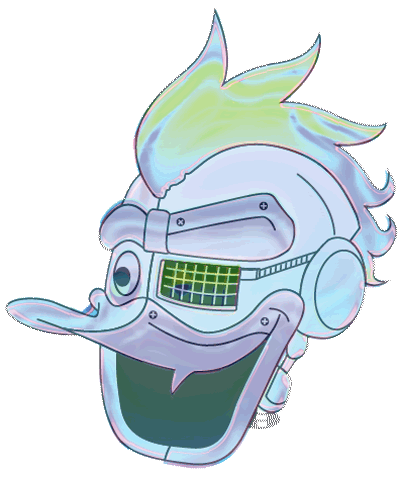

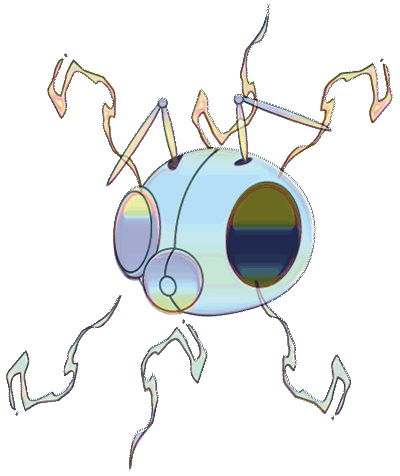
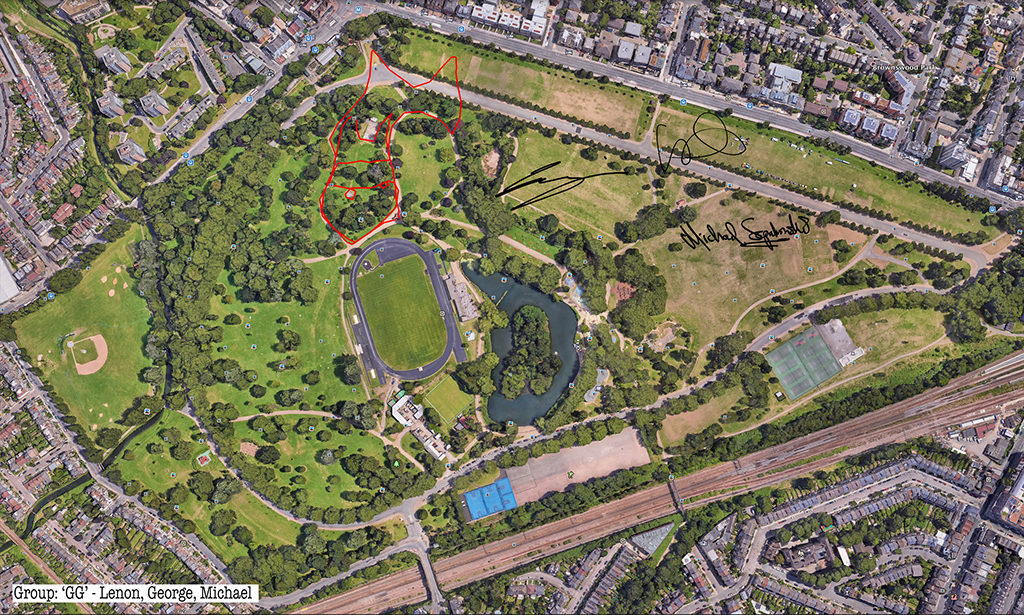
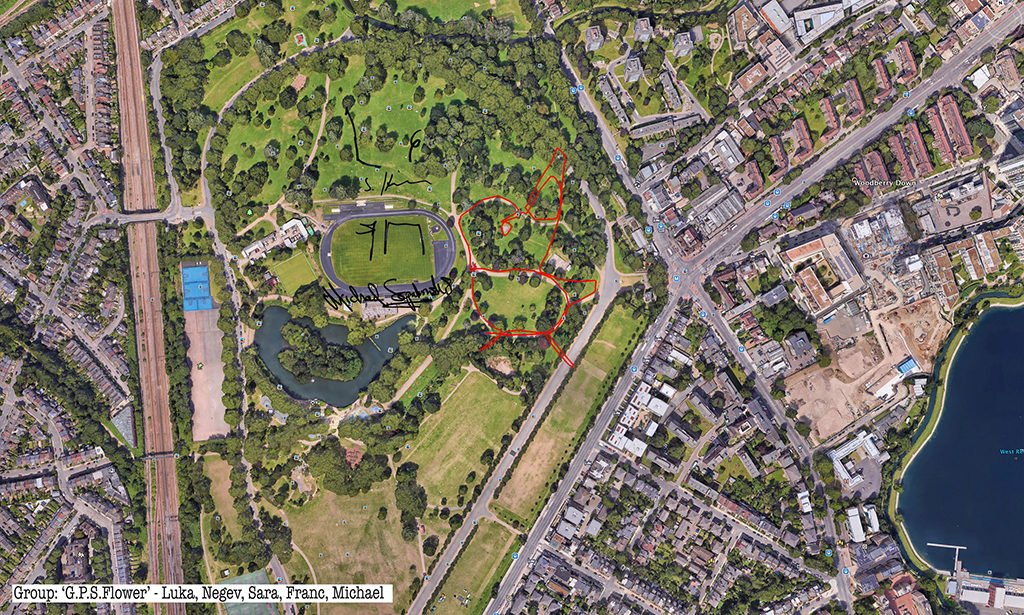
Recently I was approached to conceive and run an outreach project to accompany a solo show of work by Eduardo Kac at Furtherfield Gallery in North London’s Finsbury Park.
Among the works on show was one of Kac’s Lagoogleglyphs, large scale stylised representations of rabbits (something of a signature obsession for him) painted in some sort of sportsground emulsion directly onto a section of the park and allegedly of a scale which make it harvestable by the satellites Google rents for its various mapping activities.
Being completely frank, I have to say I entertained a degree of scepticism about Kac’s work—some of it falling within, in my view, one or both of two entertainment based metaphors—the ‘one-liner’ and the ‘theme park’—neither particularly positive elements of my critical lexicon.
Be that as it may, some of the work, particularly the less grandiose pieces (that delicate bunny flag flapping above the gallery!) were touched enough with real poetry to make me want to take up the challenge.
I say ‘challenge’ advisedly for I’m only ever interested in doing anything which in some sense challenges me and I also felt that my ambivalence about Kac would result in anything I ended up making containing a return element of ‘challenge’ or, perhaps more gently put, practical critique.
The word challenge also described the sense I had of wanting to counterpose collaboration, the collective, the everyday, to the artist with a capital ‘A’; of going some way to claiming art as a way of seeing and feeling and thinking together for All ( also with a capital ‘A’).
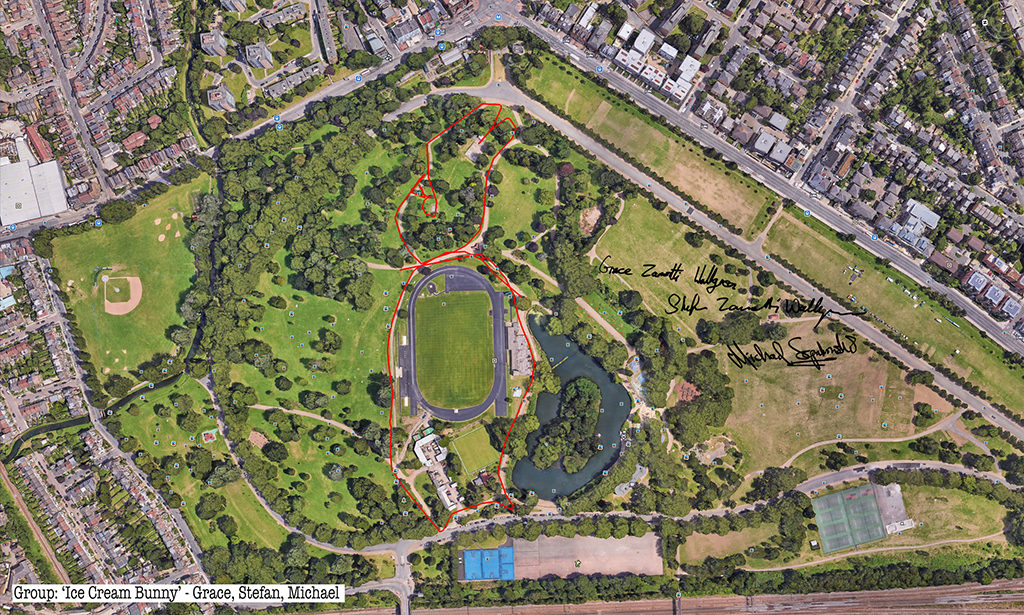
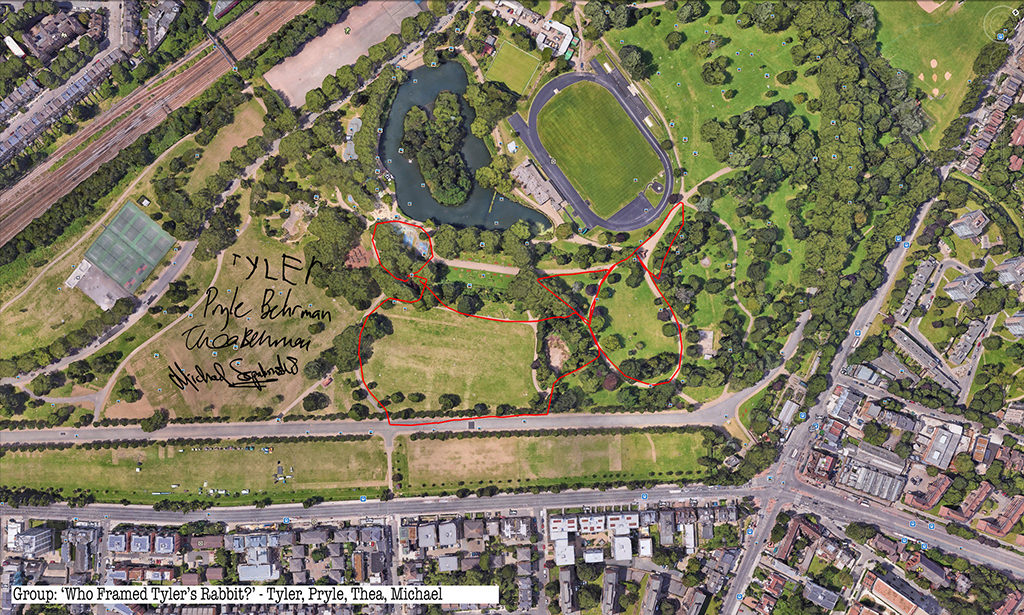
Reaching back in memory I pondered two remix/homage projects from the noughties which somehow straddled, in a pleasantly clunky fashion, practices both cutting edge digital (at least in their original moment) and time honoured too.
Apposite and practical stimuli for my 2018 purposes, they suggested elegant pathways to both honour previous work and to gently…um… stress-test it.
Both evinced rich humour, a warmth and a concomitant refusal to take themselves too seriously, qualities lacking in much contemporary art and both had a kind of performative klutziness I found entirely engaging.
Both were made in the first years of this millennium when digital and particularly online art was a wild west with a few fragile homesteads scattered here and there and not the orderly space it is today colonised almost entirely by the mainstream art world or commerce or both.
I recalled first a project by Nathaniel Stern where he hired South African billboard sign writers to paint physical representations of various, mostly art related, web pages.
The second was artist duo MTAA’s remix of Tehching Hsieh’s One Year Performance project, an endurance piece where Hsieh had forced himself to punch a timeclock on the hour, every hour for a whole year.
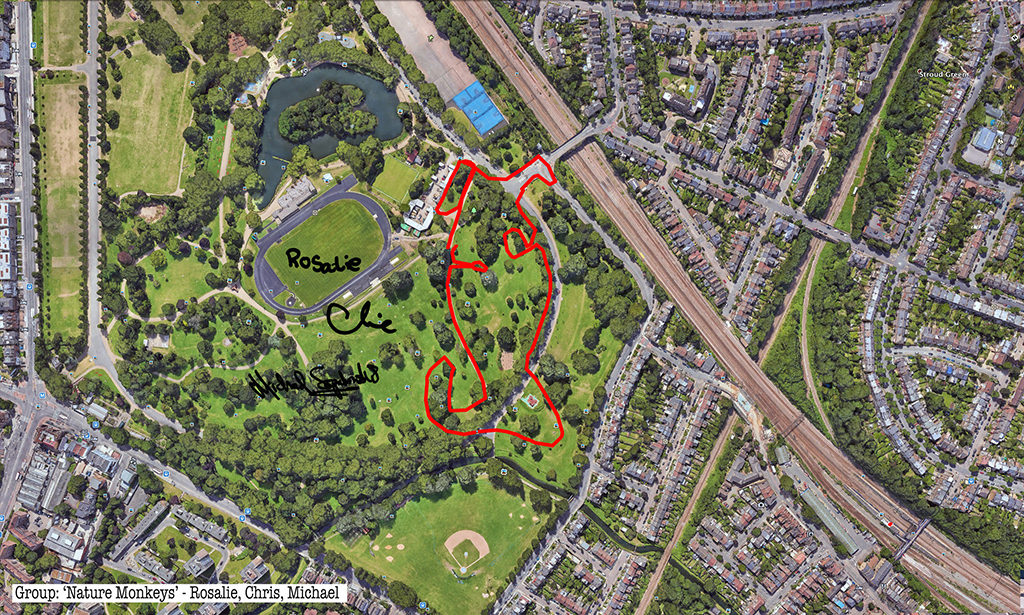
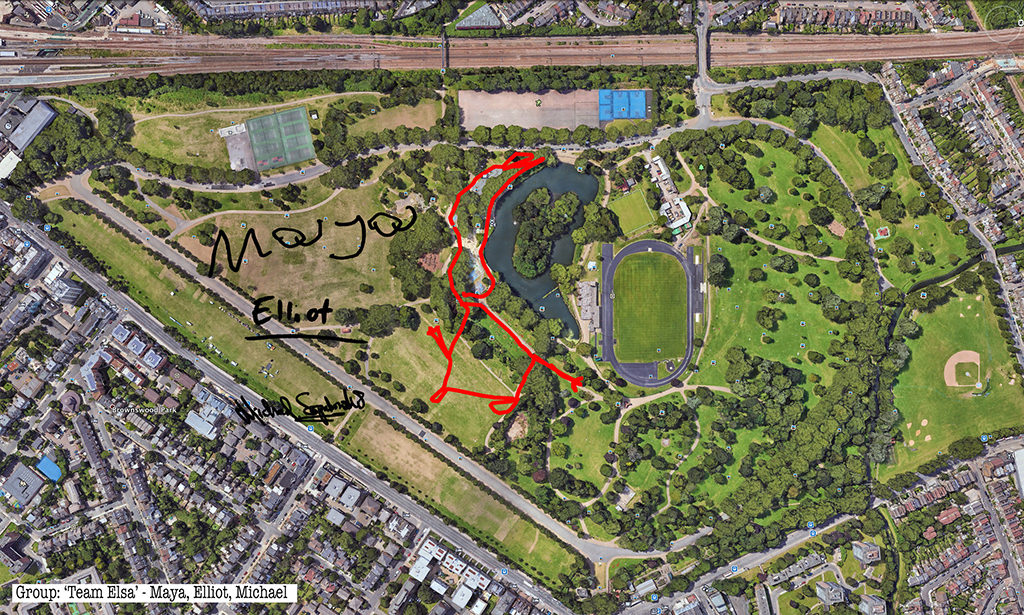
Reversing the premise MTAA’s Whid and River posted a database of video clips of themselves sleeping, eating, inhabiting the space and left it to the online viewer to watch these being digitally assembled (by Flash—remember that?) into a simulacrum of the original over the assumedly continuous period of a year.
Armed, fortified, prepared thus, I set to work—but I still needed a concrete plan and methodology.
Being a keen runner and the project taking place in a London Park in which I had run a 10k not long before (and now having endurance floating near the top of my mind) I felt some kind of park related physical activity would be an element and this would be a way of coming closer to those who loved the park but for whom the art gallery might not be their first association.
But still I lacked the concrete rabbit themed activity which would offer genuine practical, meaningful and autonomous artistic engagement and creation to participants.
I did not want to control what those participants would do but give them a clearly defined (clearly defined enough that all inputs from three separate days of activity could be brought together into a final unified work) and interesting task within which they would need to deploy creativity, focus and skill.
The fad for exercise related GPS devices had previously passed me by but one day whilst running with my daughter, who uses her phone and GPS enabled software to document her running in data and map form, I had a small epiphany—here there (might) be rabbits.
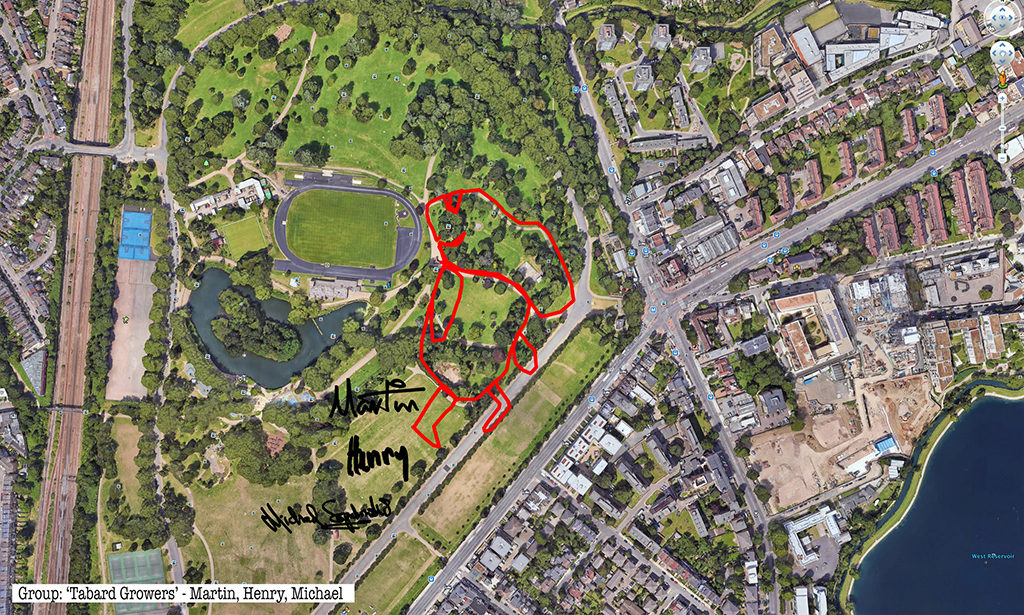

Rabbits, giant GPS rabbits, first planned and sketched by participating teams in marker pen over a satellite image of the park—ears, eyes, paws, body, fluffy tails emergent within its various paths and trails and features and obstructions.
And then, using these maps, we would carefully and attentively walk-out each monster rabbit trapping and freezing it as a succession of data, a series of co-ordinates in the memory of the GPS watch I would wear, finally to be reconstitututed as a continuous line drawing in turn fed back into a fresh satellite view of the park.
But that succession of co-ordinates, actuated by the actual movements of the human body (like a giant pencil lead or nib or brush) will resolve itself into something ancient—line, preconceived and then drawn out by human beings.
Being, together, both the very oldest form of mark making and something blink-of-an-eye recent too (well, as recent as the noughties efflorescence of so-called locative media which I shamelessly pillaged here.)
Inaccuracy in some measure a feature of both ancient and modern—the error margin of even GPS and GLONASS together, two sets of four satellites working in concert; the mix of will and skill and the fallibility and triumph too of flesh and bone and sinew which is part of what thrills and moves us in the arts.
This is what I had in mind.


Repeatedly outlining then co-performing an activity which I learned to summarise simply and precisely, almost automatically, one might have thought boredom or a dozy, parroted, routine might threaten.
And how anxious I was each time as to whether and in what way each new team would engage with—buy into—adopt as theirs, as ours—the task.
But how striking the variation both in the simple, basic act of depicting in continuous line each new rabbit-of-the-imagination and the forty minutes lively sociability surrounding that initial sketching and subsequent walking-out.
Balancing the competing claims of making something serious, something with some kind of weight, some satisfying end product, whilst making space for others’ fun and dreams and and will and whimsy is neither easy nor is it trivial.
In the end people seemed to have a good time, they seemed at ease, went at it with a will and—it seems to me—something rich and affecting emerged.
Thanks to all at Furtherfield and thanks—no, not thanks, but credit—to my fellow artists: Alessandra, Anna, Candy, Chris, Elliot, Evgenia, Franc, George, Grace, Henry, Jade, Lenon, Léonie, Lucian, Luka, Martin, Matthew, Maya, Negev, Niyah, Pryle, Rémi, Rosalie, Sara, Shiri, Stefan, Thea and Tyler.
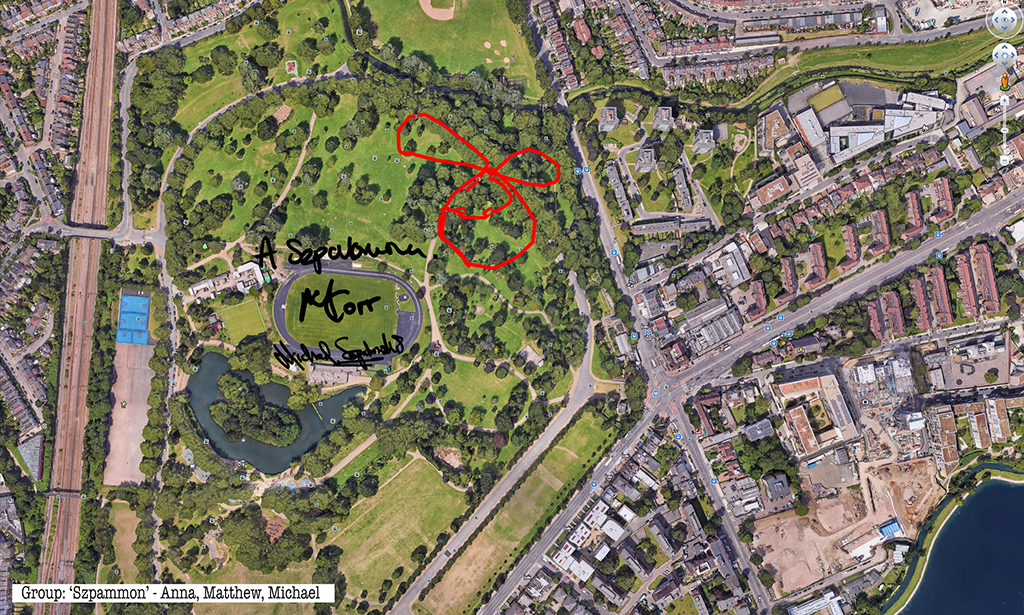

Mark Hancock discusses the politics and artistry of Janez Janša’s identity interventions in the context of their recent challenge at the Parliamentary Elections in Slovenia, in June 3rd 2018.
Ideas firmly deduced, tested against all variables and tentatively sent out into the world for appraisal by others, soon betray us as they bend to the whims of anyone they encounter. But that’s the nature of the malleable, post-digital world we live in. Ideas have to adapt and change to suit the warp and weft of the society if they are to survive in some form. How do we lock down our ideas into their final form? And what level of commitment can we expect from our ideas even if we apply intellectual property rights and that centuries-old mark of authenticity, the signature? The art world is particularly vulnerable to the conceit of signed authenticity. A signature often being the only guarantee that you’ll see any return (financial, reputational or otherwise) on your investment. If you really want to play with systems of power and bureaucracy, try altering artist names.
Davide Grassi, Emil Hrvatin and Žiga Kariž all changed their names to Janez Janša in 2007, joining the conservative Slovenian Democratic Party (SDS) at the same time, to explore the bureaucratic and political systems of their home country, Slovenia. The foundation of their actions ever since has been the question: what power exists in a name? And not just the art power system, but what political forces come into play when that name also belongs to the leader of the Slovenian Democratic Party, Janez Janša, (Prime Minister 2004 to 2008 and then again in 2012 to 2013). Incidentally, or perhaps not, Janez Janša, the politician was born Ivan Janša. The renaming of the three artists becomes a sort of double bluff when you also start to ask who the ‘real’ Janez Janša is.
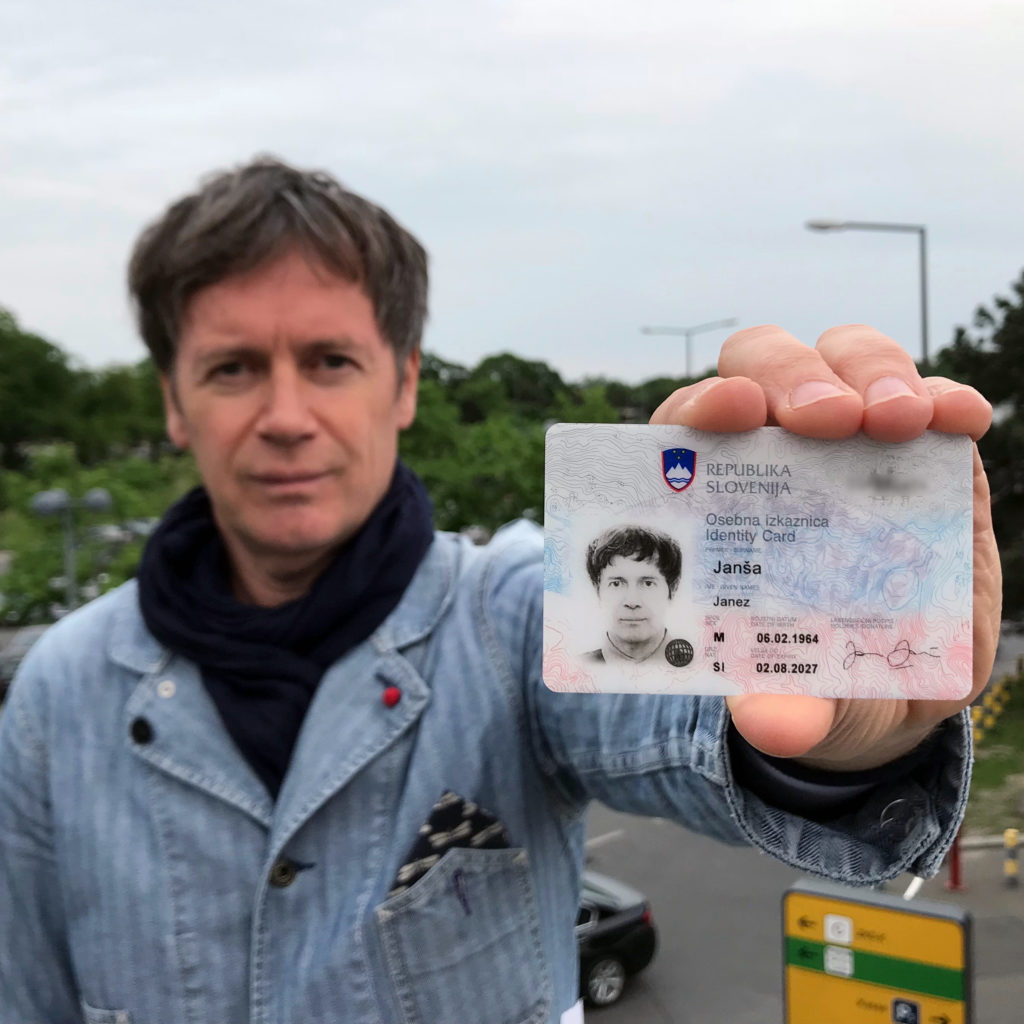
It would be easy to assume that the work of Janez Janša is simply another playful, flaccid baiting of the art world and right-wing political hegemonies. All too often work that challenges the political system might as well be challenging the rules of the Italian Football League, for all the difference in the world it makes beyond the enclosed loop of the art community. There’s only so far that insulting the work of Damien Hirst with another work of art can get you. But the Janez Janša artists have chosen to pierce through the membrane of the art world and make a social difference.
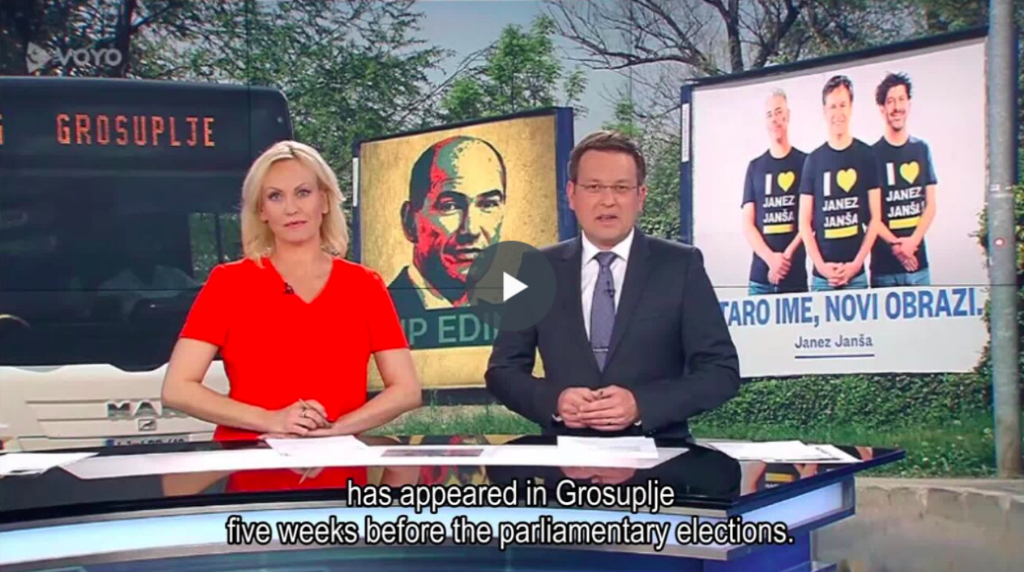
In the Slovenian Parliamentary Elections on the 3rd June 2018, one of them ran as a member of the opposition party, Levica (The Left) in Grosuplje the home district of the ex-Prime Minister, Janez Janša. In a press release, Janez Janša (the artist) said: “Running for parliament is a logical consequence of the view I have towards society. I care about what is happening. I react to things. I want to change them. (…) Society must be organized in such a way that the state begins to serve its citizens, as opposed to serving capital. Capital has no interest either for society or for art or for the individual.”
There is something inherently political in multiple authors using a single name, at least if you cast an eye over recent history. Reference points include Wu Ming, the Italian author collective that produced a number of literary works (they published a best-selling novel, Q, in 1999). They evolved from the Luther Blissett collective, whose playful, socially engaged activities defy the concept of the singular creative voice. This concept seems so alien to much of the mainstream media, particularly in Wu Ming’s home country of Italy, where they have been accused of everything from cybercrime to the less savoury aspects of rave culture. It’s this uncertainty about ownership that seems to bring a nervous lump to the throat of media and political gatekeepers. Perhaps this revolves around two questions so central to capitalism: If you’re doing nothing wrong, why hide behind a nom de plume or a collective? And, who do I send the check to, if I want to buy an Art?
On top of this, copyright issues become complex when the roster of names increases as well. Because we still want ideas to be owned, even when they are expanded through homages and pastiches. Copyright, as the attorney representing the Janez Janšas points out, is a legal construct, protecting, “original artistic (and scientific) creations, which are expressed in any way. A work is protected by copyright only if it was created by a human being (an author) and bears a stamp of author’s personality.” With work by Luther Blissett and Wu Ming, at least the authors can be understood as ‘artists’, even anonymously. Janez Janša, Janez Janša and, last but not least, Janez Janša have layered this authorship of their artwork with another layer of copyright/ownership complexity.
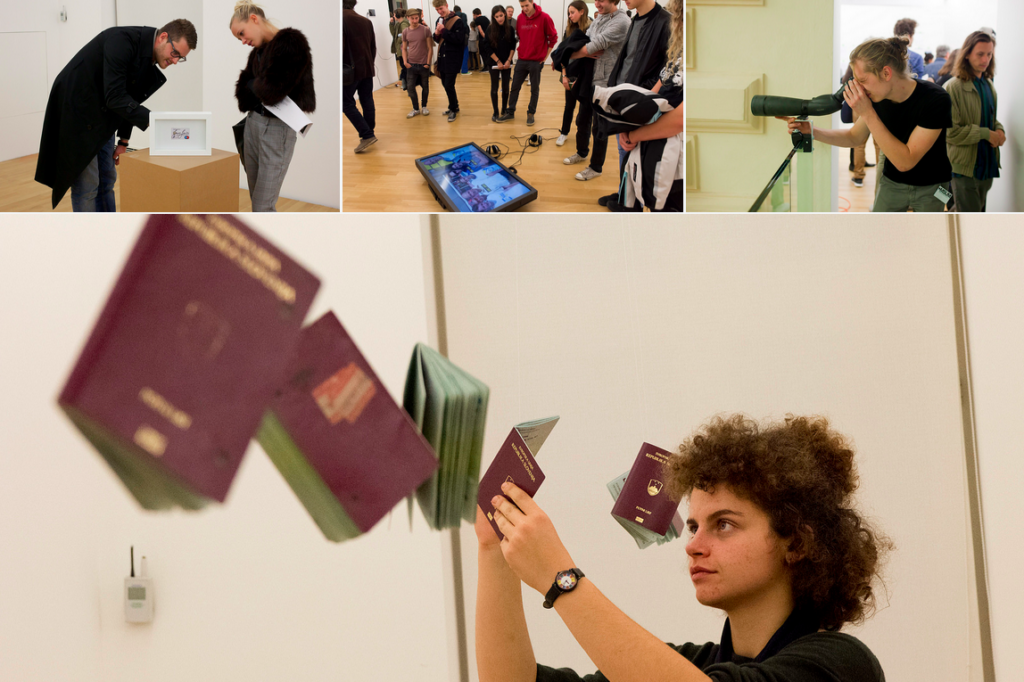
They refer to this work as collateral art, a phrase resonant with the phrase collateral damage, used to describe the acceptable casualties of battles. Collateral art is the acceptable damage on their ideas and projects from engagement with companies and institutions: ID cards, membership cards, the whole panoply of detritus that comes with the work. The artists want this collateral art, often customised by companies on request, to question the relationship between artworks and functional objects, “exploring post-Fordist means of production.” Any art historians still trying to shoehorn the belief of the gifted singular genius crafting his (note the gender pronoun: now discuss) solo masterpiece, probably hasn’t been paying close enough attention. The individual work of art often only becomes such with the signature of the artist attached as providence. When the work of art carries the signature of a non-artist though, can it still be brought into the art world as a valid comment on… anything? Paperwork sent to institutions by Janez Janša, and signed by an official becomes art. But whose art?
The answer, of course, is that it is their art. Whatever bureaucratic grindstone the works have been milled under, they ultimately belong back with the artists. It is they who return the work back to the art world through the exhibition. The exhibition co-produced by Moderna galerija (MG+MSUM) and Aksioma – Institute for Contemporary Art, Ljubljana, and curated by independent curator Domenico Quaranta, in 2017, was a chance to display and reflect back on ten years of work by the artists. Called the Janez Janša® exhibition, on display were works including Signatures (2007 – ongoing) which explored interventions of the Janez Janša name into public spaces, such as the Hollywood Walk of Fame (Signature, 2007), or Signature (Copacabana), in Rio de Janeiro, 2008. Playfully appearing in numerous locations around the world. Or Mount Triglav on Mount Triglav, an action performed in August 2007. This action commemorated “the 80th anniversary of the death of Jakob Aljaž; the 33rd anniversary of the Footpath from Vrhnika to Mount Triglav; the 5th anniversary of the Footpath from the Wörthersee Lake across Mount Triglav to the Bohinj Lake; the 25th anniversary of the publication of Nova Revija magazine and the 20th anniversary of the 57th issue of Nova Revija, the premiere publication of the SLOVENIAN SPRING; this was a re-enactment of Gora Triglav (Mount Triglav), by the OHO group in 1968 and the latest in a chain of re-enactments, as it was also performed by in 2004 by the Irwin Group.


The conference in the same year, Proper and Improper Names: Identity in the Information Society conference, hosted by Aksioma – Institute for Contemporary Art, Ljubljana, and curated by Marco Deseriis in 2017, invited speakers including Natalie Bookchin, Marco Deseriis, Kristin Sue Lucas, Gerald Raunig, Ryan Trecartin, Wu Ming. The subjects under discussion arose from Marco Deseriis’ book Improper Names: Collective Pseudonyms from the Luddites to Anonymous. Deseriis, as keynote speaker, talked about the genealogy of the improper name. This is Deseriis’s term for the use of pseudonyms by artist collectives, including Wu Ming (who presented a talk at the conference) and Ned Ludd, the fictional leader of the English Luddites.
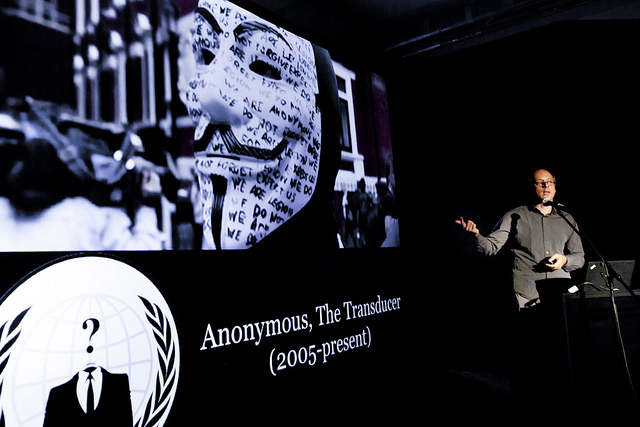
Releasing your ideas out in the wild doesn’t always guarantee they will come back to you unscathed or even return at all. The works of the Janez Janša collective are sent out to corporate systems, being adapted and altered, and returned. Or at the very least offering a challenge to accepted forms of ideological structures. In the Slovenian elections on 3rd June, the Slovenian Democratic Party (SDS) won with 25% of the votes. Levica won 9.0%. The SDS is a far-right, anti-immigration party, reflecting the increasing rise of right-wing parties across Europe right now. The leader of the SDS, Janez Janša, now has the opportunity to form a right-wing government. If this happens, and by the time you read this, it may well have, it would continue the shift in European Councils members towards the right.
There’s nothing new in declaring that everything is in flux. That’s the nature of our hyper-accelerated world. But right now there is a creeping sense that The Other is also to be viewed as The Enemy. The social, political value of art has to change to mean something in what is little short of a battle for a better society for ourselves and others across the globe if it is to have any value whatsoever. Janez Janša, Janez Janša and Janez Janša’s work reflect this evolution by being part of the society around them. Being part of the electoral system reflected this challenge and desire to be part of the real world and to make art mean something more than gallery space and conference papers. If art wants to survive and continue to belong to everyone, then it needs to be part of the world we are living in right now. No one work of art ever changed the world, but it helps us unravel and see through the propaganda of systems. We all need to become Janez Janša®.
The final outcome of the recent Slovenian Elections remains uncertain as Social Democratic Party’s Janez Janša attempts to form a coalition government.
More images at Flickr – https://bit.ly/2yniHYL
More about Janez Janša – http://www.janezjansa.si/about-jj/
SEE IMAGES FROM THE PRIVATE VIEW
Would you like to monetise your social relations? Learn from hostile designs? Take part in (unwitting) data extractions in exchange for public services?
Examining the way that the boundaries between ‘play’ and ‘labour’ have become increasingly blurred, this summer, Playbour: Work, Pleasure, Survival, will transform Furtherfield Gallery into an immersive environment comprising a series of games. Offering glimpses into the gamification of all forms of life, visitors are asked to test the operations of the real-world, and, in the process, experience how forms of play and labour feed mechanisms of work, pleasure, and survival.
What it means to be a worker is expanding and, over the last decade, widening strategies of surveillance and new sites of spectatorship online have forced another evolution in what can be called ‘leisure spaces’. From the self-made celebrity of the Instafamous to the live-streaming of online gamers, many of us shop, share and produce online, 24/7. In certain sectors, the seeming convergence of play and labour means work is sold as an extension of our personalities and, as work continues to evolve and adapt to online cultures, where labour occurs, what is viewed as a product, and even, our sense of self, begins to change.
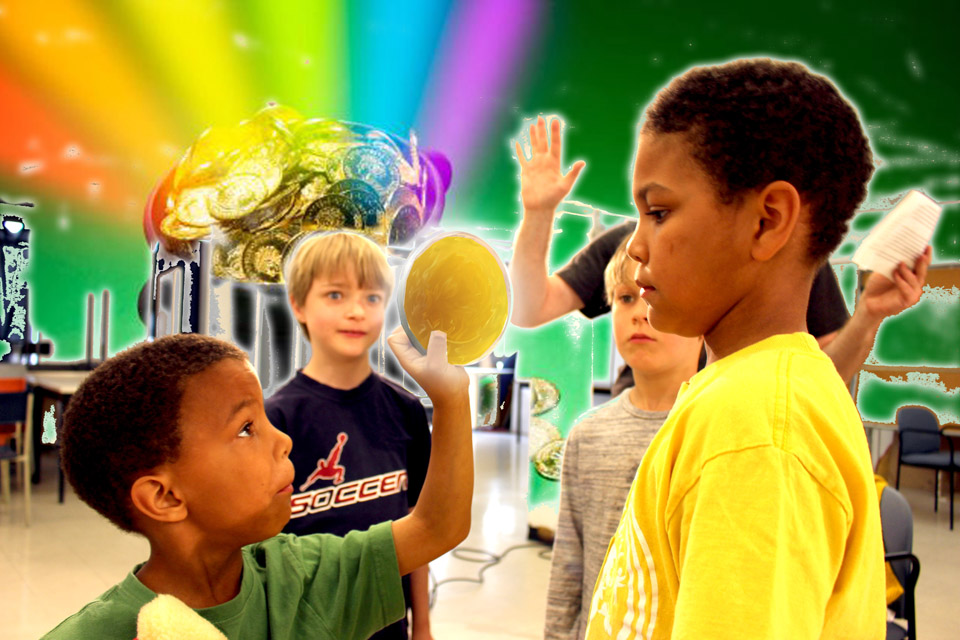
Today, workers are asked to expand their own skills and build self-made networks to develop new avenues of work, pleasure and survival. As they do, emerging forms of industry combine the techniques and tools of game theory, psychology and data science to bring marketing, economics and interaction design to bear on the most personal of our technologies – our smartphones and our social media networks. Profiling personalities through social media use, using metrics to quantify behaviour and conditioning actions to provide rewards, have become new norms online. As a result, much of public life can be seen as part of a process of ‘capturing play in pursuit of work’.
Although these realities affect many, very little time is currently given over to thinking about the many questions that arise from the blurring between work and play in an age of increasingly data-driven technologies: How are forms of ‘playbour’ impacting our health and well-being? What forms of resistance could and should communities do in response?
To gain a deeper understanding of the answers to these questions, we worked with artists, designers, activists, sociologists and researchers in a three-day co-creation research lab in May 2018. The group engaged in artist-led experiments and playful scenarios, conducting research with fellow participants acting as ‘workers’ to generate new areas of knowledge. This exhibition in Furtherfield Gallery is the result of this collective labour and each game simulates an experience of how techniques of gamification, automation and surveillance are applied to the everyday in the (not yet complete) capture of all forms of existence into wider systems of work.
In addition to a performance by Steven Ounanian during the Private View, the ‘games’ that comprise this exhibition are:
Lab session leads and participants: Dani Admiss, Kevin Biderman, Marija Bozinovska Jones, Ruth Catlow, Maria Dada, Robert Gallager, Beryl Graham, Miranda Hall, Arjun Harrison Mann, Maz Hemming, Sanela Jahic, Annelise Keestra, Steven Levon Ounanian, Manu Luksch, Itai Palti, Andrej Primozic, Michael Straeubig, Cassie Thornton, Cecilia Wee, Jamie Woodcock.
Curated by Dani Admiss.
Concept development Dani Admiss and Cecilia Wee.
Mask Making for Children
Sunday 22 July and 12 August 2018, 11:00 – 16:30
Furtherfield Gallery
FREE
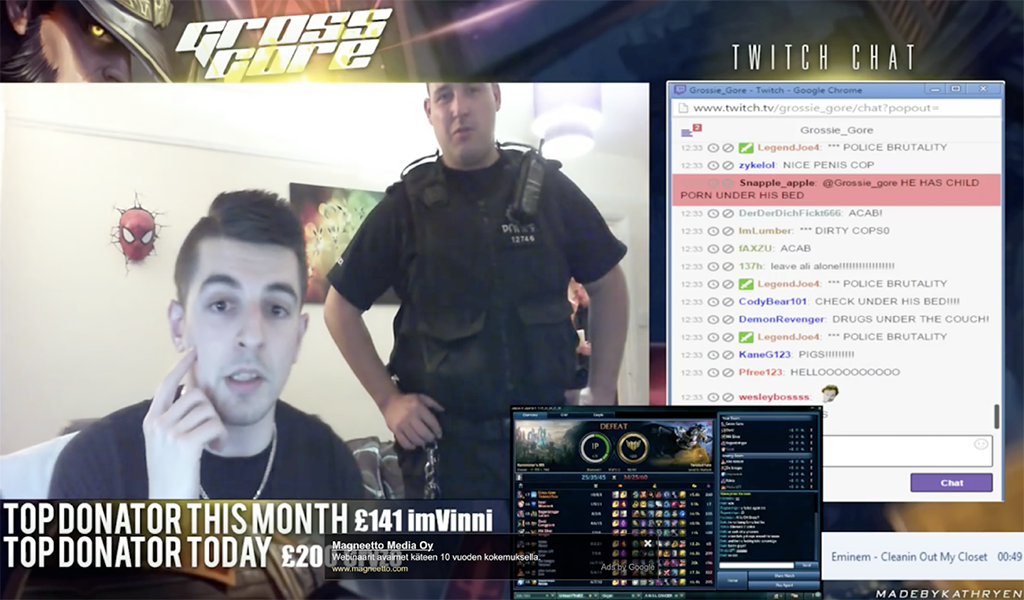
Dani Admiss
When I was 16 I was in a band. I couldn’t sing that well so I used to write lyrics (about vampires) and put them into Babelfish to translate them into French thinking it made me sound automatically cooler.
@daniadmiss
Kevin Biderman
First met you in a dial up world; green block letters on a black screen. Later we traversed through neon colours, pixelated images and imperfect designs. I always knew you were an army brat born out of apocalyptic fears but I never thought you’d turn your back on the counter-culture who raised you. Maybe there will be a third act…
@act3
Marija Bozinovska Jones
The internet has concurrently enhanced and diminished life, yet I appear no longer able to recall life before it. Adding to Jameson’s quote: it is easier to imagine the end of the world, than the end of TECHNOcapitalism.
Ruth Catlow
I am a recovering Web Utopian – decentralised infrastructure does not, it turns out, lead automatically to decentralised power. However i am still most excited by art that happens in wild flows, through collaboration on open channels, rather than being owned, certified and traded like dead matter. I am Ruth and I am one of the voices and pairs of eyes.
@furtherfield
Maria Dada
I regularly translate whole books from German to English using Google Translate. I then take the transcripts and print them using lulu.com. I take pride in the design of the covers for each book. Not all of them are unreadable but most of them just sit on my shelf untouched.
@mariadada
Beryl Graham
I confess:
To buying a mobile phone so that I could text my sweetie.
To being mildly obsessed with weather apps that work best in the North.
To using online dating 15 years ago. The respectable Guardian rather than Tindr of course – hey I’m not an animal.
@berylgraham
Miranda Hall
After school, my friend and I would take screenshots of penises on ChatRoulette then save them in a desktop folder on the family computer called ‘cool fish’
@Miranda__Hall
Arjun Harrison-mann
For Much Longer than I Would Care to Admit, Every Since I Got Msn at the Age of 12, My Msn Profile Picture Was (and I Just Checked, Still Is), a Photoshopped Collage of Michael Jordan.
@arjun_harrisonmann
Maz Hemming
When I was 11, lying about my age to sign up on msn chat to chat about neopets, I ended up as one of the chatroom moderators. Which sometimes ended up with me leaving the window open to idle overnight (or the room would close). On the bonus side when my parents ended up with a bill at the end of the month of £200 (which I didn’t know would happen) we did get broadband. Much cheaper.
@MazHem_
Robert Gallagher
The unread emails in my inbox currently outnumber my Twitter followers by a factor of 47.7461024499 to 1.
@r_gealga
Sanela Jahić
Once my inbox got flooded with promotions of an online store. So my boyfriend and I composed a simple bot, which took random quotes from our sci-fi eBooks collection and posted them as customer reviews on their product pages.
Annelise Keestra
Until more recently than I would admit, I genuinely didn’t think there was any correlation between the file size of a download and data use. As if, there were two kinds of “GB”. Please don’t judge me.
@aut0mne
Steven Levon Ounanian
I think the internet loves me, but just doesn’t know how to show it.
@levontron
Manu Luksch
Our dream rewired. Our powers of prediction grow with every new circuit crammed in. Leap into tomorrow – one trillion calculations a second. And it grows more powerful, becomes smaller. Smart, mobile, personal. Today – in our pockets. Tomorrow – woven into our bodies. Create and share, everything, everywhere. Life in the cloud… with a chance of blue skies. Our time is a time of total connection. Distance is zero. The future is transparent. To be, is to be connected – the network seeks out everyone.” (Dreams Rewired; 2015 – my latest feature film about our hopes and fears of being hyper-connected).
@ManuLuksch
Itai Palti
I started visiting an architecture news forum as a teenager, excited about updates on local building projects. I still visit regularly for the updates, but also make sure to check on an exceptionally cringeworthy, decades-long feud between a couple of regular posters. I think they’d really miss each other if it all stopped.
@ipalti
Joana Pestana
Back in 1999, frustrated, I nurtured no love for my iMacG3 as I had to bare with 1-song-download-per-week for not having Napster.
@joanampestana
Michael Straeubig
Before social networks and Reddit, newsgroups were the places for online discussions. Catering to my interests was comp.ai.philosphy, a group notorious for debates going haywire.
Once I had a very heated discussion with someone I considered to be an immature and irrational teenager. It turned out it was a professor in Artificial Intelligence.
@crcdng
Cassie Thornton
I own/owned these URLs: bizzykitty.com, temporaryartbeautyservices.biz, infinitemuseum.com, evilarchitexture.net, teachingartistunion.org, sfluxuryrealestatejewelry.org, mastercalendar.biz, debtimage.work, institutionaldreaming.com, poetsecurity.net, universityofthephoenix.com, debt2space.info, secretchakra.net, wombco.in, givemecred.com, wealthofdebt.com, strikedebtradio.org, matterinthewrongplace.info, futureunincorporated.com, feministeconomicsdepartment.com, projectherapy.org, and many more I will never remember.
@femnistecondept
Cecilia Wee
The first time I went on the internet was about 1 year after Cyberia cafe opened in central London. I somehow convinced my mum to make a detour from a shopping trip so I could go online to look at 2 websites. Everyone else there was working very hard.
@ceciliawee
Jamie Woodcock
I decided it would be a fun idea to learn to play League of Legends as part of the fieldwork for an esports project. However, I was so bad at it that instead I had to study before playing, reading up on guides and watching streams/videos.
@jamie_woodcock
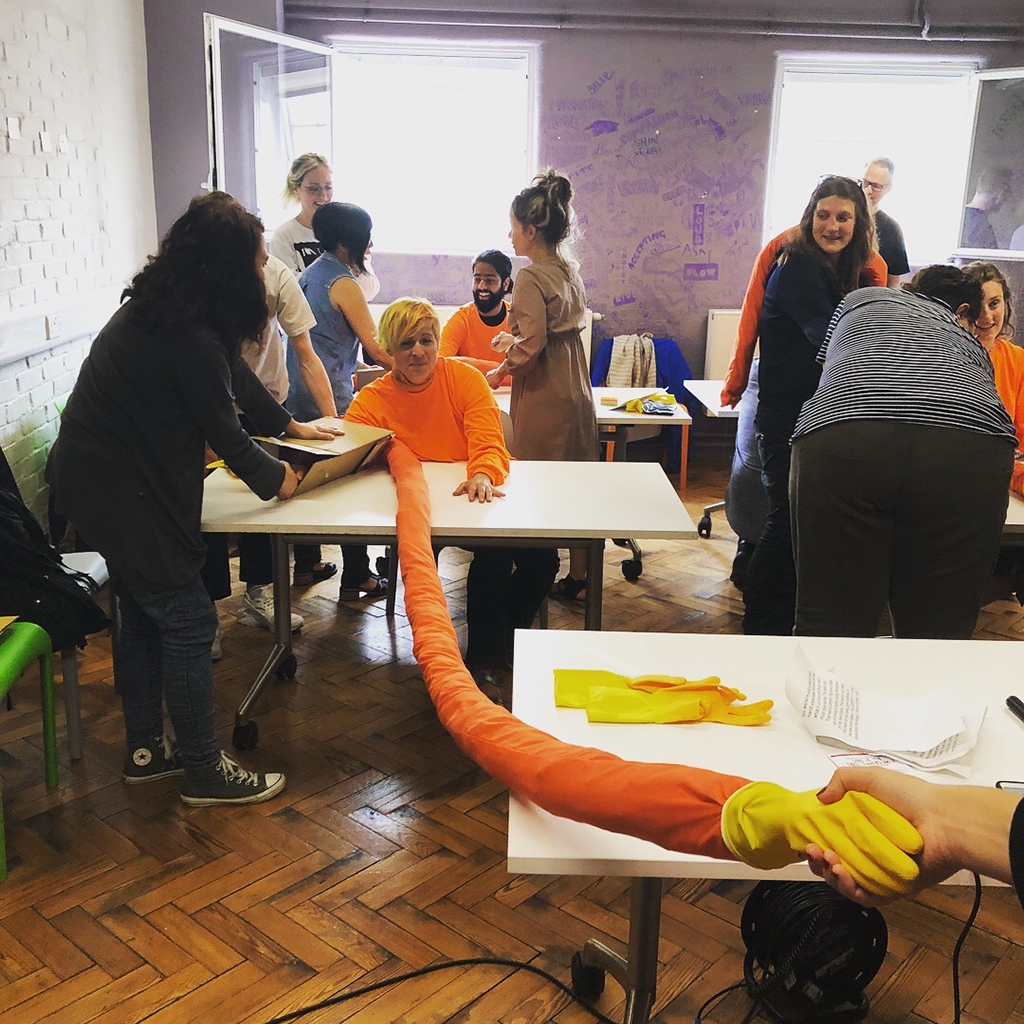
In the lead up to Furtherfield’s Playbour: Work, Pleasure, Survival exhibition Maria Dada, Miranda Hall and Cassie Thornton will be taking over the social media channels on Twitter, Instagram, and Facebook. Each micro-commission is an online space to take in different directions related ideas and themes of #playbour.
Our first week kicks off with Maria. Researcher in the fields of design and material culture, Dada’s Confessional Viral Hoax Engine brings together an interest in the infrastructures and processes used to spread misinformation online with themes of transparency, anxiety, and virtue signalling.
The second week is headed by Miranda Hall, who is a freelance journalist and research assistant at SOAS specialising in digital labour.
In the final week Cassie Thornton, artist, activist and feminist economist, will take-over Furtherfield’s social media channels. You can learn more about her here and her new project being launched on Kickstarter. Her take-over explores ideas surrounding yoga, feminist economics, class war, collective revenge, and social technology.
Dani Admiss is an independent curator and researcher working across art, design, and networked cultures. Her work employs world-building and co-creation to explore changes happening to our social, technological, and ecological, contexts. She is particularly interested in working with others to understand not yet completed transformations of body, society, and earth, into global capitalist systems. She is Founder of Playbour: Work, Pleasure, Survival, an art and research platform dedicated to the study of the worker in an age of data technologies. daniadmiss.com
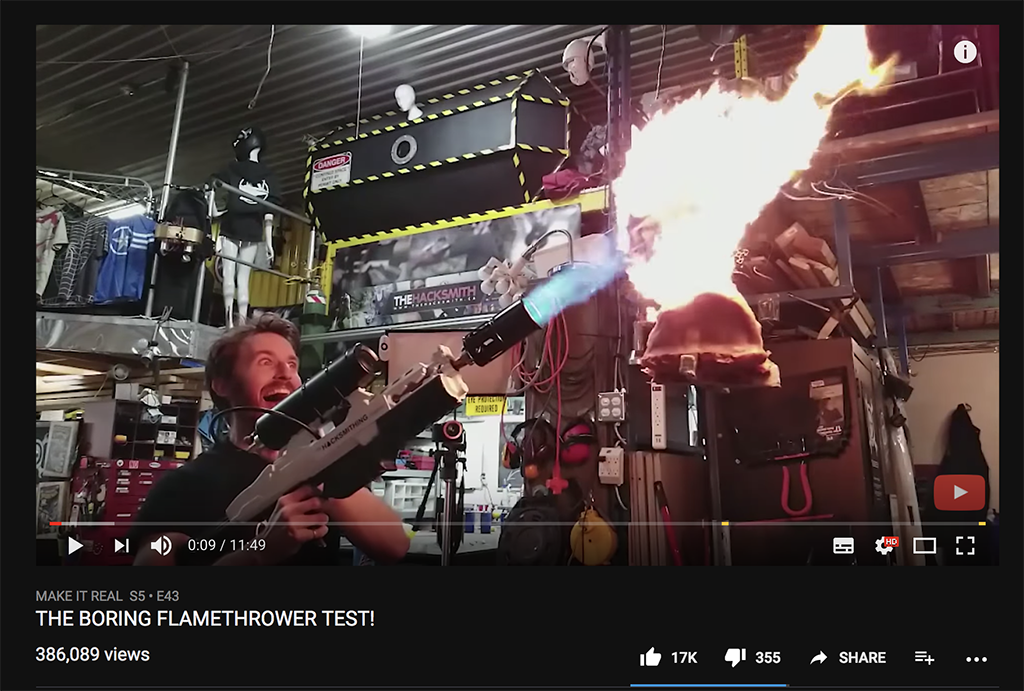
Furtherfield is an internationally renowned arts organisation specialising in labs, exhibitions and debate for increased, diverse participation with emerging technologies. At Furtherfield Gallery and Furtherfield Lab in London’s Finsbury Park, we engage more people with digital creativity, reaching across barriers through unique collaborations with international networks of artists, researchers and partners. Through art Furtherfield seeks new imaginative responses as digital culture changes the world and the way we live.
Furtherfield Gallery
McKenzie Pavilion
Finsbury Park, London, N4 2NQ
Visiting Information
This project would not have been possible without the kind support of our partners.
This project has been funded with the support from the European Commission. This communication reflects the views only of the author, and the Commission cannot be held responsible for any use which may be made of the information contained therein.
Playbour: Work, Pleasure, Survival, is realized in the framework of State Machines, a joint project by Aksioma (SI), Drugo More (HR), Furtherfield (UK), Institute of Network Cultures (NL) and NeMe (CY).
This is a long read by one of the inhabitants of the Zad, about the the fortnight rollercoaster of rural riots that has just taken place to evict the liberated territory of the Zad. It’s been incredibly intense and hard to find a moment to write, but we did our best. This is simply one viewpoint, there are over 1000 people on the zone at the moment and every one of them could tell a different story. Thank you for all the friends and comrades who helped by sharing their stories, rebel spirits and lemon juice against the tear gas.
“We must bring into being the world we want to defend. These cracks where people find each other to build a beautiful future are important. This is how the zad is a model.” Naomi Klein
“What is happening at Notre-Dame-des-Landes illustrates a conflict that concerns the whole world” Raoul Vaneigem
The police helicopter hovers above, its bone rattling clattering never seems to stop. At night its long godlike finger of light penetrates our cabins and farm houses. It has been so hard to sleep this last week. Even dreaming, it seems, is a crime on the Zad. And that’s the point: these 4000 acres of autonomous territory, this zone to defend (Zad), has existed despite the state and capitalism for nearly a decade and no government can allow such a place to flourish. All territories that are inhabited by people who bridge the gap between dream and action have to be crushed before their hope begins to spread. This is why France’s biggest police operation since May 1968, at a cost of 400,000 euros a day, has been trying to evict us with its 2500 gendarmes, armoured vehicles (APCs), bulldozers, rubber bullets, drones, 200 cameras and 11,000 tear gas and stun grenades fired since the operation began at 3.20am on the morning of the 9th of April.
The state said that these would be “targeted evictions”, claiming that there were up to 80 ‘radical’ Zadists that would be hunted down, and that the rest, the ‘good’ Zadists, would have to legalise or face the same fate. The good zadist was a caricature of the gentle ‘neo rural farmer’ returning to the land, the bad, an ultra violent revolutionary, just there to make trouble. Of course this was a fantasy vision to feed the state’s primary strategy, to divide this diverse popular movement that has managed to defeat 3 different French governments and win France’s biggest political victory of a generation.
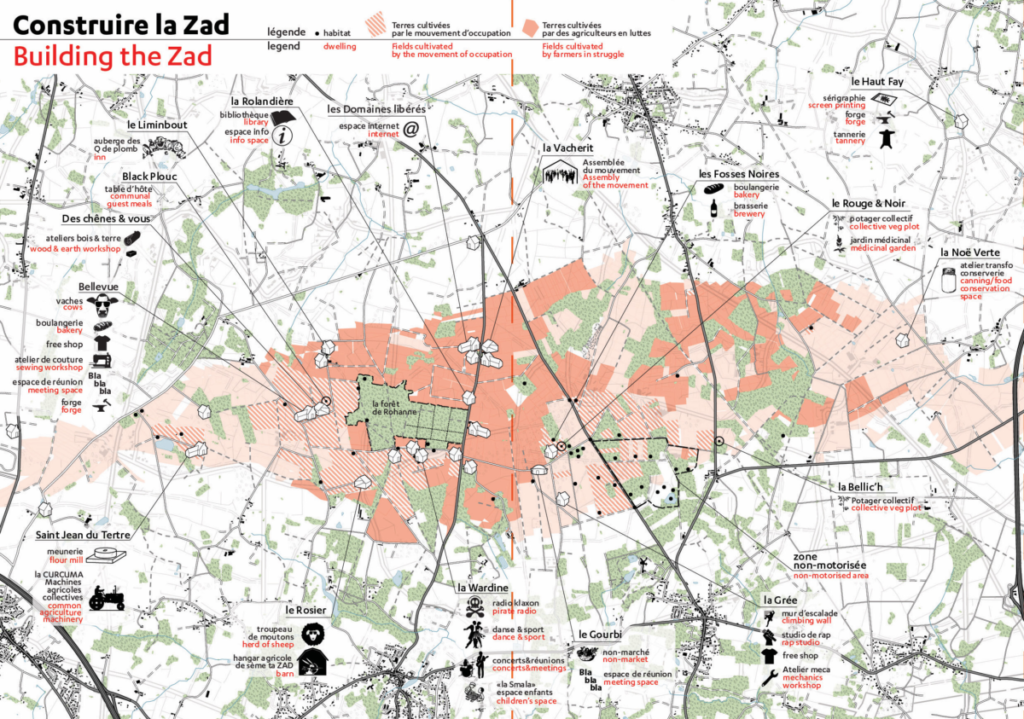
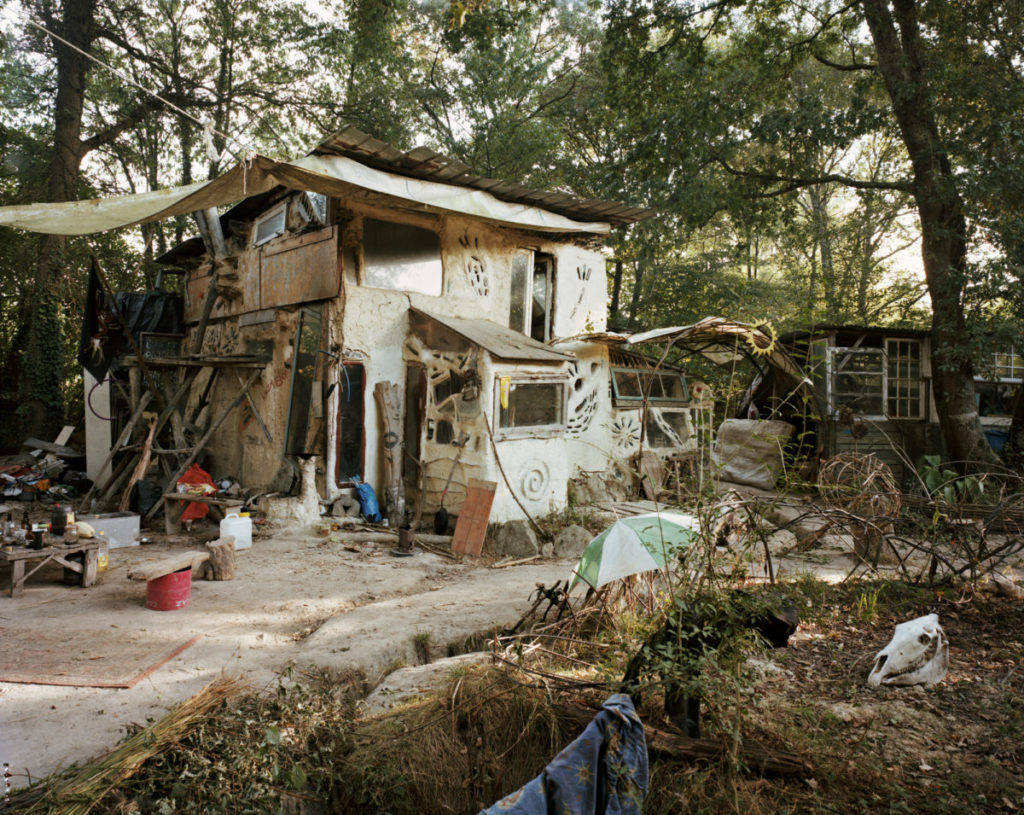
The zad was initially set up as a protest against the building of a new airport for the city of Nantes, following a letter by residents distributed during a climate camp in 2009, which invited people to squat the land and buildings: ‘because’ as they wrote ‘only an inhabited territory can be defended’. Over the years this territory earmarked for a mega infrastructure project, evolved into Europe’s largest laboratory of commoning. Before the French state started to bulldoze our homes, there were 70 different living spaces and 300 inhabitants nestled into this checkerboard landscape of forest, fields and wetlands. Alternative ways of living with each other, fellow species and the world are experimented with 24/7. From making our own bread to running a pirate radio station, planting herbal medicine gardens to making rebel camembert, a rap recording studio to a pasta production workshop, an artisanal brewery to two blacksmiths forges, a communal justice system to a library and even a full scale working lighthouse – the zad has become a new commune for the 21st century. Messy and bemusing, this beautifully imperfect utopia in resistance against an airport and its world has been supported by a radically diverse popular movement, bringing together tens of thousands of anarchists and farmers, unionists and naturalists, environmentalists and students, locals and revolutionaries of every flavour. But everything changed on the 17th of January 2018, when the French prime minister appeared on TV to cancel the airport project and in the same breath say that the zad, the ‘outlaw zone’ would be evicted and law and order returned.
I am starting to write 8 days into the attack, it’s Tuesday the 17th of April my diary tells me, but days, dates even hours of the day seem to merge into a muddled bath of adrenaline socked intensity, so hard to capture with words. We are so tired, bruised and many badly injured. Medics have counted 270 injuries so far. Lots due to the impact of rubber bullets, but most from the sharp metal and plastic shrapnel shot from the stun and concussion grenades whose explosions punctuate the spring symphony of birdsong. Similar grenades killed 21 year old ecological activist Remi Fraise during protests against an agro industrial damn in 2014.

The zad’s welcome and information centre, still dominated by a huge hand painted map of the zone, has been transformed into a field hospital. Local doctors have come in solidarity working with action medic crews, volunteer acupuncturists and healers of all sorts and the comrades ambulance is parked outside. The police have even delayed ambulances leaving the zone with injured people in them, and when its the gendarmerie that evacuates seriously injured protesters from the area sometimes they have been abandoning them in the street far from the hospital or in one case in front of a psychiatric clinic.
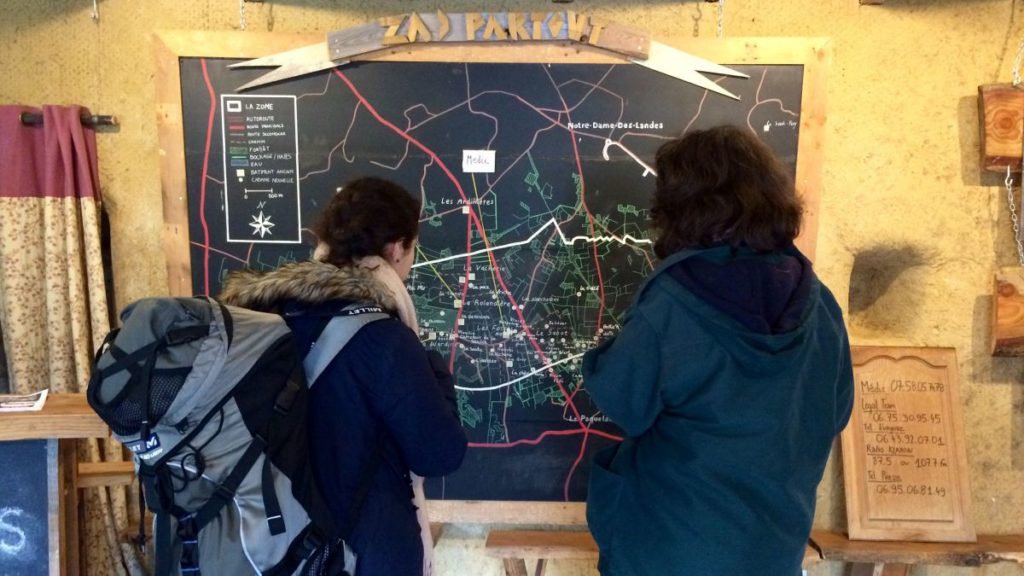
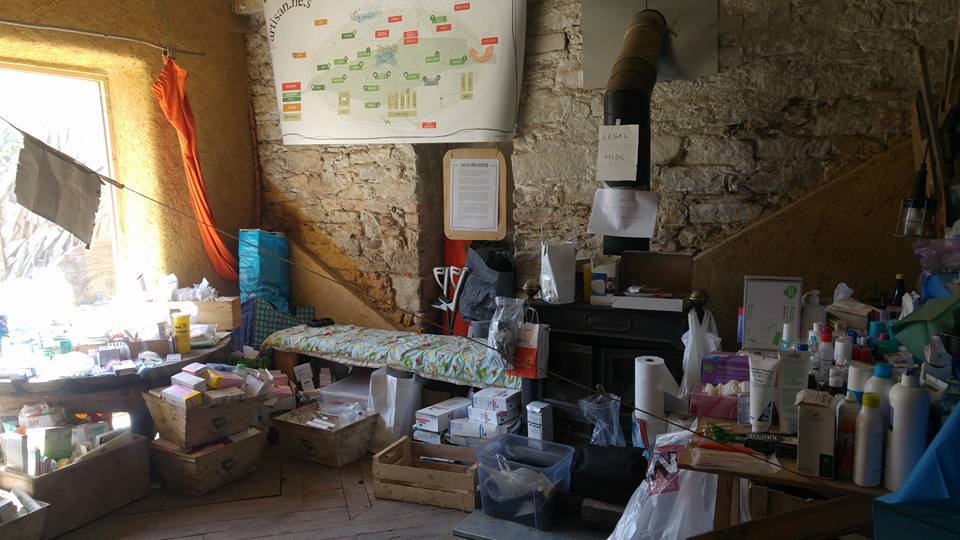
The thousands of acts of solidarity have been a life line for us, including sabotaged French consulate parkings in Munich to local pensioners bringing chocolate bars, musicians sending in songs they composed to demonstrations by Zapatistas in Chiapas, banners in front of French embassies everywhere – from Dehli to New York, a giant message carved in the sand of a New Zealand beach and even scuba divers with an underwater banner. Here on the zone three activist field kitchens have come to feed us, architects have written a column deploring the destruction of unique forms of habitat signed by 50,000 people and locals have been offering storage for the safe keeping of our belongings. A true culture of resistance has evolved in parallel with the zad over the years. Not many people are psychologically or physically prepared to fight on the barricades, but thousands are ready to give material support in all its forms and this is the foundation of any struggle that wants to win. It means opening up to those who might be different, those that might not have the same revolutionary analysis as us, those who some put in their box named ‘reformist’, but this is what building a composition is all about, it is how we weave a true ecology of resistance. As a banner reads on one of the squatted farmhouses here, Pas de barricadieres sans cuisiniers “There are no (female) barricaders without (male) cooks.”
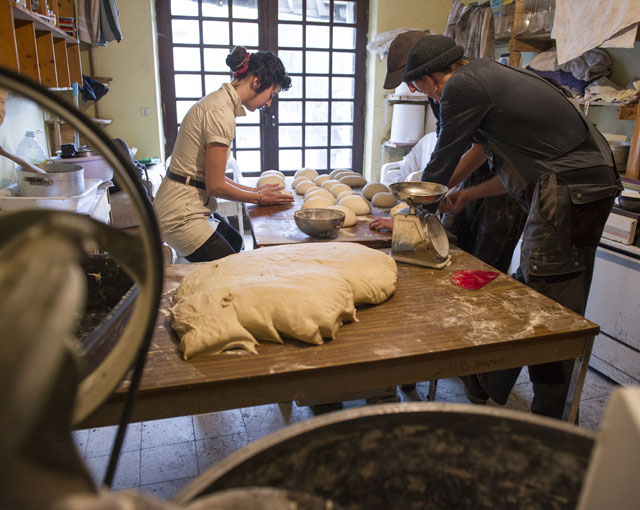
Today has been one of the calmest since the start of the operation, and it felt like the springtime was really flowering, so we opened all the doors and windows of house letting the spring air push away the toxic fumes of tear gas that still linger on our clothes. It feels like there is a momentary lull. For the first time since the evictions, our collective all ate together, sitting in the sun at a long table surrounded by two dozen friends from across the world come to support us. I hear the buzzing of a bee trying to find nectar and look up into the sky, its not a bee at all, but the police drone, come to film us sharing food, it hovers for hours. In the end this is the greatest crime we have committed on the zad, that of building the commons, sharing worlds together and deserting the pathology of individualism.
Two years before the abandonment of the airport project the movement declared in a text entitled The Six Points for the Zad: Because there will be no Airport, that we would, via an entity that emerged from the movement , collectively look after these lands that we were saving from certain death by concrete. A few months before the abandonment the form that this entity took was the Assembly of Usages. Soon after thethe airport was cancelled, we entered into negotiations with the state (via the prefet. Nicole Klein, who represents the state in the department) following a complicated week of pre-negotiations, where we were forced to open up one of the roads which had had cabins built on it since the attempted evictions of 2012. It seemed that the flow of traffic through the zone was the state’s way of telling the public that law and order had returned on the zone. (see the text Zad Will Survive for a view of this complicated period).
A united delegation of 11 people made up from the NGOs, farmers, naturalists and occupiers of the zone attended the negotiations and did not flinch from the demand to set up a collective legal land structure, rather than return these lands to private property and agro-business as usual. In the 1980s a similar legal structure was put in place following the victory of a mass movement against the expansion of a military base on the plateau of the Larzac in Southern France. With this precedent in mind we provided a legally solid document for a global land contract, but it was ignored, no legal grounds were given, the refusal was entirely political. Three days later the evictions began.
The battle lines were made clear, it was not about bringing ‘law and order’ back to the zone, but a battle between private property, and those who share worlds of capitalism against the commons. The battle of the Zad is a battle for the future, one that we cannot loose.
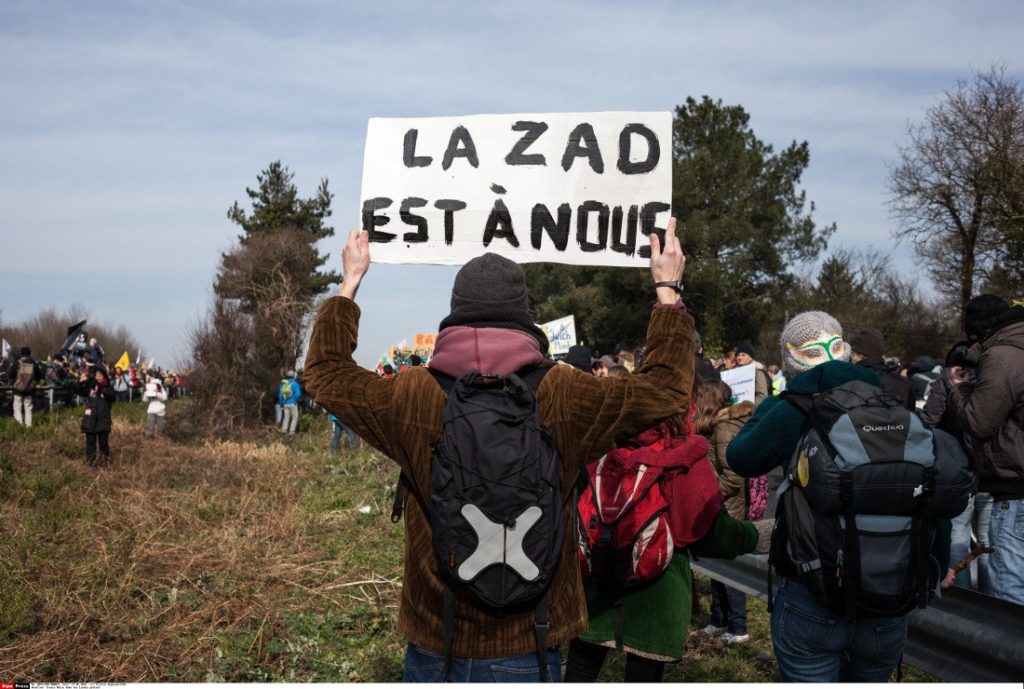
The telephone rings, it’s 3.20am, it’s still dark outside, a breathless voice says two simple words, “It’s begun !” and hangs up. Everyone knows what to do, some run to offices filled with computers, others to the barricades, some to the pirate radio (Radio Klaxon, which happens to squat the airwaves of Vinci motorway radio, 107,7, the construction company that was going to build and run the airport) others start their medics shift. Hundreds of police vans are taking over the two main roads that pass through the zone.
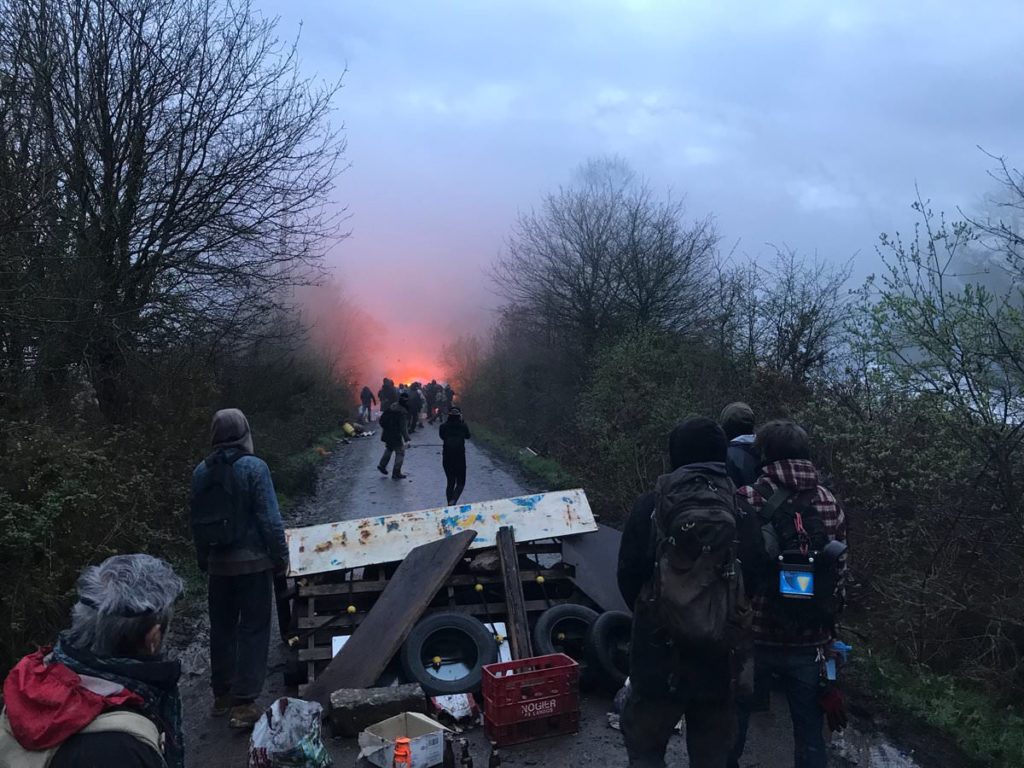
Fighting on one of the lanes manages to stop the cops moving further west. But elsewhere the bulldozers smash their way through some of the most beautiful cabins made of adobe and the wastes of the world that rose out of the the mud in the east of the zone, they destroy the Lama Sacrée with its stunning wooden watch tower, permaculture gardens and green houses are flattened and they rip gashes in the forest. A large mobile anti riot wall is erected by the police in the lane that stretches east to west, a technique that works in cities but in rural riots it’s useless and people spend all morning hassling them from every angle. Despite gas and stun grenades we hold our ground. Journalists are blocked for a while from entering, the police stating that they will provide their own footage (free of copyrights!). The “press group” gives them directions so that they manage to cross the fields and the pictures dominate the morning news.
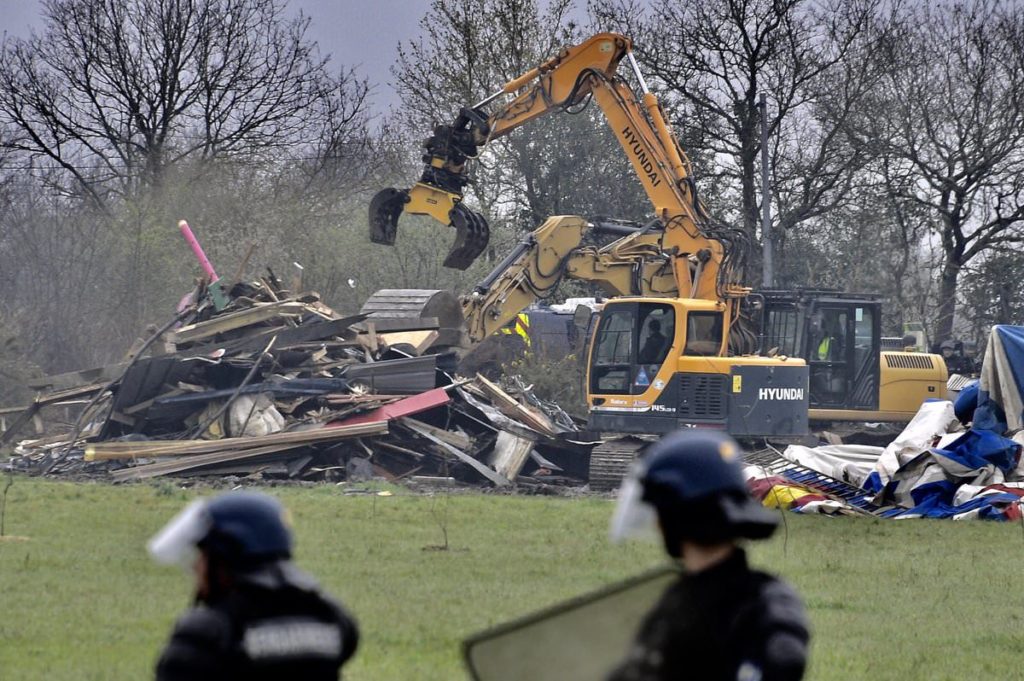
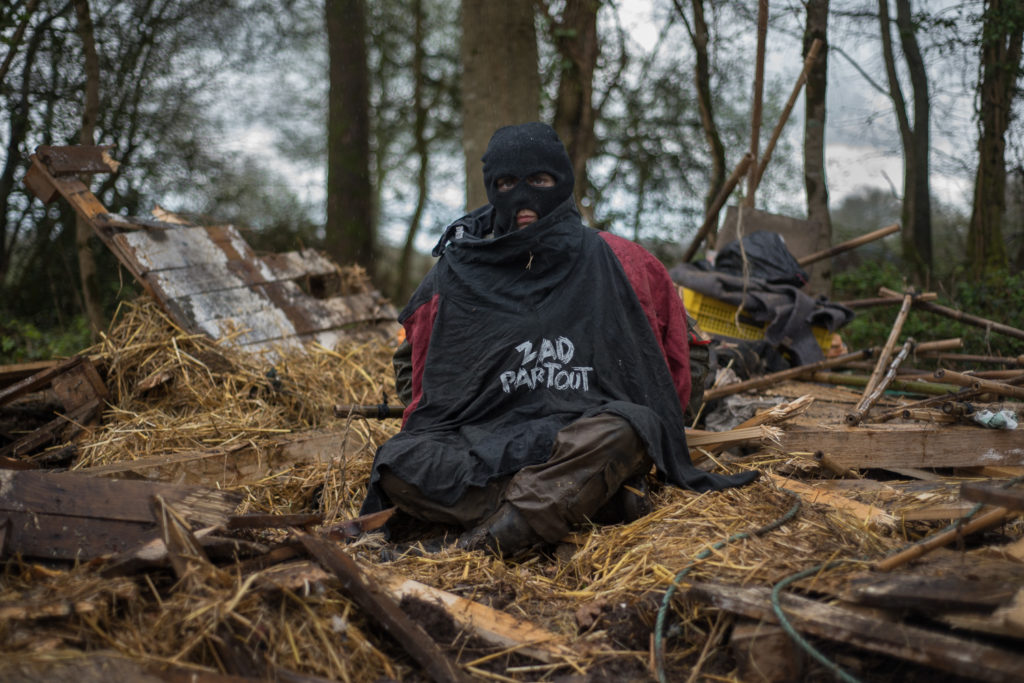
There are over a dozen of us are facing a line of hundreds of robocops at the other end of the field. One of us, masked up and dressed in regulation black kway is holding a golf club. He kneels down and places a golf T in the wet grass. He pulls a golf ball out of a big supermarket bag and serenely places it in the T. He takes a swipe, the ball bounces off the riot shields. He takes out another ball and another and another.

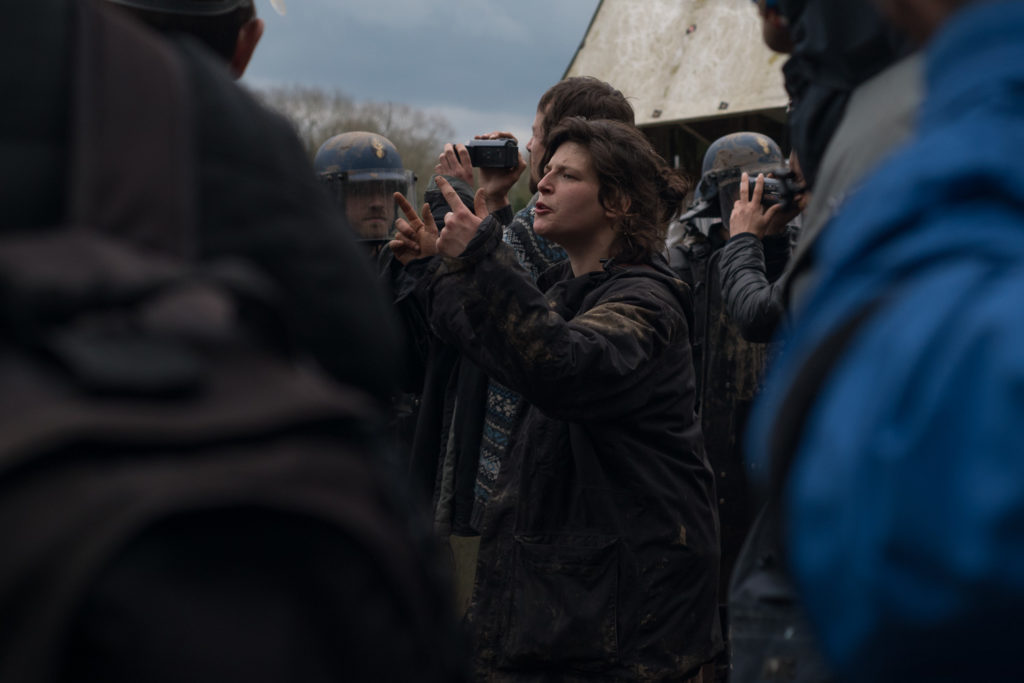
In the afternoon the cops and bailiffs arrive at the 100 noms, an off grid small holding with sheep, chickens, veg plots, and beautiful housing including a cabin built by a young deserting architect which resembles a giant knights helmet made with geodesic plates of steel. The occupiers, who have built this place up from nothing over 5 years are given 10 minutes to leave by the bailiff. Several hundred people turn up to resist, many from ‘the camp of the white haired ones’ which hasbrought together the pensioners and elders, who have called it a camp for “the youth of all ages” and have been one of the backbonesof this long struggle. There must be nearly 200 of us, at the 100 noms, this time no one is masked up. A massive block of robocops is coming up the path, some of us climb on the roof of the newly built sheep barn, others form a line of bodies pressed hard against the riot shields, we are peasants and activists, occupiers and visitors, young and old and they beat us, burn our skin with their pepper spray and push us out of the fields.
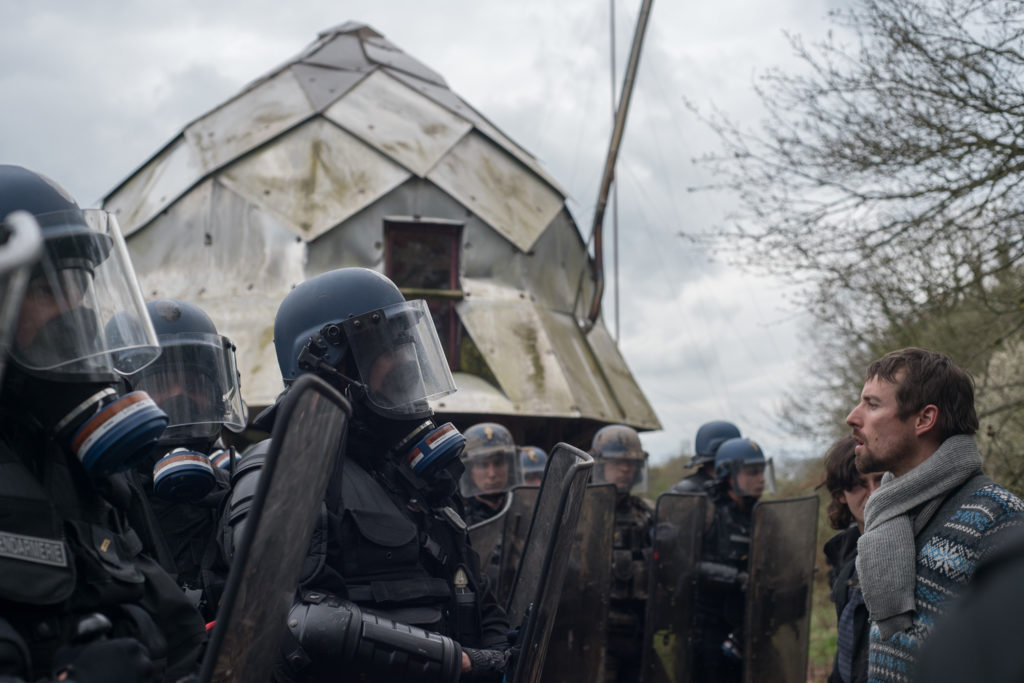
We reply with a joyful hail of mud that covers their visors and shields. The people on the roof are brought down by the specialists climbers and the bulldozer does its job. A few minutes later a one of their huge demolition machines gets stuck in the mud, a friend shouts ironically to the crowd: “come on let’s go and give it hand and push it out!”, Hundreds approach, trails of gas take over the blue sky, dozens of canisters rain down on the wetlands, many falling into the ponds which begin to bubble with their toxic heat. I try to console Manu whose home, a tall skinny wooden cabin with a climbing wall on its side, has just been flattened, my hugs cannot stop his sobs. Our eyes are red with tears of grief and gas.
In the logic of the state, the 100 Noms ticked many of their fantasy boxes of those want to be legalised, ‘the good Zadists’. It was a well functioning small holding, producing meat and vegetables and where the sheep were more legal than its inhabitants. It was a project that had the support of many of the locals. Its destruction lit a spark that brought many of those in the movement who had felt a bit more distant from the zad recently back into the fold of the resistance. Of course its no less disgusting than the flattening of all the other homes and cabins, but the battle here is as much on the symbolic terrain as in the bocage and it is seems to be a strategic blunder to destroy the 100 Noms.
The live twitter videos from the attack are watched by tens of thousands, news of the evictions spreads and a shock wave ripples through France. Actions begin to erupt in over 100 places, some town halls are occupied, the huge Millau bridge over 1000 km away is blockaded as is the weapon factory that makes the grenades in Western Brittanny.
The demolition continues till late, but the barricades grow faster at night, and we count the wounded.
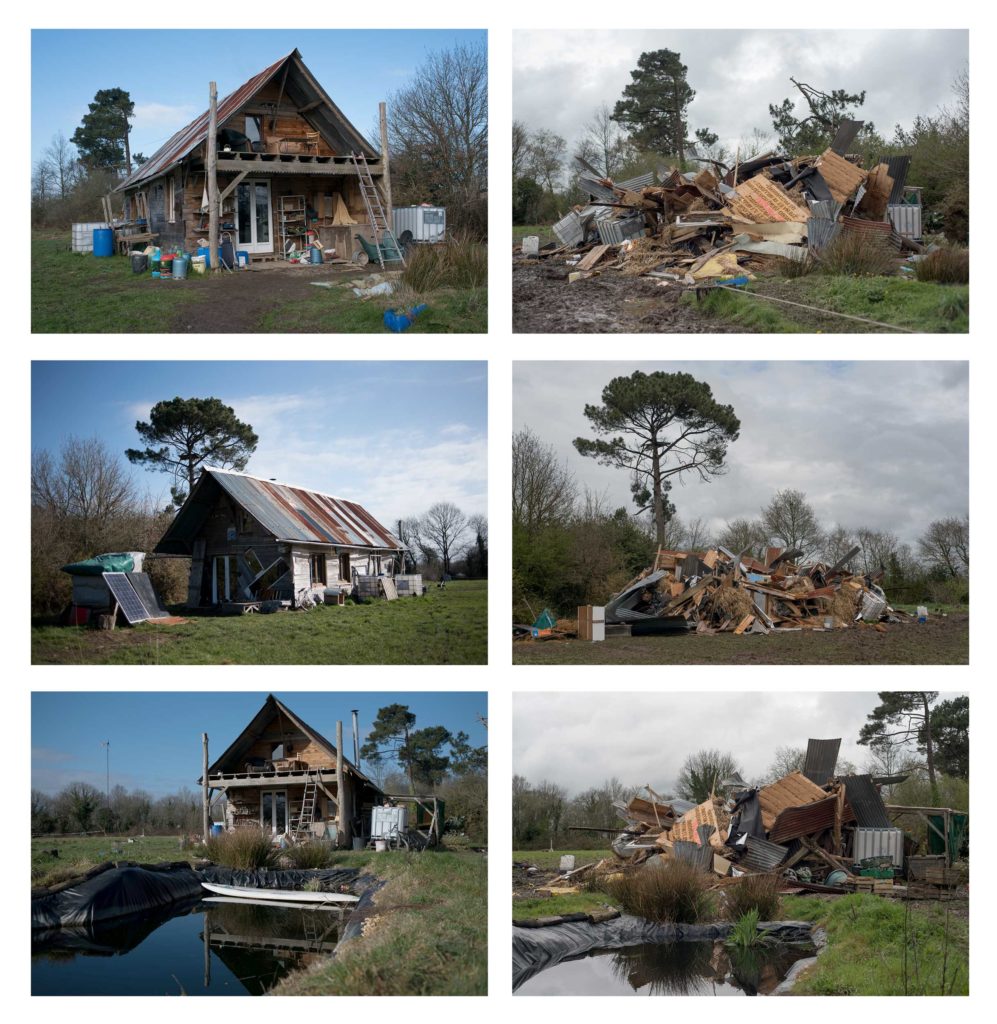
It all begins again before sun rise, the communication system on the zone with its hundreds of walkie talkies, old style truck drivers cb’s and pirate radio station calls us to go and defend the Vraie Rouge collective, which is next to the the zad’s largest vegetable garden and medicinal herb project. We arrive through the fields to find one of the armoured cars pushed up against the barricade, we stand firm the barricade between us and the APC. We prepare paint bombs to try and cover the APC’s windows with. Then the tear gas begins to rain amongst the salad and spinach plants. A friend finds a terrified journalist cowering in one of the cabins, she writes for the right wing Figaro newspaper and is a bit out of place with her red handbag. “What’s that noise??” she asks, trembling, “the stun grenades” he replies. “But why aren’t you counter attacking?” she says, “where are your pétanque balls covered in razor blades?” Our friend laughs despite the gas poisoning his lungs, “we never had such things, it was a right wing media invention, and it’s impossible anyway, no one can weld razor blades onto a pétanque ball! ”
There is so much gas, we can no longer see beyond our stinging running noses. The police are being pressurised simultaneously from the other side of the road by a large militant crowd with gas masks, make shift shields, stones, slingshots and tennis rackets to return the grenades. They are playing hide and seek from behind the trees. The armoured car begins to push the barricade, some of us climb onto the roof of the two story wooden cabin, others try to retreat without crushing the beautiful vegetable plot. Its over, the end of another collective living space on the zone. Then we hear a roar from the other side of the barricade. Dozens of figures emerge from the forest, molotov cocktails fly, one hits the APC, flames rise from the amour and the wild roar transforms itself into a cry of pure joy. The APC begins to back off as do the police. The Vraie Rouge will live one more day it seems, thanks to diversity of tactics.
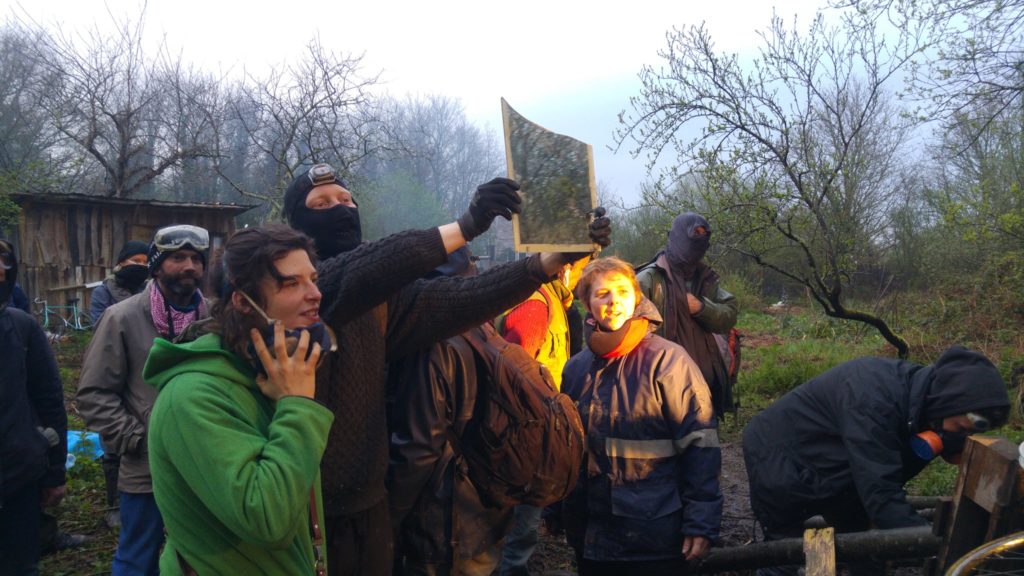
In 2012 when we managed to stop the first eviction attempts of the zone, this was what gave us an advantage. Over the 50 years that the movement against the airport lasted, it used everything from petitions to hunger strikes, legal challenges to sabotage, riots to citizens ecological inventories of the zone, defensive tree houses to flying rocks, tractor blockades to clown armies. Its secret weapon was the respect we had for each others’ tactics and an incredible ability to try and not condemn each other. Pacifist Pensioners and black bloc worked together in a way that I had never seen before, which made criminalising the movement much more complicated for the government. Movements win when they have the richest most colourful palette of tactics at their disposition and they are ready to use everyone of them at the right time and place.
In a woodland dip to the east of the zone, the Cheverie, is still resisting. A huge high cabin made from different types of swirling coloured clay – brown, grey, ochre and white – punctuated by mosaics and carved spiders, constructed by hundreds of hands, is about to be crushed. Hundreds of gendarmes surround it, one of them seems to have a machine gun strapped to his back. From the roof someone uses a traffic cone as a megaphone: “we are defending life and the living.” When the cabin is finally brought down a minor miracle occurs, none of the dozens of windows is broken, which will make it much easier to rebuild.
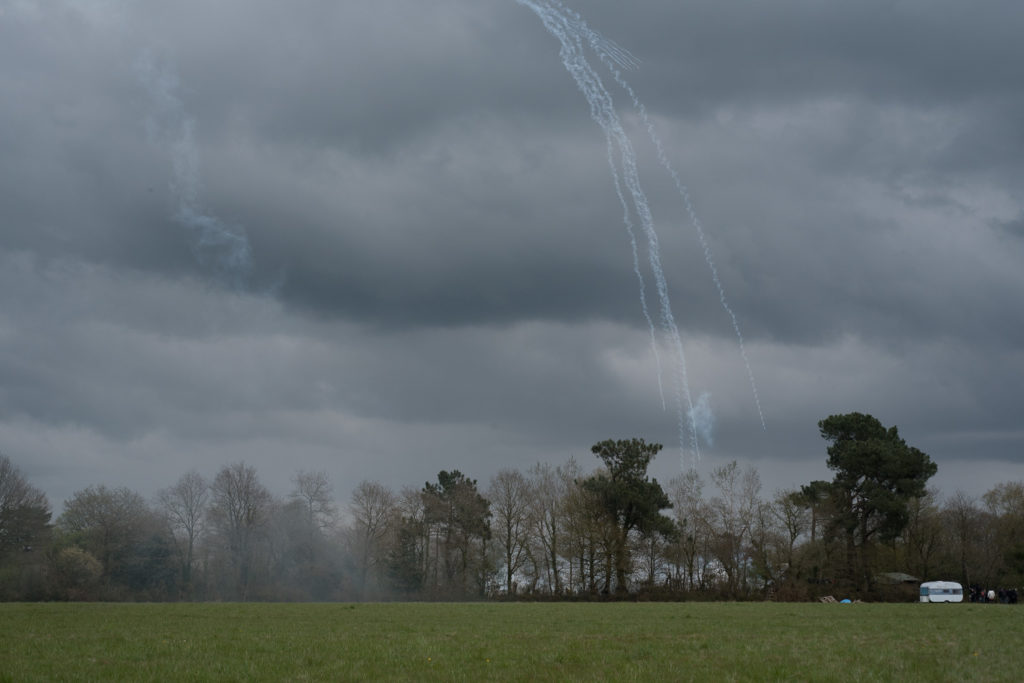
At the Fosses Noires, the brewery has been turned into a canteen, but the tear gas is falling on the pots, pans and piles of donated of vegetables. After lunch, a second press conference takes place, yesterday the first one had brought dozens of TV cameras and microphones from radios across the country, 8 people from all the composition of the movement faced the cameras, their dignified anger was so powerful, so palpable, many of us shed tears listening.
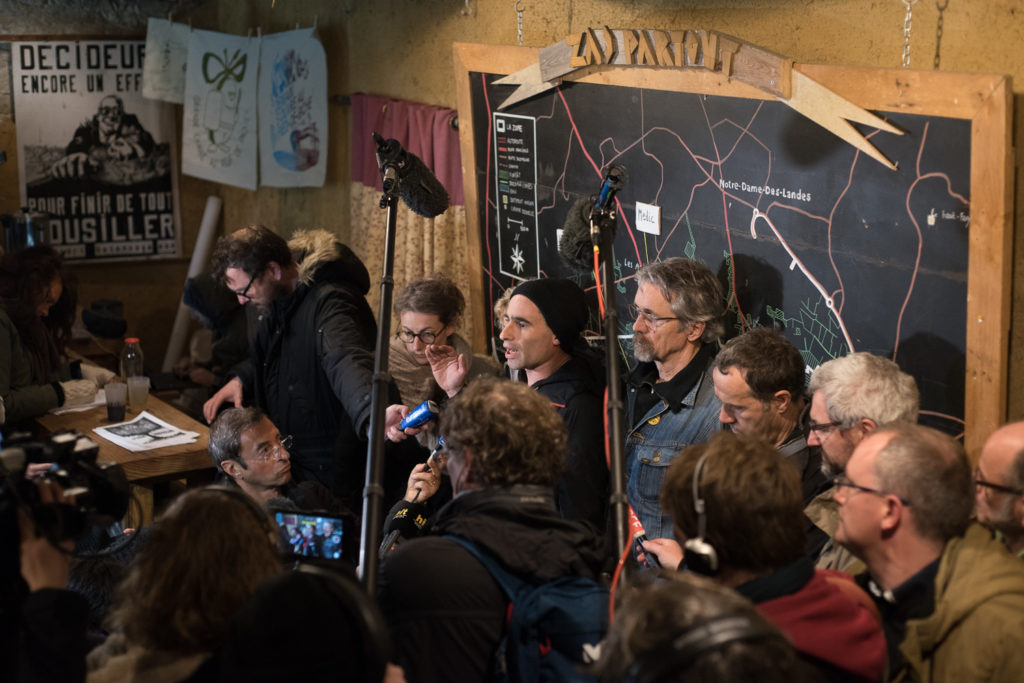
Today there are 30 inhabitants are in front of the cameras, it is those that have an agricultural and craft projects running on the zone, the tanner is there as is the cheese maker, the potter and market gardeners, cow herders and leather workers. They explain how over the last weeks of negotiations with the state, they handed over documents to develop a collective project within a legal non profit association that had been set up. They show that on this bocage to think ecologically is to realise that all the projects are interdependent, rotating the fields between folk, sharing tools and and everyone helping out on each others projects when needed. To divide the zad into individual separate units makes no sense.
But the words are not as strong as the striking image of Sarah, our young shepherdess who like a modern day madonna holds a dead black lamb on here lap. She explains how her flock was legalised already and that this one died from stress when it was moved from the 100 Noms farm to avoid the evictions. Her grey eyes pierce the camera lenses, “they chose violence, they chose to destroy what we build, they chose to break off the dialogue with us.” Whilem a young farmer, whose milk herd squats fields to the west, raises his trembling voice, “ If there is no collective agriculture then you get what’s already happening in the countryside – individualism: eat up your neighbours farm land, be more and more alone with a bigger and bigger farm,” he takes a deep breath, “the isolation is pushing farmers to commit suicide, we are more and more alone on our farms faced with increasing difficulties. On the zad we hold a vision of farming for all, not just for us.”
The zad makes a call for a mass picnic the following day. Vincent one of the supporting farmers from the region, a member of COPAIN 44, a network of rebel farmers whose tractors have become one of our most iconic and useful tools of resistance, sighs, “the government has broken any possibility of dialogue now, they have forced us to respond with a struggle for power.”
Between the tall poles that hold the breweries’ hop plants a long banner is raised, “Nicole Klein radicalised me.”
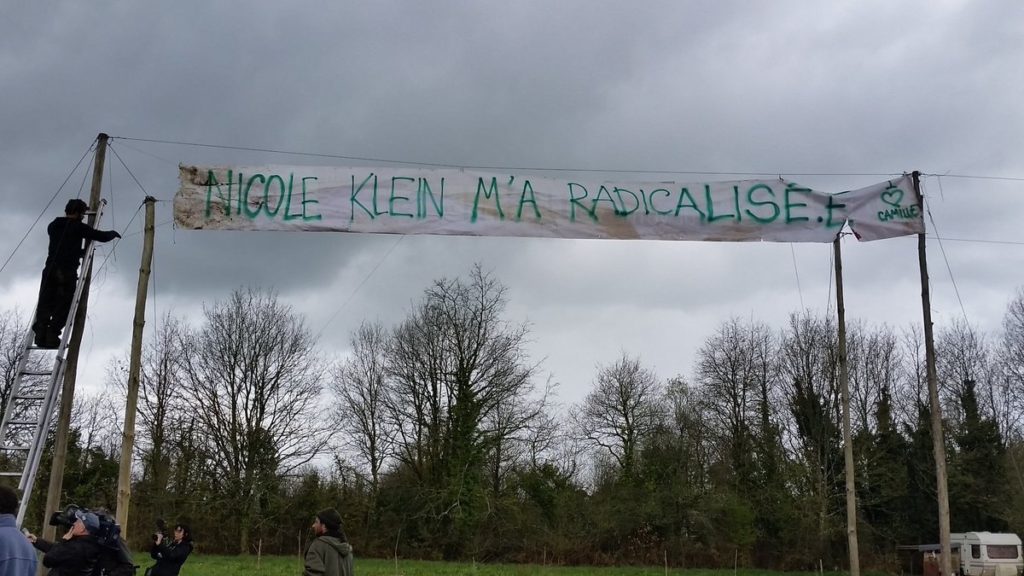
We are woken as normal by the explosions of gendarmes grenades, fighting continues near the D281 road. A small group is trying to stop the police lining up in a field, there aren’t many of us, it feels hopeless, then out of the morning mist comes a tractor, its driver wears a balaclava, in the front bucket – a tonne of stones. He drops them in a pile just where we are standing, puts the tractor in reverse and disappears back into the mist.
In the next door field a towering guy wearing a balaclava and dressed in a full monks habit throws a bucket of water over a handful of robocops – “I baptise you in the name of the zad”, he bellows. A cloud of pepper spray engulfs him, but one the gendarmes slips in the mud and drop his truncheon, at the speed of light the monk grabs it and runs off, wielding his rebel relic in the air. The police megaphone calls out “You must return the state’s property. Return it now!”
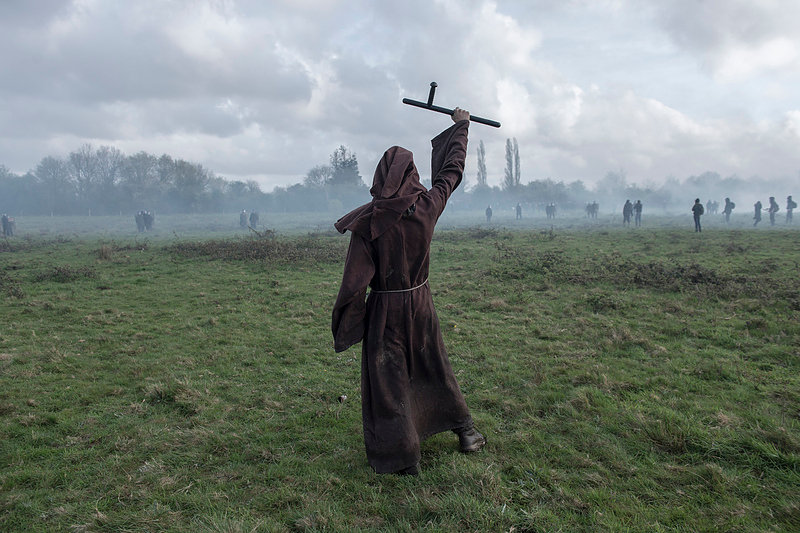
The picnic before it was gassed.
At lunch time, over a thousand people turn up to share a picnic in the fields. Over thirty tractors have come, some from far, despite the fact that its one of the busiest seasons for the farmers, they encircle the large Rouge et Noir collective vegetable garden, now littered with hundreds of toxic plastic tear gas canisters. “The state crossed the red line when they destroyed the 100 Noms” one of them says.
The crowd of all ages walk through the barricades and debris of yesterday’s battle that litter the country lanes. The atmosphere is festive, a samba band with pink masks leads us into the field beside the Lama Sacrée. A long line of black clad police stretches across the spring green pasture. The samba band approach, then all hell lets loose: gas canisters shower down, dozens of stun grenades are thrown into the peaceful crowd, panic ensues, people retreat across the hedgerows.
The houses of la Boite Noire, Dalle à Caca, Jesse James and la Gaité fall in the east. Simultaneously they attack la Grée, the large rambling grafitti covered farm at the centre of the zone that has an unconditional welcome policy. There is a car repair workshop, climbing wall and the rap studio and many folk escaping the misery of street life and addictions end up living there together. Farmers’ tractors are surrounding the building, a barricade made from the carcasses of cars, is set alight. But the tear gas is too strong and the tractors are forced to back off.
Out of the mist of gas come black lumbering troops, they charge across the fields. The whole zone is split in two by a seemingly endless lines of robocops stretching east to west. The crowd is dispersed, people are coughing up their lungs, they are furious. It began as a picnic, now it’s a war zone again. The gas clouds cling to the pasture, frightened cows huddle together in a corner of a tiny field. The medic post at the Fosses Noires has to move away to the Gourbi, but then the gas catches up with it there too and it moves to La Rolandière just in time before the police arrive to smash one of the zone’s most symbolic sites, the Gourbi.
In the very centre of the zad the Gourbi is where the weekly assembly of occupiers is held and Friday’s No-market, a place where excess produce is distributed with no fixed price but by donation only. Initially there was a stone farm house there, inhabited by an old couple who were evicted in 2012 and their home destroyed for the airport project. Then a wooden hut was built in its place, but its ramshackle pallet sides soon needed restoring and so a brand new state of the art cabin like meeting house was built over 2015. But one night someone sneaked into this beautiful meeting house and set it alight.
But Gourbi was to rise from the ashes, and as an ironic response to the governments 2016 local consultation about the airport project, we held an all night building party whilst the results came through (55% for building the new airport). To the sound of a wild one man accordion band doing kitsch covers of Queen and other trashy pop songs, hundreds of people stuffed the clay of the wetlands into a huge geodesic metal dome structure to build our new round meeting house. It was made of steel and mud to resist arson, but today the bulldozer crushed it with a single swipe of its blade. Worlds away in the metropolis, the Minister of Interior, Gérard Collomb, tells parliament “We want to avoid all violence in this country, this is what we are doing at Notre-Dame-des-Landes.”

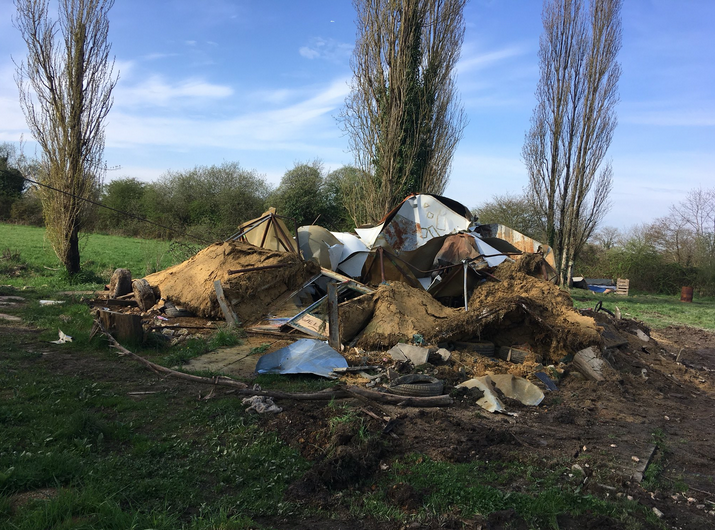
By sunset the government claims to have evicted 13 more living spaces, bringing the total to 29 since Monday. The prime minister refuses to pause the operations, and the medic team share horrific photos of some of the 60 injuries since Monday, including 3 journalists. Meanwhile the cops release their figures: 32 injuries, but it turns out most are from the mis use of their own weapons. Solidarity actions pour in from thousands, including squatters in Iceland, farmers in Lebanon and eco builders in Columbia. In Paris, sex workers send in kinky zad themed S and M photos and students occupy the EHSS elite social science school in solidarity. That afternoon electricity is cut across a large part of the zone and many of our neighbors homes outside of the zad. It is a tactic reminiscent of collective punishment used during military occupations , At night the gentle lulling croak of mating frogs in the marches mixes with the hum of back up electric generators. Four hundred of us meet at the Wardine, in the old concrete cow shed covered in bright murals, we share stories, dogs bark, tempers fray.
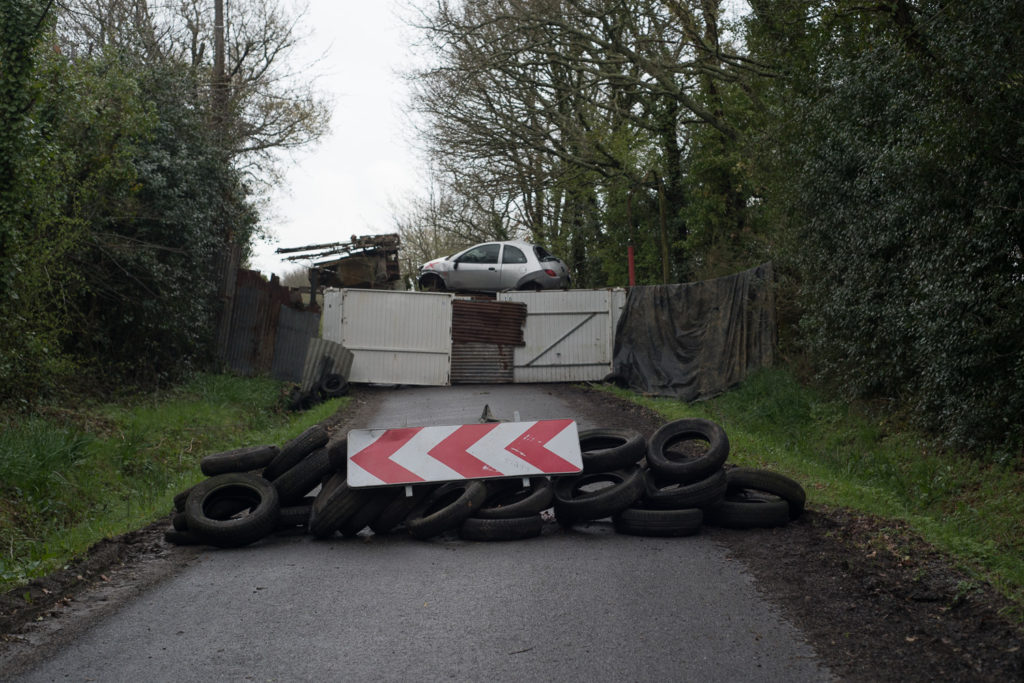
The day begins with some good news on radio klaxon. An affinity group action just shut down the motorway that passes near the zad. Emerging from the bushes they flowed down onto the tarmac armed with tyres, fluorescent jackets and lighters. Within seconds a burning wall blocked the flow of commuters to Nantes. The group disappeared just as quickly as they materialised, melting back into the hedgerows. The more we fight for this land, the more we become the bocage and the harder it is to find us. Every day more and more people converge here, many for the first time in their lives.The art of the barricade continues across the zone, including one topped with an old red boat. Some of our most useful barricades are mobile, in the form of tractors, dozens of COPAIN 44’s machines take over the main cross roads of the zone.
Following an attempt by friendly lawyers to prove that the eviction of the 100 noms was illegal, the prefect is forced to appear in court in Nantes, but the case is adjourned. The indefatigable zad press group sends out a new communique entitled, After 3 days of evictions are they ready to kill because they don’t want a collective ? Clashes continues across the bocage as Macron take to the TV screens for a national statement about his policies. A social movement is rising against him, with university occupations, supermarket, rail workers and Air France on strike – he has to respond. The mise-en-scène is bizarre, he sits in a primary school class room. He speaks about the zad for a little over a minute, “republican order must be returned” he says, and “everything that was to be evacuated has already been evacuated”.

As he speaks a hundred and fifty concussion grenades are launched in less than half an hour in the Lama Sacrée field, the explosions echo across the bocage, bursting the ear drums of those nearby and raising the anxiety levels of those within hearing distance, which on this flat landscape of the zad, is all of us. The league of Human Rights demands that all parties come back to the table. A call is sent for people to converge on the Zone on Sunday: “ The time has come to find ourselves together, to say that the zad must live, to dress our wounds and re build ourselves..” …
We walk home to la Rolandière, with its ship shaped library attached to the lighthouse, built where they wanted to build the airport control tower. The sun is setting, 20m high up on the lighthouse’s balcony a lone figure is playing a trumpet, fluid sumptous jazz floats across the forest. It is one of those moments when you remember why you live here.
That night under a clear constellation filled sky, the Assembly of Usages meets. We sit on wooden hand made bleechers under Le hangar de l’avenir (The Barn of the future). This cathedral like barn was built by over 80 traditional carpenters in 2016 using mostly hand tools, it is ornamented with snakes and salamanders carved into the oak beams. There are several hundred of us at the assembly, one of the peasants whose tractor is blocking the crossroads reads out a series of texts messages he has received from the préfete who is trying to negotiate with COPAIN 44. “Yesterday the Prime minister said it was war, today the president says its peace, therefore it’s all over.” It’s clear that she’s feeling that the situation has become much more complicated than predicted. A deal is made, move your tractors she writes, and I promise that by 10pm I will announce to Ouest France, the regional news paper, that it is the end of operations by the Gendarmes.
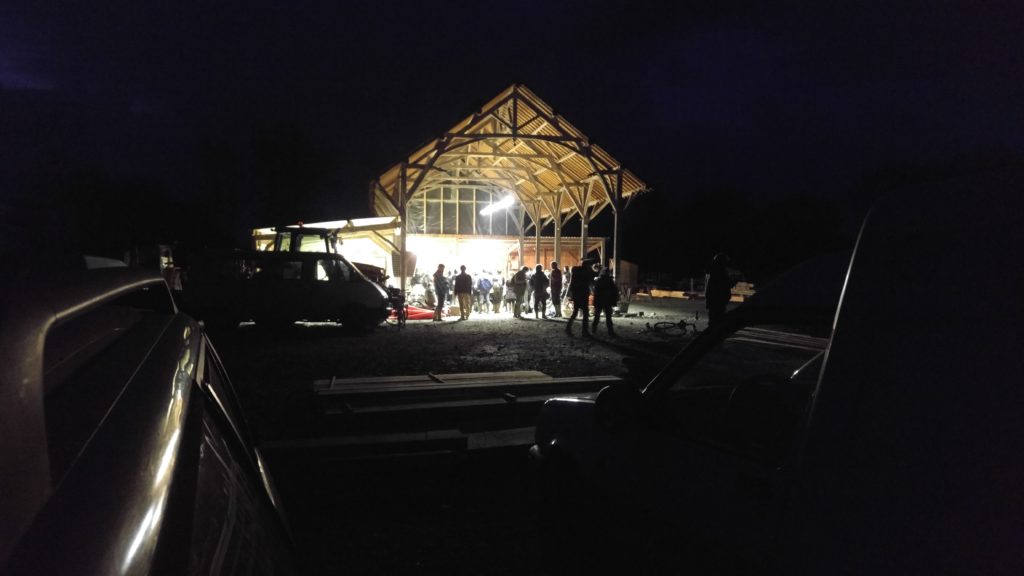
The meeting continues, we wait for the article to appear on the newspaper’s web site. I reload my phone endlessly waiting for the site to update. Suddenly it does, but it’s just a story about rock legend Johnny Hallyday, was it all a bluff ? Then it arrives, half an hour late. A cheer rises from the tired voices. At home we try to party a little, at least we might get a lie in tomorrow morning, it seems that it’s over for the time being?
I’m half awake, there is a rumble of vehicles on the road… At first I think it’s tractors, then I see the lights, blue and flashing, van after van of cops passing. We leap out of bed and run to the top of the lighthouse, the entire road is filled with vans as far as the eye can see. The huge barricade at the crossroads, which the tractors left last night following the préfete’s announcement, is on fire, a plume of black smoke frames the the orange dawn. The familiar pop of tear gas canisters being fired is accompanied by the crunching sounds of barricades being pushed by the APC. Radio Klaxon says they have kettled la Grée and are searching it, the Wardine camping is also encircled and a hundred and fifty cops are heading towards the Rosier. The Lascar barricade, made of several burnt cars, with a huge metal doorway and a trench that is several meters wide, is being defended by a nearly 100 of us. The forest is wrapped in toxic mist, ghostly rebel silhouette run from tree to tree, stones are aimed at the robocops with catapults that were made by Andre, an 83 year old who set up a production line for us during the eviction threats of 2016, his team churned out 1000. The cops throw stun grenades blindly from the fields into the forest, one explodes just above my head, caught in the tree it rips the bark into smithereens. Is this what they call the end of operations ?
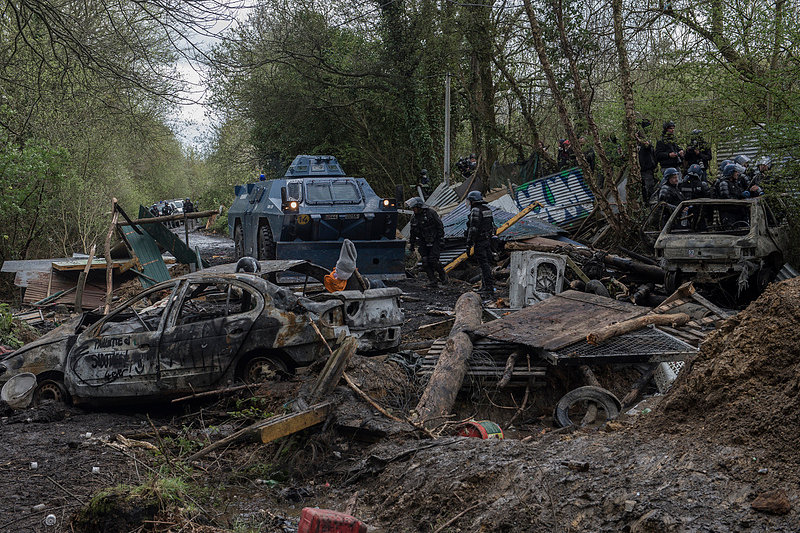
A communiqué from the gendarmerie explains that they are clearing the roads and are not doing any expulsions or knocking down any squats, but that they are looking to arrest people who fired a distress rocket at their helicopter. At la Grée they take away two people but not for that charge. The gas pushes everyone back from the Lascar’s barricade and the grinders come out to cut the metal gateway into pieces. Despite the rising clouds of tear gas, people on the roof of the brand new Ambazada, a building that will host folk from intergalactic struggles, manage to sing some of our re purposed folk songs, recount the history of the struggle of the zad.
Then a moment of joy, one of the armoured cars attacking the Lascar tips into a ditch and has to be pulled out by the other one. The mud of this wetlands has always been our ally, its wetness our friend. When they retreat a banner is put up, “Cheap APC driving license available here.” Our other accomplice is humour of course, even in what feels like a war zone, with tarmac scorched, broken glass and rubble everywhere, being able to laugh feeds our rage. The police retreat again and the barricade grows back out of its ruins, bigger and stronger than ever. We notice that where the APC fell into the ditch is now a huge deep hole at exactly the place where the drain for the Ambazada was going to be dug, no need for digging, just put the plants in it to make our grey water reed bed. That’s what you call radical permaculture, least effort for maximum gain.

At midday the préfete begins her Press conference in Nantes. She confirms last nights message – evictions are over – and in a dramatic gesture, flourishes a page of A4 paper towards the cameras. “It’s a simplified form” she tells the press, “so that those who wish can declare their projects as quickly as possible…The deadline is the 23rd of April” she continues “ all we are asking is that they declare their names, what agricultural project they wish to develop and to tell us what plot of land they wish to work on, so that the state can process them.” She also confirms that it was Macron who was running the operation not the prime minister or interior minister, it was he who decided to stop the expulsions. “I am holding out my hand” she says, and asks for negotiations to re start on Monday, “I am giving the zadists a last chance.” Sitting next to her General Lizurey in charge of the Gendarme’s operations says that the number of zadists on the zone has increased from 250 to 700.
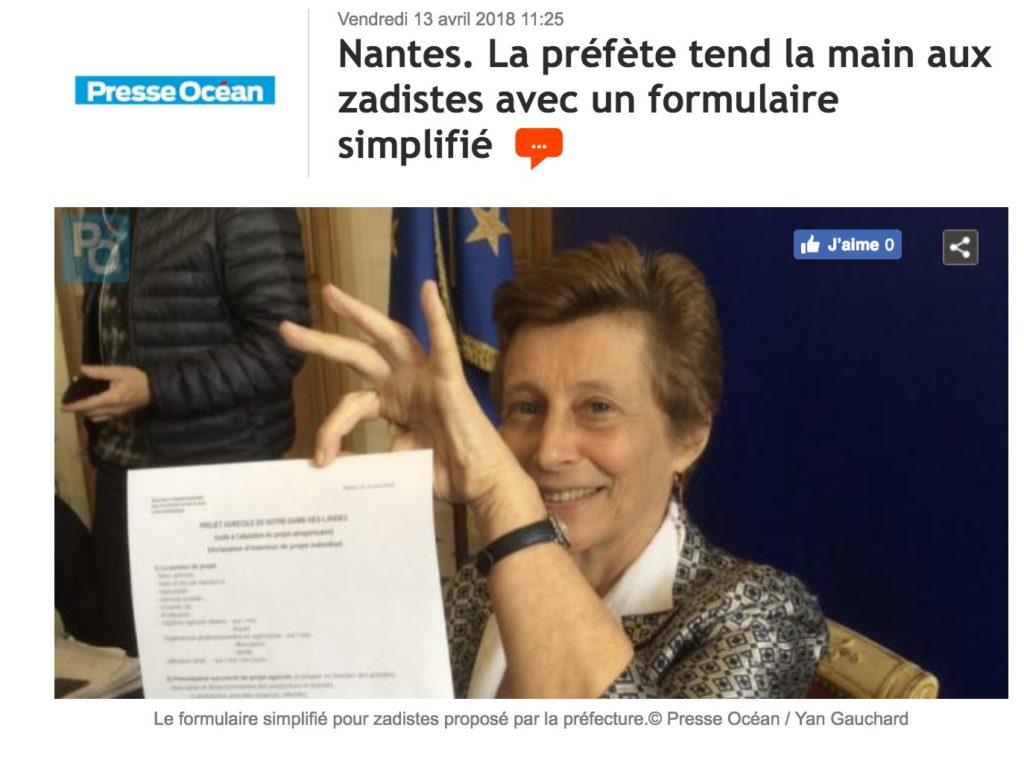
I walk through the Rohanne forest to The Barn of the Future, I breathe in the forest air, the sweet pine, the musty damp smell of mushrooms. The barn has returned to its normal use as a saw mill and carpentry workshop for the zad. It is the base of the Abracadabois collective that looks after the forests and hedgerows, harvesting fire wood and building timber and setting up skill shares to learn carpentry, forest biology, wood carving, chain saw use and learning about other ways of inhabiting forests inspired by indigenous practices from past and present. The saw mill is planking the logs, twenty carpenters are busy preparing frames for a new building, a new assembly and no-market hall for the Gourbi, that we aim to put up on Sunday during the mass action.
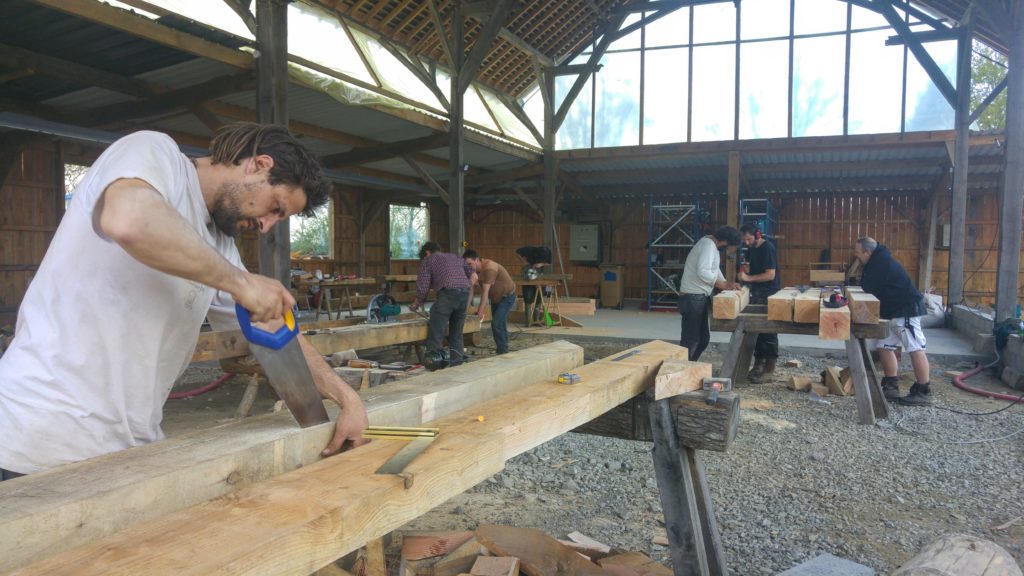
This morning I was enveloped in tear gas and now I’m watching some of the same barricaders without their gas masks making a barn using the techniques that have been used for millennia. It is somehow healing to watch the attentive work. It is this capacity to fight and build, to block capitalism and to construct other forms of life which gives the zad its strength. It is also another reason the state wants to destroy us, they can deal with nice clean alternative eco projects, easy to buy off and recuperate into new forms of green capitalism. But when those who have a systemic critique are also providing material examples of other ways of being, it becomes dangerous. The resistance and creativity, the no and the yes, are the twin strands of DNA of this territory, split one from the other and the zad dies. It becomes another ecovillage or Transition Town, alternatives without teeth.
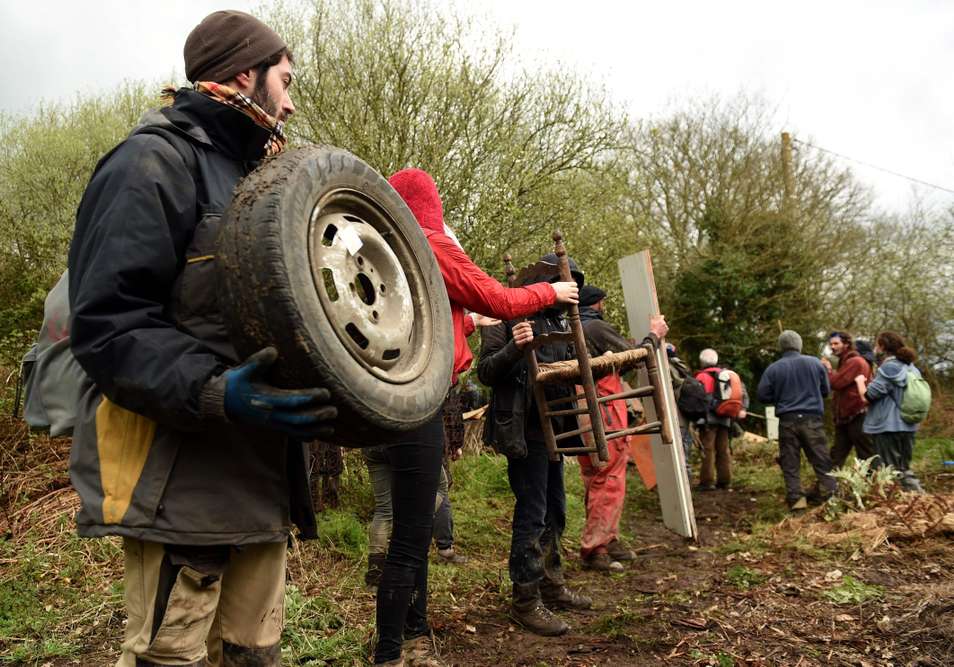
Yet a second helicopter is flying above the barn, this time with Prime Minister Edouard Philippe and the minister of interior inside, they are getting a private birds eye tour of the zad. They have come to congratulate the troops for their hard work. As he shakes hands with the gendarmes Phillippe tells the press that “the state will not accept any reconstruction or reoccupation.” He is referring to the action planned on Sunday, “Any place that tries such an action will exclude itself from any possible regularisation…. and will thus put themselves under judicial proceedings.” Once again the threat of sorting the good zadists from the bad. The carpenters work late into the night.
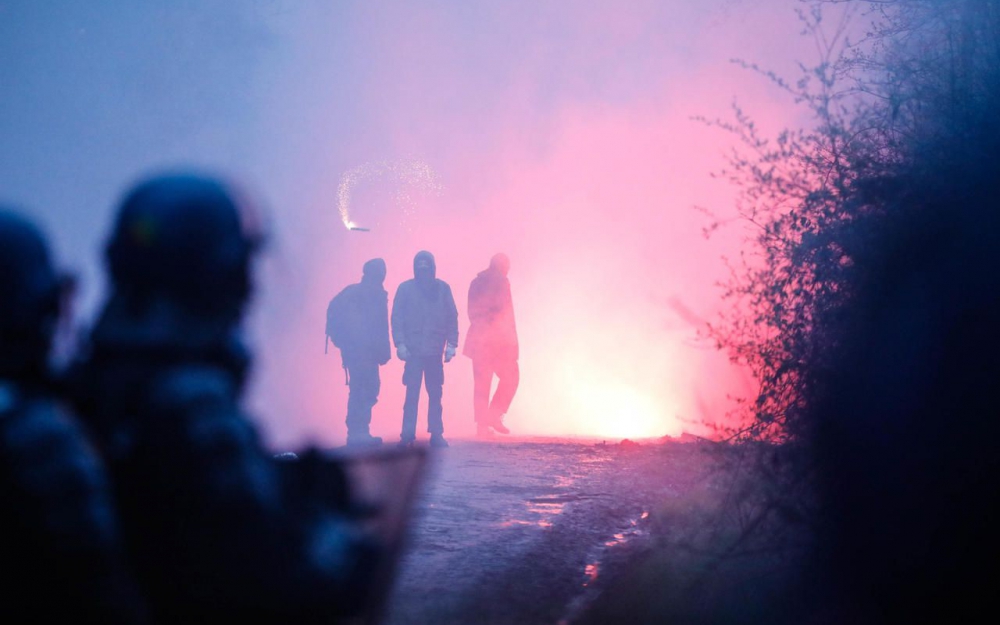
Bang, another wake up call, the APCs and dozens of vans pass by at the speed of a TGV train, bulldoze the barricades away on the D81 road again, and continue South, probably to Nantes where striking workers are holding a demonstration followed by one against the eviction of the Zad.
Barricades are cleared at the Lama Fachée at the same time, and a strange new gas is spotted, dark yellow. It makes people throw up, sows mental confusion and a loss of all spatial and temporal senses. Behind one of the barricades, a trio of action medics are keeping an eye on the adjoining woodland where grenades are exploding, “ It’s been war wounds here,” they explain “skin and nerves hit by shrapnel, open gashes, eardrums damaged, necrosis and bone fractures.” Some folk have over 70 pieces of shrapnel in their limbs, it takes hours every day to pull them out and clean them, some have gone 3cms deep into the skin. Many of the new comers on the zone throw themselves into picking up the thousands of gas canisters that litter the fields, placing them in big bags for everyone to see in the “camp of the white haired ones.” Each canister costs 110 euros.
The demonstration in Nantes is big, 10,000 people. The 1000 riot police on duty attack it and gas people drinking on the café terraces.
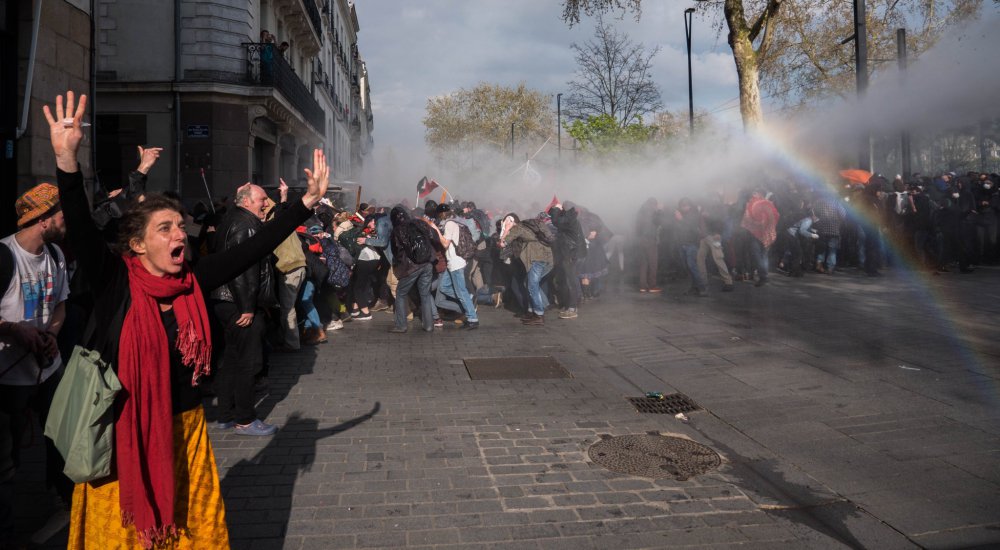
The sun set is dark red this evening. The wood working tools and machines are cleared aside, the Barn of the Future becomes a meeting hall again for the Assembly of Usages. The fresh smell of saw dust perfumes the discussions about whether we should go to back to the negotiations on Monday. The response is no, not yet.
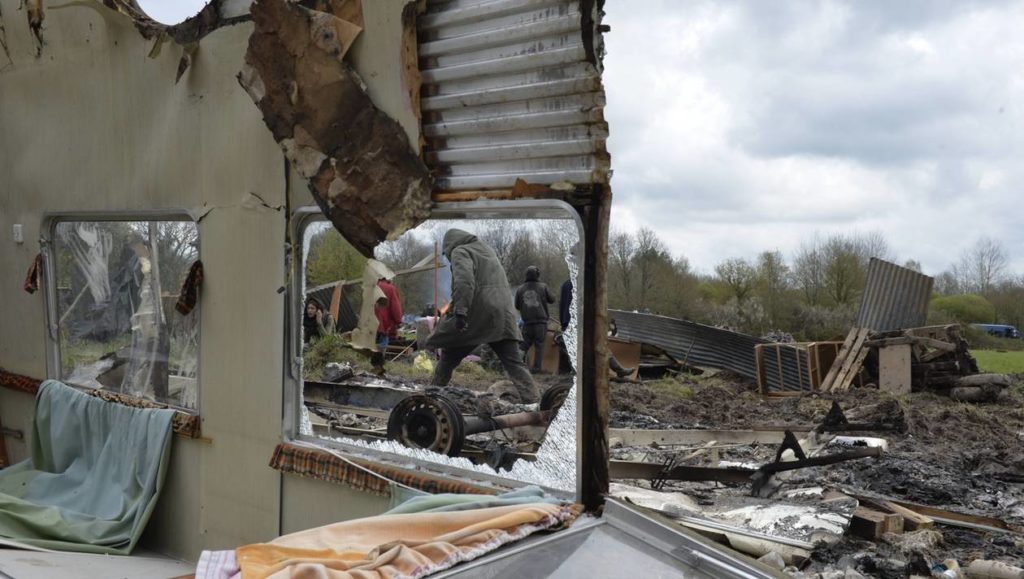
It’s the big day, thousands of people from all over the country are converging on the zone for the day of mass action. The troops have cut off a third of the zad, they line the lanes for kilometers, cutting off access to any of the part of the zone where homes had been destroyed last week. This includes the Gourbi where we hoped to bring the new building too. All road access to the zad are blocked off by the gendarmes, they tell people to go home because they won’t be able to reach the demonstration. But more than ten thousand of them disobey, park their cars and coaches in the nearby villages and trek for over an hour across the bocage. The details of the new building are still being finished, as the crowds arrive, such as a large ‘fuck you’ finger and the face of a fox that are being carved.
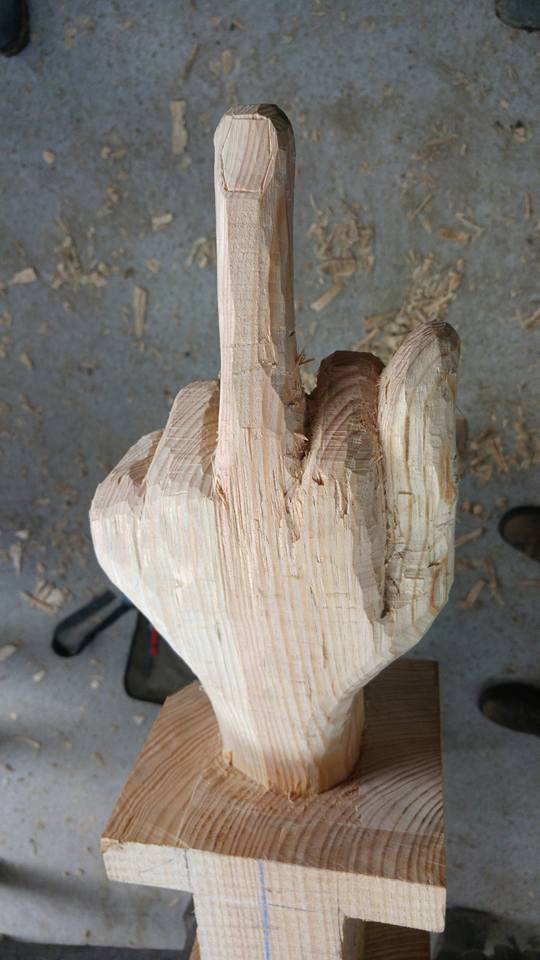
Through the pirate radio, text messages and word of mouth, we tell people to converge on Bellevue, the big farm in the west and wait for a decision about what we will do. 50 of us meet in a field in an emergency meeting, the farmers don’t want to risk their tractors, we don’t want to have a gesture that feels too symbolic, once again the collective intelligence comes to the fore and we come up with a plan B. The building will be erected as close to the front as possible without forcing the police line, there are too many families here to risk being gased.
Simultaneously we will ask people to unearth the staffs and sticks that had been planted in the ground in October 2016 when the government told us they were coming to evict. It was a ritual disguised as a demonstration, 40,000 people answered the call, planted their stick into the ground and made a pledge to return to get them if the government came back to evict the zone for the airport. The ritual magic worked, that time the government stood down. But now they were back with a vengence and the moment has come.
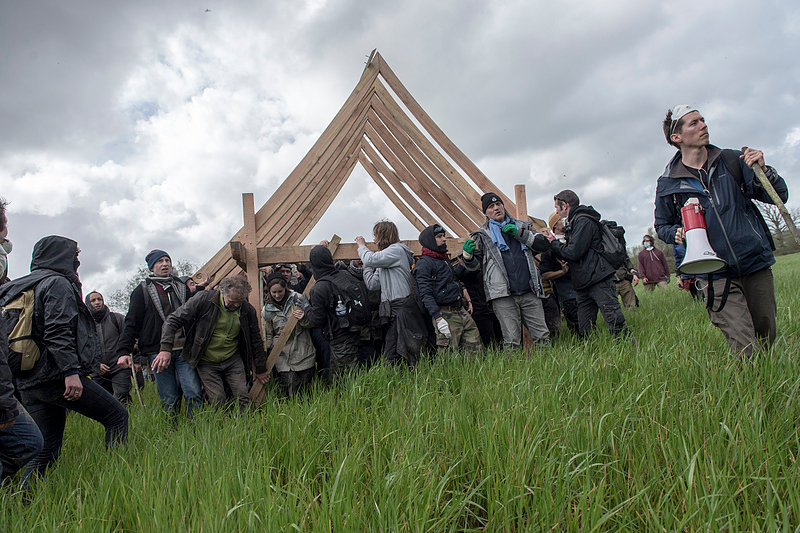
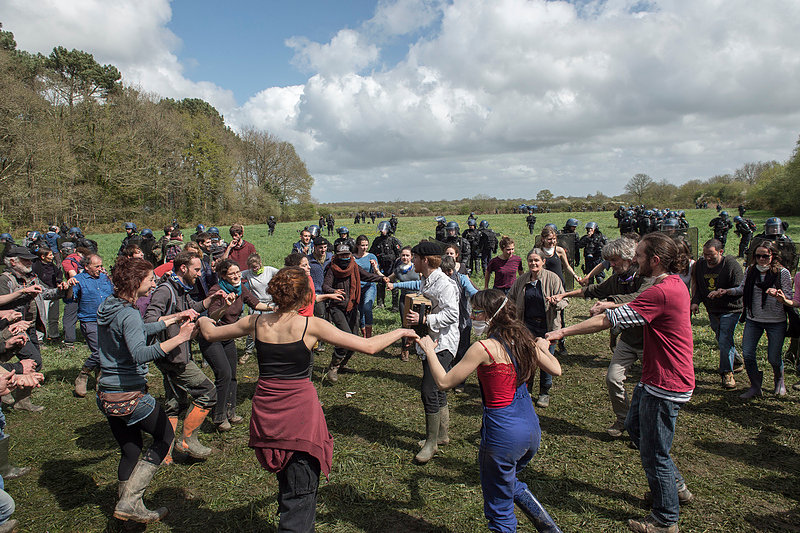
Whilst people pulled the deeply charged sticks out of the clay, others on lane behind carried the huge wooden frames, planks and beams of the new building to the field between between the Wardine and the Ambazada. It takes a few hours to put the carpentry back together and raise the structure up, meanwhile thousands of people push their sticks back into the ground creating a huge circular pallisade around it. In the next door field the police start to tear gas and stun grenaded hundreds of people, some had been reading poems to the cops many held their hands in the air in a gesture of peace. Families hold their ground next to masked up barricaders.
Meanwhile, a handful of people decide as a kind of game, to take the campanille, the tower like addition of the new building, through the forest to the east. A crowd of hundreds follows, we cross the road next to the cops who charge but are forced back by the mass of bodies, we try to get as near to the Gourbi as possible. The wind is on our side and blows the teargas back into the cops lines. But the playful act of defiance ends when its clear that we can’t get anywhere near the Gourbi, the police lines are too thick. However, the pleasure of running through forests and fields carrying part of a wooden building is clearly addictive. A few hours later, once the sun has gone down and the cops have left, a new plot is hatched. Why don’t we move the whole building, one and a half tonnes of it, 3kms across the fields, in the dark – to the Gourbi !
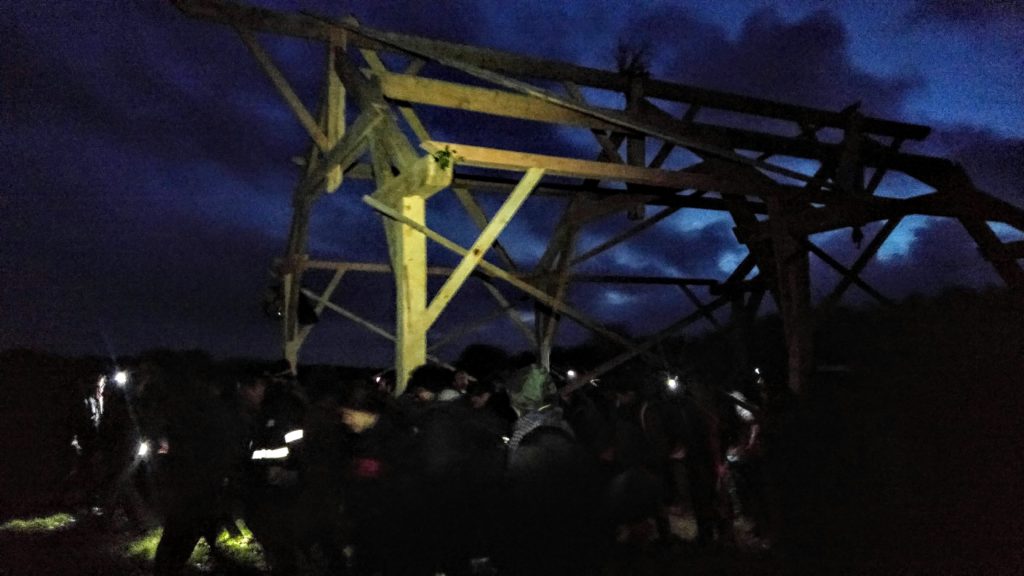

Despite the general state of tiredness that fills our bodies, we manage a huge heave, 150 of us lift up the structure. A mass of rubber booted feet walk in unison, it feels like a strange chimera shuffling across the bocage, half human half millipede. One of the carpenters directs the operation via megaphone, “a bit to the left ! slow down ! watch that tree branch !” Lit by the beams of dozens of head torches the building seems to float above the prairies, we are plunged into a space between fabulous dream and a scene from an epic film. Someone sits on the very top of the building pushing up the electricity and phone cables so we can pass under them. This is what we call the magic of the zad, the belief that anything is possible when we do it together.
We half expect to see the police helicopter, to feel its spot light pierce the night, but nothing. The closer we get to the Gourbi the louder the chants: “on est plus chaud, plus chaud, plus chaud que le lumbago” (we are much hotter, much hotter than lumbago). When we arrive, fireworks shoot up into the darkness, a bright red distress flare illuminates the scene. We set the building next to the pilled up ruins of the dome. We light a bonfire, Gourbi has risen again.
Whilst we were moving our house, Macron was being interviewed live on TV, sitting in a black and gold marble hall the Eiffel tower as monumental backdrop. He declares that airport had been abandoned as part of the “ecological priorities of the government” and that therefore our anger is no longer legitimate. Rather than an alternative society, the zad was “a project of chaos… illegally occupying public lands” he tells the nation.
“We have restored republican order” he declares, at least four times. We must sign individual forms before the 23rd of April or “everything that should be evicted will be evicted” he says. Macron ends with a ridiculous analogy: the zad is as if someone came into your living room to propose an alternative and squated your sofa. Ridiculous and wrong, none of the land here belongs to private individuals, it all still belongs to multinational airport builders Vinci and the state. But his statement was a new ultimatum, a declaration of total war against all collective forms of life. We return home to the news, but it cannot blunt the memories of this improbable night.
There are a half a dozen bodies perched like birds on the rafters of the new Gourbi, one plays a drum, a couple kiss, the green prairies below burst with yellow dandelions. We hear the rumble of APCs, it’s obvious they are coming straight here. The glint of riot visors shimmer in the sunlight, a column is moving towards us. A few flash bangs later and those on the roof are brought down by police climbers. The pillars of the building are cut by a chainsaw and the APC drives into it. Like the skeleton of a dying beast it crumbles to the ground. The police leave under a hail of stones, people sort out the broken beams. “Bastards !” a friend points to a stump of cut timber, “they sawed off the big fuck you finger and took it back to the barracks as a trophy !”
The Gendarmerie release their drone footage of the destruction on social networks. They need to show some success in their operation, they too are getting tired of this infernal cycle of destruction and reconstruction. A communication from a group called “Gendarmes and Citizens” denounces the fact that they are feeling “bogged down” and feel like “cannon fodder” faced with “rural guerrillas”. They deplore the “political paralysis” of the government who are on the one hand communicating with a “warlike tone” but are not following it up with effective orders on the ground. “Why are we not being given orders to arrest everyone in the squats ?” they complain. So far there have been suprisingly few arrests, we wonder if they will just come back later, raid our homes, pick us off one by one, when things are quieter ?
There is a new moon above tonight’s Assembly of Usages. Unsurprisingly the debates are heated, we have to decide to re start negotiations or not. The question has never been negotiate or fight, we always knew that we had to do both, but after so many days of attacks it’s not easy to accept to go back to the table. In the end we decide that we can meet the préfete, not to negotiate the base issues, but make demands for the continuation of talks, one of which is take the troops off the zone. “You don’t negotiate with a gun to your head”, one of the locals says, but we known that if we refuse to meet, Macron’s machine could return and destroy everything that is left, risking lives and in the end depriving us of this territory where we found each other.
An older friend of mine, someone who experienced the uprisings of ’68, writes to me. His letter just says, “the zad will never end, it will simply change shape.” And he is right. This attachment we have to this territory where we have been able shake our dependence to the economy and the state, is something that brings us together, however disparate our political perspectives. Our love for this huge play ground which inspires us to organise together, this deep desire for the wetlands that lubricates our imaginings, these are not abstractions but feelings that are deeply anchored to our experience of this bocage and all our experiments that emerge from it. It is a place that compels us to recompose, to renew, to have the courage to put our political ideas into question, to always push ourselves further than what we thought was possible, to open ourselves up beyond a radical ghetto or walled off utopia. Despite our barricades and the diversity of disobedience, if the state really wants to eradicate the whole of the zad, they can. Everyone would have lost their homes, workshops, fields, tools and we would probably find ourselves banned from returning to the region (a common judicial punishment in France). Scattered across the country without a place that enables us to grow roots together, we would loose all our strength. We know that changing shape is painful, but like a cameleon changes colours, we need to find a way protect this laboratory and camouflage its revolutionary potentialities from the eyes of the state. If we want to stay we need to find a compromise whilst refusing to let go our the commons.
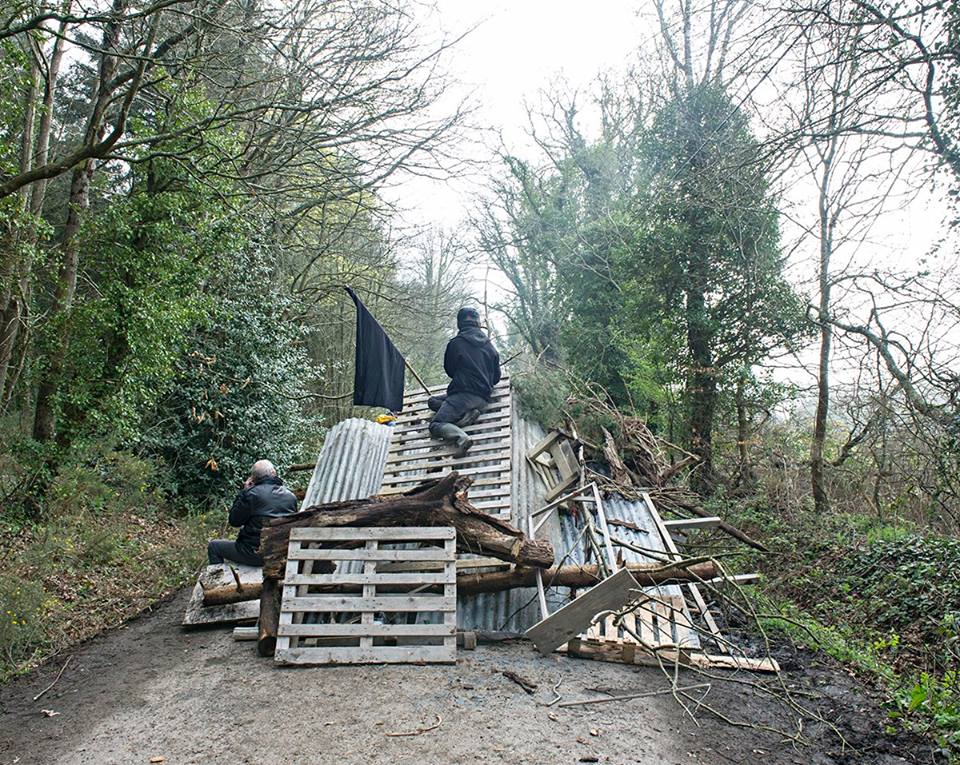
It’s a week later. Over breakfast, Paul tells me about last night’s adventures. “It felt like we were robbing a bank. So organised, dressed in black, head lamps, maps, scouts etc. Except all we were doing was evacuating the bee hives from the destroyed homes and gardens, getting them off site.” he smiles “we had to carry them full of bees across the hedgerows behind police lines.”
The days have calmed down. Less cops on the zone, more bird song than explosions. The cycle of barricade growing and then being smashed slows down, partly because on the main roads the police bring in huge skips to take the materials away. In the smaller lanes barricades remain.
The restart of the negotiations on Wednesday went badly, nothing shifted, despite the presence of ex TV personality Nicolas Hulot, now Minister of Ecological Transition, in charge of the zad case since Marcron’s election. He is flown in specially to Nantes in the presidential jet. Following the meeting with us, he gives a press conference in the palatial hall of the Prefecture. The government’s hard line is held, the rights of property and the market reign, there will be no global or collective contract for the land, we have to give individual names and land plots by the 23rd or face evictions. In a rhetorical floury he ends, “ecology is not anarchy.”
Not surprising for a man whose ‘ecology’ involves owning six cars, signing permits for oil exploration and supporting the nuclear dump at Bure. Hulot is simply the ‘eco’ mask for Macron’s “make the planet great again” form of authoritarian neoliberal green capitalism. But his statement shows Hulot’s absolute ignorance of the history of both ecological and anarchist thought. Many of the first theoreticians of ecological thinking, were anarchists. Élisée Reclus, world famous geographer and poet, whose beautiful idea that humans are simply “nature becoming aware of herself,” fought on the barricades of the 1871 Paris Commune. 19th century geographer Peter Kropotkin, spent many years in jail and exile for his politics, but was renowned in scientific circles as an early champion of the idea that evolution is not all a competitive war of “red tooth and claw” but instead involves a cooperation, what he termed Mutual Aid. From the 1950s onwards, US political philosopher Murray Bookchin (now best known for the influence he has on the Kurds to build a stateless form of Municipal Confederalism, taking place in the autonomous territory of Rojova – Northern Syria) brought ecology and anarchy together.
At the heart of his Social Ecology is the idea that humans dominate and destroy nature because we dominate ourselves. To avert ecological collapse we had to get rid of all hierarchies – man over woman, old over young, white over black, rich over poor. According to Bookchin, our greatest lesson to gain from the natural world was that we had let go of the idea of difference, and reclaim the concept held by many small scale organic societies, of unity in diversity. Diversity being the basic force of all bio-systems. He envisioned a world that would be neither communist nor capitalist, but what he called “Communalist”. “The effort to restore the ecological principle of unity in diversity,” he wrote, “has become a social effort in its own right – a revolutionary effort that must rearrange sensibility in order to rearrange the real world.” For him the question of society, to reframe Rosa Luxembourg’s: “Socialism or barbarism” – was: “Anarchism or extinction.”
When we truly inhabit an eco system it becomes obvious that life has no control centre, no heirachy, no chiefs or bosses, no governments or presidents. Every form of life is a self organising form of commons – deeply connected and interdependent, always changing, always embedded and entangled – from the cells in your fingers to worms in your the garden, from the trees in the forest of Rohanne to the bacteria in your gut. As biologist and cultural theorist Andreas Weber says, all life forms “are continuously mediating relationships among each other – relationships that have a material side, but also always embody meaning, a sense of living and the notion of belonging to a place.” The more we observe the living world in all its complexity the more we are able to understand how to become commoners, how to truly inhabit a place and see that the separation between the individual and the whole is a fiction.
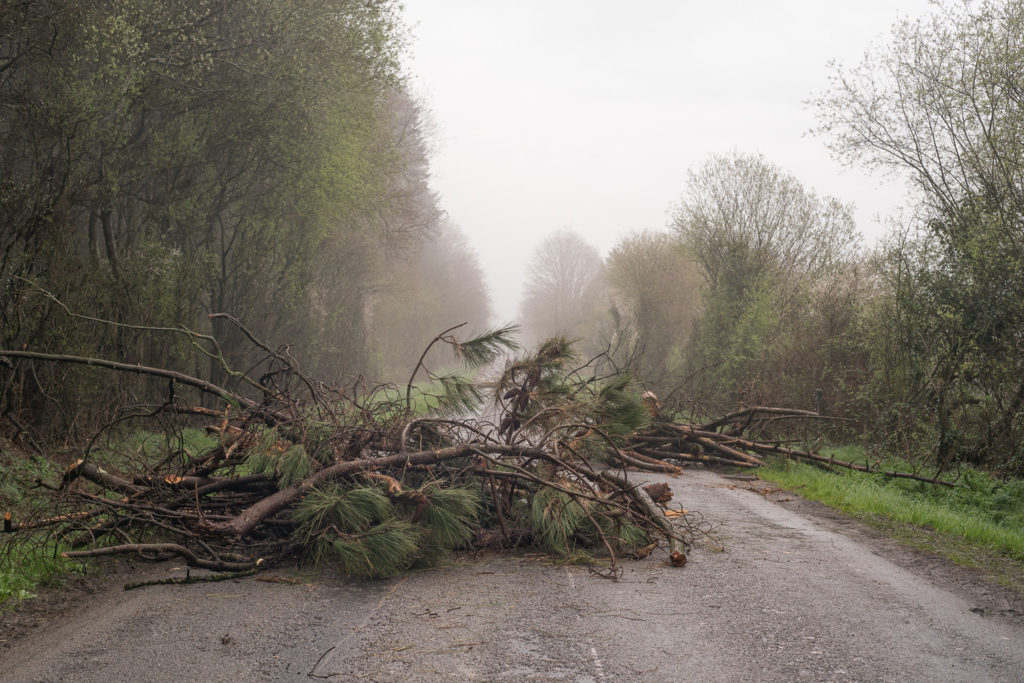
“In the ecological commons” writes Weber “a multitude of different individuals and diverse species stand in various relationships to one another – competition and cooperation, partnership and predatory hostility, productivity and destruction. All those relations, however, follow one higher principle: Only behaviour that allows for the productivity of the whole ecosystem over the long term and that does not interrupt its capacities of self-production, will survive and expand. The individual is able to realise itself only if the whole can realise itself. Ecological freedom obeys this basic necessity.”
And so to be really free is not to be an individual able to operate free from constraints, but to be tied to beneficial relationships with people and habitats, relationships that feed you materially and psychologically. Without a tie to your food – you starve, without the tie to lovers – you sadden. We are free because we are linked. Freedom is not breaking our chains but turning them into living roots and veins that connect, share, flow together and enable us to change and evolve in common.
Since the abandonment of the Airport, changing together on the zad has been a very a painful process. On the zad often it is a fight between those of us who try to read the terrain and invent something new that is messy and hybrid yet fits the situation we are in and those of us who want to keep a pure radical position, more based on uprooted ideas and ideology than the complexity of the present moment, the here and now, the forces we hold and don’t. In 1968 Bookchin asked“When will we begin to learn from what is being born instead of what is dying?” It is a question still just as relevant today on the zad.

Things have been moving so fast. After Hulot’s ultimatum, a ministerial announcement suggests that the Prime minster and minister of interior are on a war footing, they are prepared to go for it, evict the whole zone on Monday’s deadline, the 23rd.
During the re start of negotiations on Wednesday a technical meeting between our delegation and the bureaucrats, who look at the case from a purely land and agriculture question, had been set for two days later, Friday 20th . Once again we are on a knife edge, this could be the last moment of negotiation before a full scale attack, an attack that most of us who live on the zone know we can’t win against, how ever big our barricades.
The Assembly of Usages makes a huge strategic gamble, its a paradigm shift in tactics. We decide to hand in the forms at the Friday meeting, but in a modified way, to show that yes we can fit the state’s square boxes of individual projects if they want, but that on the bocage nothing can be separated out, everything is interdependent. Whilst at the same time making a call out for people to come and be ready to defend on the territory from Monday onwards if the state attack. Its the logic of hacking, take what’s there, re purpose it, change its use.
Then one of the most unexpected types of zad magic takes place, an office of form filing is set up in the Zad’s library, and for 24 hours the building becomes a disturbed ants nest, dozens and dozens of people are running around carrying white pages of paper, writing on computers, having meetings together, looking at maps of the zone, making phone calls. Comrades with great legal and administrative knowledge help out and and by Friday afternoon, just as the meeting at the Prefecture begins a huge black bound file of 40 different projects is produced, each with a name and plots of lands earmarked, but no single name attached to a single plot. A colourful cartography of the commons of the zad is attached to further illustrate the interdependent and cooperative nature of the projects, be they a school of shepherding or the library, orchards or the sports group, mechanics garage or a snail farm, sunflower oil production or bringing up children together. Of the 70 living spaces on the zone, 63 are covered by the forms, only 7 decide not to take this bet of a barricade of paper. Of course paper barricades are not half as fun as ones on the streets, but this time they just might be the ones that save zad from becoming just another orgasm of history, another free commune which shined briefly but ended in bloodshed, another martyred experiment in freedom sacrificed for the sake of a pure revolution. The zad always tried to go beyond the idea of a TAZ (Temporary Autonomous Zone), in favour of a building a PAP ( Permanent Autonmous Zone), this desire is embeded in the solid buildings, the long term agricultural plans, the vineyards planted for win in 5 years time. We can’ just let go of all the ties we built here, with the locals, surrounding farmers, pensioners, workers in the city, wanderers of all sorts, Nantes students and the youth, the owls, the black squirming salamanders, the knarly oaks trees, the mud. We must hold onto all these deep friendships and networks of struggle that we have shared with such intensity over the last decade.
The state bureaucrats were confused, some enchanted, the préfete seemed relieved. Leaving the meeting our delegation tells the press that “we have responded to the injunctions of the state because we want to stop the escalation of tension and at last find the time for dialogue and construction,” warning that “ if we take away one element of the collective, it cannot work. It’s up to the state now to negotiate.”
As I finally finish this text, the helicopter returns, anxiety rises again in my chest. It spends a long time swooping over the zone, observing this rebel bocage that it wants to reclaim back. Perhaps it is preparing for a final revenge against the commons, who knows, all we know is that during this last fortnight we have fought with every weapon we thought possible including the unexpected. Now we wait to see if the bet worked out…
P.S
On the 26th of April three days after we posted this blog, the Prime Minister made a statement about the Zad: announcing a truce in evictions until at least the 14th of May, to allow time for the regularisation of the occupants who filed forms. According to the Minister of the Interior, “Everything moves calmly and in serenity, as always,” that hasn’t stopped them piling in with the tear gas this morning to clear barricades. The bet seems to have given us some breathing space, even though they remain with the logic of sorting the ‘good’ who have chosen the ‘right path’ and the bad ‘illegals’, something we continue to reject.

A recent report on digital attitudes shows that while 50% of people in the UK say that the Internet has a positive impact on their lives, only 12% believe it has a positive impact on society.[1] Mark Zuckerberg’s recent failure to give a straight answer to questions about misuse of Facebook’s user data, illustrates a major problem.
Much has been made of the democratising effect of social media platforms. However, while more of us are encouraged to “have our say”, we have less influence over the important decisions that most affect our lives, our localities, and the ways in which our societies are organised. The owners of digital platforms from Facebook to Uber, answer to shareholders in private, rather than to citizens in public. It should therefore not surprise us when they manipulate, monetize and exploit users’ interactions, attitudes and behaviours for their own commercial and political interests.
This problem of privately owned social space is not one that can be resolved by consumer and state regulation alone. It is a wider societal issue that further reinforces to us at Furtherfield, the immense value of park spaces in which neighbours come together each day, renegotiating in public, the spirit of the place through a diverse mingling of purposes.
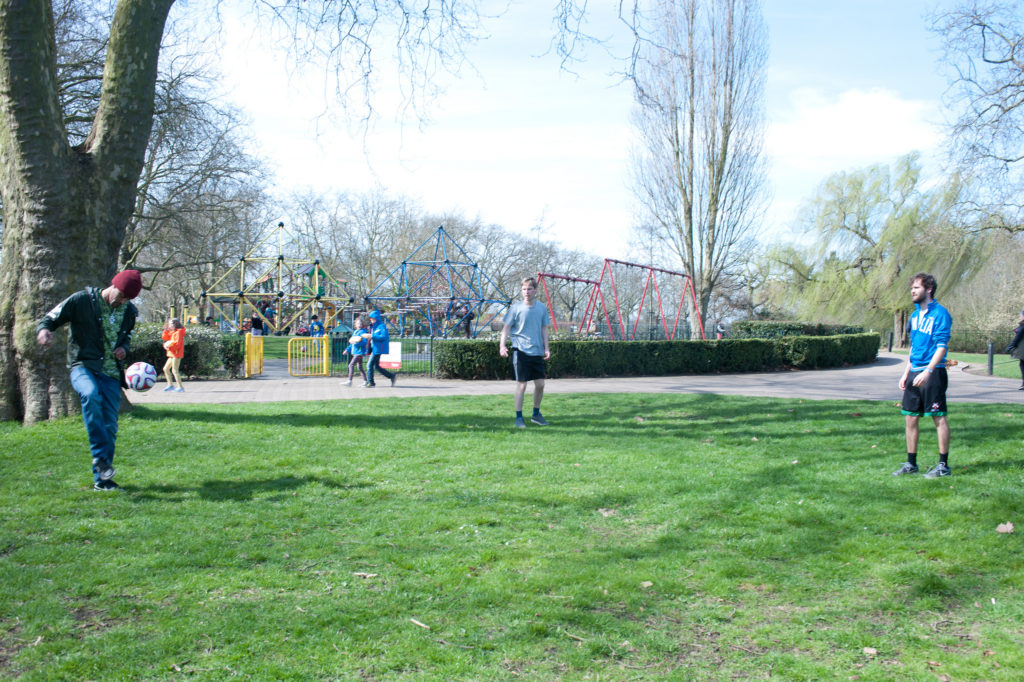
Over the last six years more than 50,000 people have encountered over 75 digital artworks that Furtherfield has brought to the park, working with international artists who reveal the invisible forces at play in machine and digital infrastructures. This summer Furtherfield extends its programmes beyond the Gallery and Commons venues into public green space of the park as we announce the first exhibitions, workshops and labs as part of Platforming Finsbury Park.
We are inviting park users to collaborate with us to transform the park into a public platform for cultural adventures, social inventions and reflections; to work with artists, hackers and academics from all backgrounds to rethink the social impact of technology and its flows on public spaces; and to bring local needs to the forefront in the context of planetary-scale techno-social advancements.
Currently showing at Furtherfield Gallery in the heart of Finsbury Park is the exhibition Poetry for Animals, Machines and Aliens: the Art of Eduardo Kac which is free and open to the public every day through May. The exhibition includes Lagoogleglyph, the third in a series of images as part of a global, networked artwork that takes the form of a pixelated bunny painted (in this instance) onto a field in the park, to be enjoyed by people on the ground and seen from Google Earth. In his essay Andrew Prescott, curator of the exhibition and Professor of Digital Humanities at Glasgow University revisits historic antagonisms between culture and technology prompted by reflections on the invention and imagination at play in Kac’s digital poetry.
Meanwhile families are joining artist Michael Szpakowski to use the very same satellite infrastructure to create GPS bunny drawings in his workshop series Let’s Fill the Park With Rabbits!
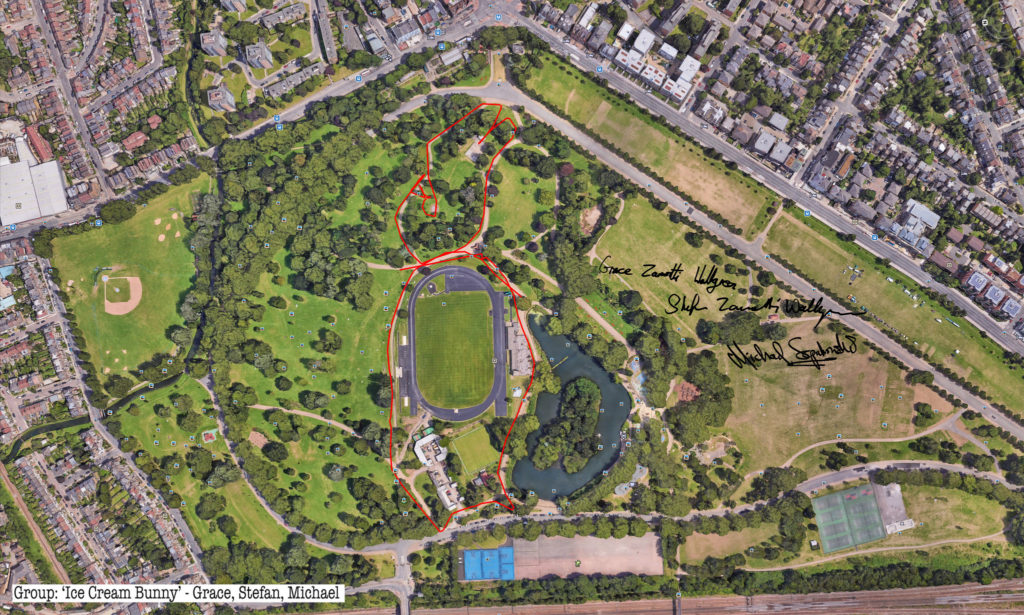
We hope that Platforming Finsbury Park will also start to flip some assumptions about who and what both art and technology are for. Over 180 languages are spoken in Finsbury Park. We want to make space for conversations and experiments with people from different backgrounds. Alongside the exhibition Andrew Prescott is also leading a series of public workshops on the theme of Digital Transformations promoting dialogue between and across diverse cultures.
In late May, we host Playbour – Work, Pleasure, Survival, a 3 day lab for artists, scientists and technologists dedicated to “the worker in an age of data and neurotechnologies”. From these will flow art commissions and collaborations towards our next exhibition in July.
Here you can read an interview with designer Ling Tan about the SUPERPOWER wearable technology workshops at Furtherfield Commons last summer in Finsbury Park. Ling tells us about how a group of young women from All Change Arts worked with her to devise activities and to learn about creating and interpreting data to themselves shape attitudes and behaviours. Dani Admis, curator of Playbour, continues this work later in the summer, exploring with local young women how they might effect change on their own terms, using the conceptual power tools of neuroscience.
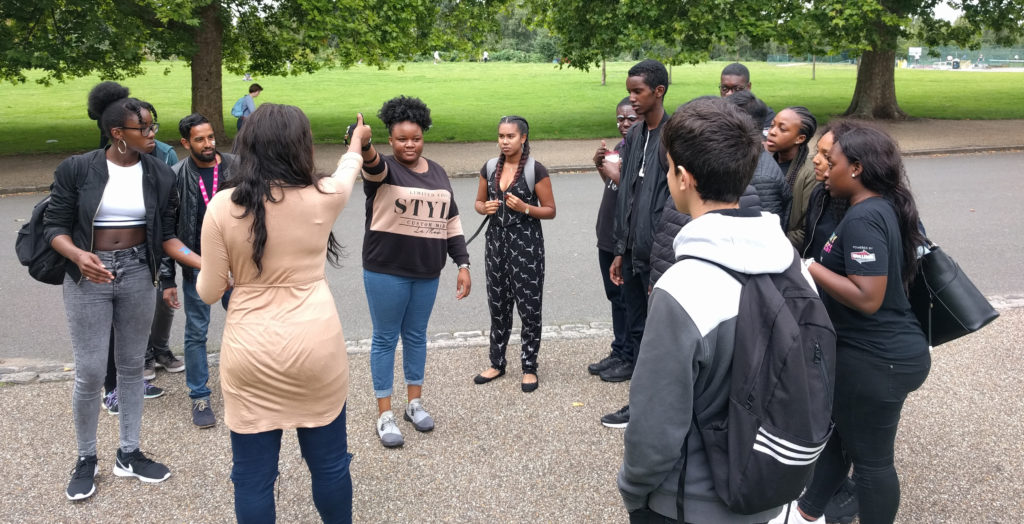
Finally a provocation to Furtherfield from Simon Poulter, artist, technologist and producer of NetPark, the digital art park at Metal in Southend, who is working in partnership with us. He celebrates our commitment to the commons “as a real thing, worth our energy and stewardship, the point at which people do touch each other and listen.” He also issues a call to action…“It is time to invent another future, lest we will become the disrupted and not the disruptors.”
As Manuel Castells famously put it ‘The flows of power generate the power of flows, whose material reality imposes itself as a natural phenomenon that cannot be controlled or predicted… People live in places, power rules through flows’. [2] And in network society these flows often have the power to wash clean away communities’ ties, extracting value and flowing it to the private interests of absent and distant persons and bodies.
So our future mission grounds us in Finsbury Park, while maintaining our global reach. We are passionate and committed to multiple points of entry, bringing in consenting and diverging voices, to channel and circulate flows locally to generate the power to enact this public place together with verve.
Much of our cultural history of the past two hundred years has been defined by anxieties about the growth of a technological and commercial society. In the nineteenth century, Samuel Taylor Coleridge bewailed ‘the philosophy of mechanism which, in everything that is most worthy of the human intellect, strikes Death’, while Matthew Arnold declared that ‘Faith in machinery is our besetting danger’. For such commentators, culture represented a means of staving off the threat of an industrial society ruled by money and commercialism.
It is easy to fall into a false binary of opposition between art and technology. When pioneering artists and scholars first demonstrated the potential for using computers in arts and humanities research in the period after the Second World War, their work often provoked antipathy because of this anxiety to maintain a distance between art and the machine. In my inaugural lecture at King’s College London in 2012, An Electric Current of the Imagination, I argued that artistic practice offers a particularly effective means of fostering a creative and critical relationship between art and technology. I declared that ‘Such a new conjunction of scientist, curator, humanist, and artist is what the digital humanities must strive to achieve. It is the only way of ensuring that we do not lose our souls in a world of data’.
Since 2012, I have held an AHRC fellowship as Theme Leader Fellow for its strategic theme of ‘Digital Transformations’. One important outcome of this theme has been further exploration of the way in which artistic practice offers innovative perspective on our relationship with technology. Artistic experiments with a range of text technologies from the typewriter to the computer provide exciting insights into the materiality of the text and the way in which text interacts with our senses as readers and writers.
One event held under the auspices of my fellowship which seemed to me to encapsulate these possibilities was an exhibition, Design and the Concrete Poem, curated by Bronac Ferran at the Lighthouse Gallery in Glasgow from 28 September – 6 October 2016. This exhibition introduced me to the work of many artists whose exploration of the materiality of text and poetry I found compelling.
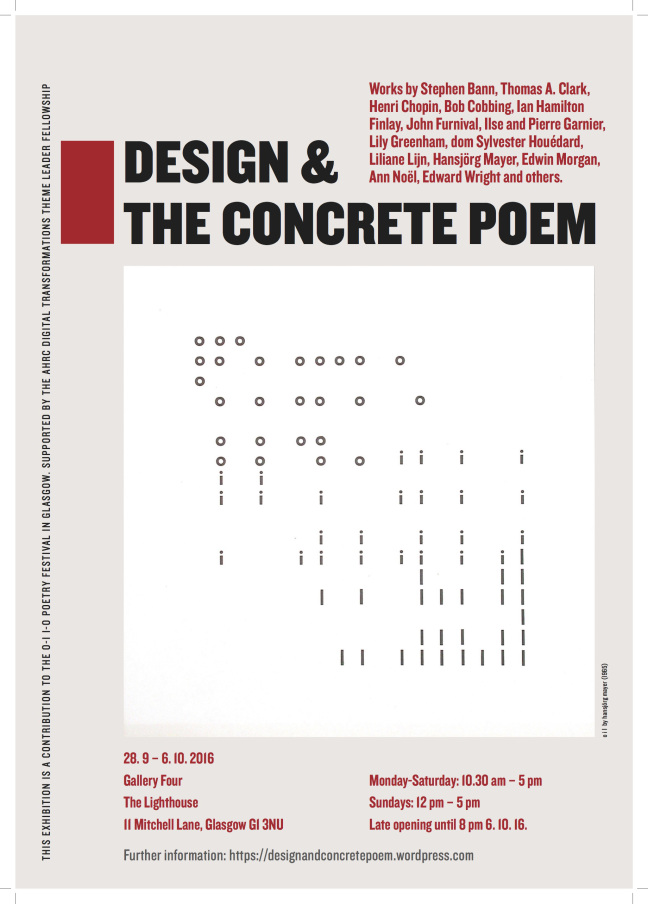
Design and the Concrete Poem introduced me to such reinventions of the text as dom Sylvester Houédard’s experimentation with typewriters or Liliane Lijn’s use of letraset on metal drums to create Poem Machines. The way in which Lijn’s exploration of Dickensian engineering workshops in London in the late 1960s inspired her Material Alphabet (1970), and her fascination with industrial processes and images, epitomises the way in which artistic practice can generate creative conjunctions with technology. Pierre and Ilse Garnier’s poem cut on a Gestetner duplicating stencil, shown for the first time in the Glasgow exhibition, offered both a novel view of textual materiality and an elegy for an obsolete technology.
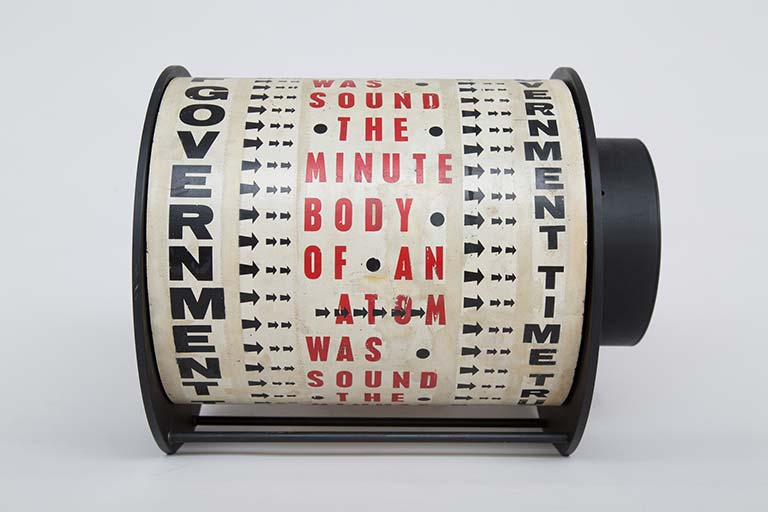
One artist whose work I have found consistently helpful in thinking about the interaction between technology, communication and our human condition is the Chicago-based Eduardo Kac (b. 1961), and I am delighted to have helped arrange at Furtherfield his first UK show, Poetry for Animals, Machines and Aliens.
Poetry is challenging. A poem questions our certainties, makes us see the world from different angles and, by encouraging us to pause and reflect, subverts that mechanistic goal-oriented outlook which so horrified Coleridge and Arnold but nevertheless dominates the modern world. Technology can give words and letters new shapes and resonances and, in so doing, subvert a consumer-oriented view of technology.
There can be no more imposing expression of technological achievement than the International Space Station. One of the most fascinating aspects of the video of Eduardo Kac’s space poem Inner Telescope, performed in 2016 by the French astronaut Thomas Pesquet, shown in the Furtherfield exhibition, are the interior shots of the cramped space station, jam-packed with wires, containers and panels from innumerable scientific experiments. The confined space station contrasts with the expansive views of the earth visible through the space station windows. This contrast itself seems like a commentary on the puny character of human technological ambitions.
Kac proposed the idea of space poetry in 2007. He pointed out that weightlessness would affect the temporal and physical logic of a poem, while the readers’ sensory engagement with the act of reading would also be different under zero gravity. Inner Telescope vividly illustrates how a simple performance such as cutting paper may be different in zero gravity, while the movement of the paper (cut into a form representing the word ‘Moi’) seems to epitomise the fragility of textual communication. In the rigidly scheduled life of the space station, Inner Telescope uses poetry to pause and reflect on the complex interrelationship of humanity, technology and the wider universe.
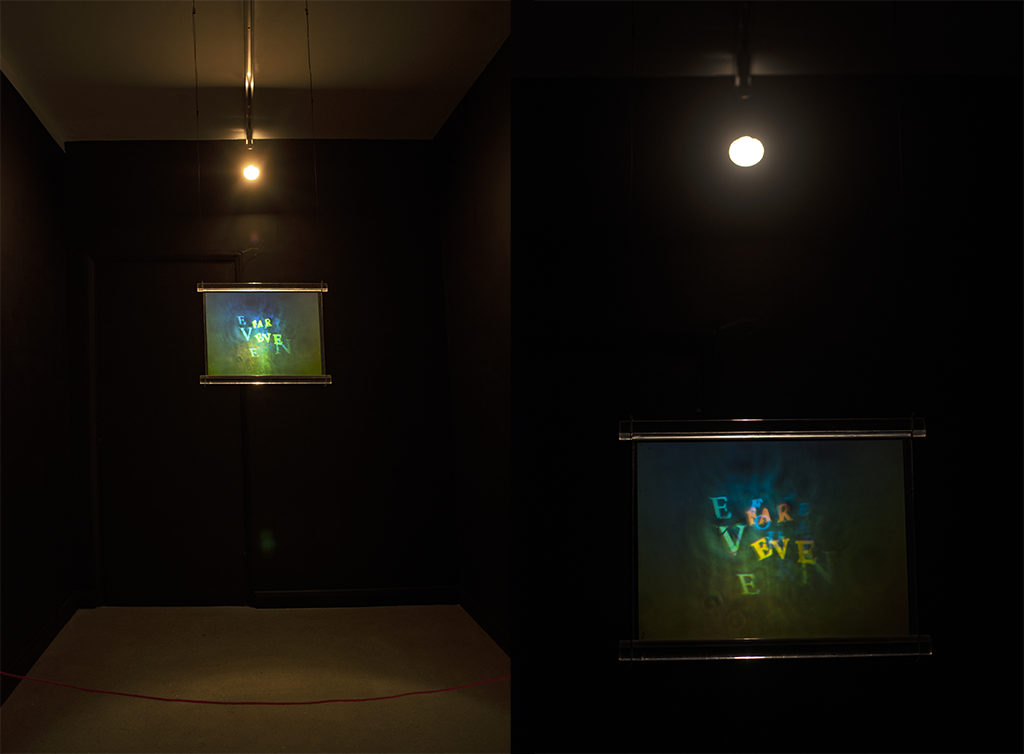
One major thread of Kac’s art has been the relentless interrogation of technology to create radical and original poetic visions. Kac experimented with the potential of the typewriter to allow different juxtapositions and textual shapes in his Typewritings of 1981-2 and from these experiments sprang his first digital poem, Não! (No!) , in 1982-4. Não! was presented on an electronic signboard with an LED display with fragmentary text blocks, encouraging the reader to guess at the links between them.
The digital poems shown in the Furtherfield exhibition illustrate how Kac makes use of digital technologies to redefine the relationship between the reader and text and to reveal new poetic elements in short words and phrases. In Accident (1994), a digital loop introduces shifts and uncertainties into a text, recalling the nervous hesitation when two lovers meet, but also causing the reader’s perception of the text to change as the piece progresses.
Another remarkable pioneering digital poem on display at Furtherfield, Letter (1996), uses virtual reality markup language to create a three-dimensional spiral of text which the reader can spin, invert, twist and explore from every conceivable angle. The text appears to be a single letter, but turns out to be two letters, one from the artist to his dead grandmother and another to his newly born daughter.
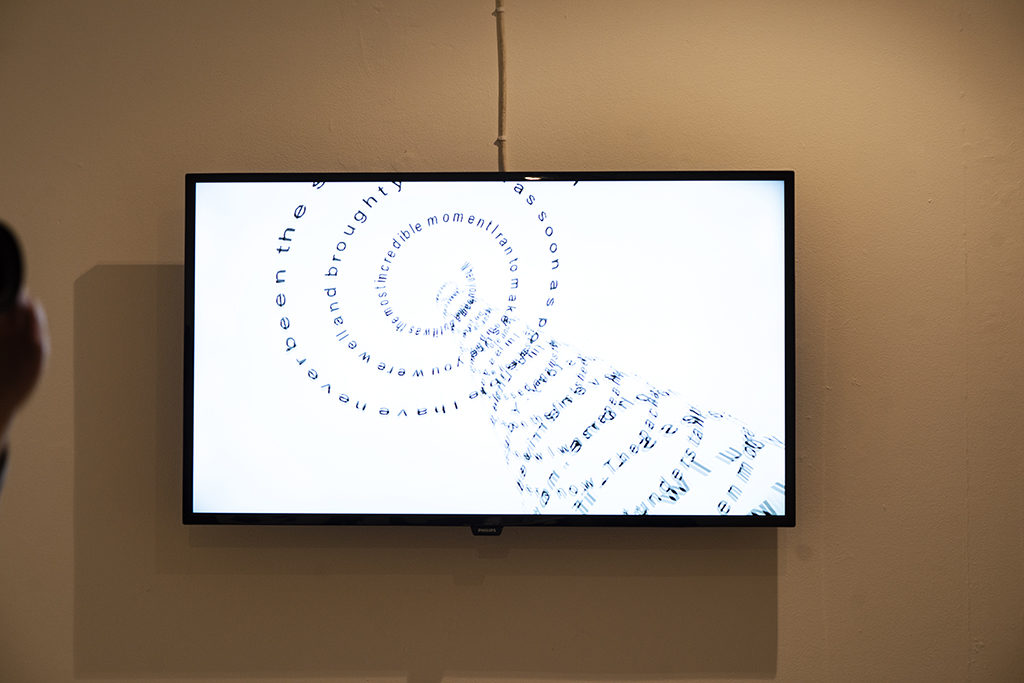
Text and language are perhaps the two technologies which most profoundly shape our lives. By altering our perception and engagement with text, Kac raises questions about the way in which we communicate and understand each other. In his beautiful holopoems, one of which is on display in the Furtherfield exhibition, Kac creates texts which shift and change depending on the angle at which they are viewed. Text technologies frequently give the impression of immutability, but Kac’s holopoems remind us how unstable and deceptive texts may be.
The full range of Kac’s technological exploration is impossible to encompass in a single exhibition, but some sense of it is evident from his website (www.ekac.org). Particularly fascinating is the way in which Kac has explored the poetic possibilities of technologies which are now redundant. Although the platform on which the work was realised is now obsolete, the work nevertheless anticipates contemporary digital cultures. Thus, Kac used the French videotext network Minitel to show the possibilities of network art. He demonstrated the potential of large-scale collaborative works by various pieces using fax. Kac was already experimenting with the potential of telepresence, robotics and wearables in the 1990s.
At each point in these explorations, Kac urges us to engage with these technologies creatively, to use them to create fresh visions, and not simply to accept them as consumers. As a historian, I have long felt that humanities scholars too often passively accept the technological resources and tools made available to them by commercial companies and others. One of the reasons why I believe passionately that humanities scholars should engage more closely with artistic practice is that such a dialogue will foster a more creative and critical approach to the use of digital methods by humanities scholars. The artists whose work I have encountered in the course of my AHRC Fellowship, such as Fabio Lattanzi Antinori, Michael Takeo Magruder, and Katriona Beales as well as pioneers such as Nam June Paik all convey the message that we need to engage creatively with technology. Technology is a threat if we view it passively as an inhuman external force; if we rather seek, like Kac and these other artists, to interrogate, extend and reimagine technology in a creative way we can hope to take greater ownership of it.
This is most spectacularly illustrated in Kac’s bio-art. It is now becoming evident that new biotechnologies will within a short period of time profoundly alter human existence and personality. Kac’s bio-art (following in a tradition which includes the creation of germ pictures by Sir Alexander Fleming) again encourages us to engage creatively with these emerging technologies.
DNA is text and DNA can be poetry of the most profound sort. In a series of works called Genesis (2001), a synthetic gene was created by Kac by translating a sentence from the biblical book of Genesis into Morse Code, and converting the Morse Code into DNA base pairs according to a conversion principle developed by the artist. The sentence chosen was Genesis 1:26: ‘Let man have dominion over the fish of the sea, and over the fowl of the air, and over every living thing that moves upon the earth’.
Visitors to the gallery showing Genesis could trigger mutations in the bacteria’s DNA by switching an ultra-violet light on and off. This in turn mutated the text when it was converted back in morse code and then into English. The artist comments that ‘the ability to change the sentence is a symbolic gesture: it means that we do not accept its meaning in the form we inherited it, and that new meanings emerge as we seek to change it’.
Kac’s most well-known work is GFP Bunny (2000) in which an albino rabbit called Alba was bred in a laboratory with a gene causing the rabbit to glow fluorescent green under a blue light. Kac’s image of Alba has become very well-known and was perhaps one of the first iconic art images of the twenty-first century. We will be exploring the cultural phenomenon of Alba in another exhibition at the Horse Hospital called ‘…and the Bunny goes Pop’, opening on 2 June 2018.
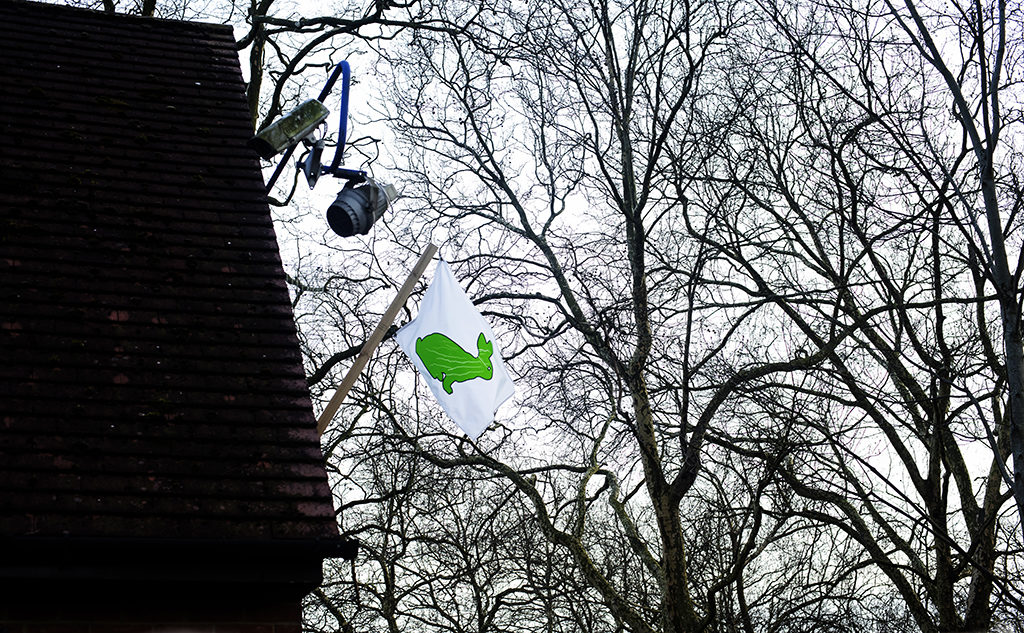
The distinctive image of Alba, shown on The Alba Flag (2001) hanging outside Furtherfield during the exhibition, is also a highly poetic image, conveying many messages about identity, the nature of life and belonging, and the increasing intersection of these with technology. Kac’s memories of Alba prompted him to create a wordless language system incorporating rabbit imagery which he called lagoglyphs (from the ancient Greek words ‘lagos’ for hare and ‘glyphe’ for carving).
Kac has now begun a series of Lagoogleglyphs, large lagoglyphs designed to be visible from the satellites which provide the imagery for Google Earth. Lagoogleglyph I (2009) was installed at Oi Futuro, Rio de Janeiro, Brazil and Lagoogleglyph II (2015) at Es Baluard Museum of Modern and Contemporary Art, Palma de Mallorca, Spain. Lagoogleglyph III has been installed in Finsbury Park.
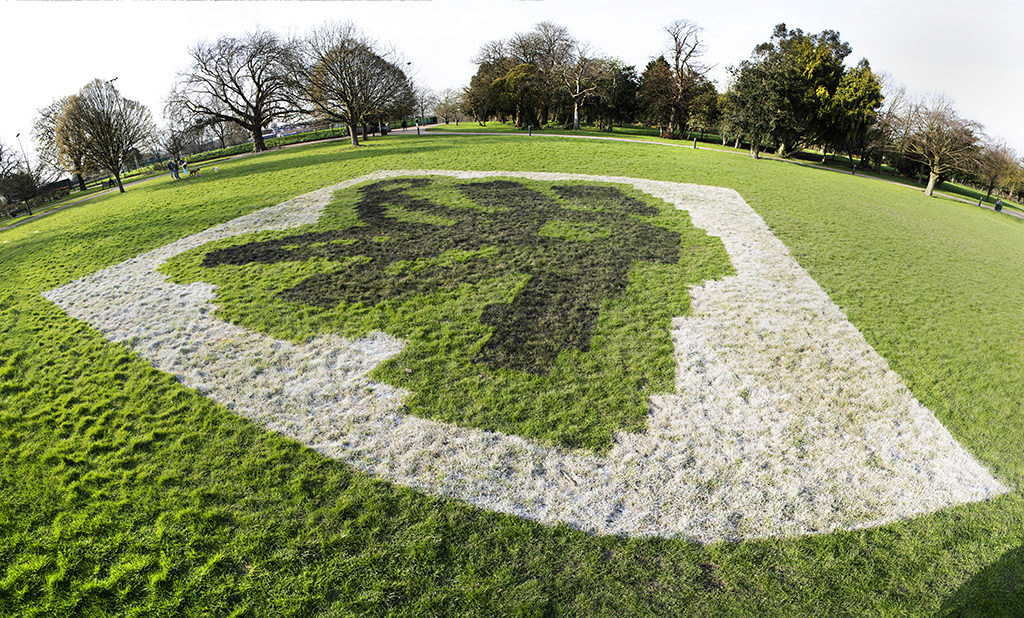
The Lagoogleglyphs encapsulate what is to me the central message of Kac’s work. Google is a vast all-encompassing technology giant which encourages us to consume its services while it makes money from data about us. The way in which Google Earth acts as a panopticon for the world, presenting an idealised sunny view of the planet’s surface, symbolises the hierarchical downward nature of much modern technology.
How can we seek to make our presence felt with the world of mass corporate technology? Painting a huge image in Finsbury Park is an inspired way of intervening in the artificial deracinated corporate view of the human world presented in Google Earth.
When the Arts and Humanities Research Council established its strategic theme of ‘Digital Transformations’ in 2011, the terminology echoed that used in many corporate contexts, and was redolent of improved business processes and data management. Eduardo Kac’s work reminds us that real digital transformations are achieved through creative interrogation of technology and through reimagining how we engage with that technology. Poems turn out to be true drivers of digital transformation.
Artist and designer Ling Tan talks about the SUPERPOWER! workshop that explored ways to empower young women through a creative exploration of wearable technology in public space.
Last summer, artist and designer Ling Tan worked with young peer leaders from All Change Arts, and the Furtherfield team to devise a project called SUPERPOWER! Finsbury Park. It brought together young women from different walks of life to discuss their relationship with the city. The project explored the ability for technology to bring about female empowerment, and question the participant’s role as female in regards to decision making about our city.
Three common themes by the participants were collectively identified, and linked to a place in Finsbury Park. Using the themes to co-create a series of wearable devices that enabled them to record their subjective perceptions of the city using gesture sensing technology. These were: Cultural diversity and inclusivity in our community; Safety of individuals in the London Borough of Islington and; Wheelchair accessibility around Finsbury Park area
It was all co-scripted and used for an exploration walk, involving the team walking around a specific area of Finsbury Park, performing and recording their subjective experiences using the wearable devices that catalogued their gestures. During the workshop, participants designed body gestures using the wearable technology which track their body gestures and communicate remotely with each other through haptic/audio sensors.
Marc Garrett: Where did the idea for the workshops come from and how did the concept of superpower shape what participants did with your wearable technology.
Ling Tan: In SUPERPOWER! Finsbury Park, the participants were young women aged 15-25 years old and almost all of them have no prior knowledge of electronics and coding. Instead of the workshop being about coding and making, I wanted it to focus on empowerment, challenging them to go beyond their comfort zones. Hence the term “superpower” became a powerful concept to get them to think about technology as a form of superpower that extends their perception into the environment. The idea for the workshop built upon a couple of projects I was doing over the past few years; WearAQ and Fakugesi Social Wearables. The projects use wearable technology to enable different communities to actively record and map out their relationship with their cities through individual subjective perception in the form of body gestures. For example, perception of air quality in London, UK and perception of safety on the streets in Johannesburg, South Africa.
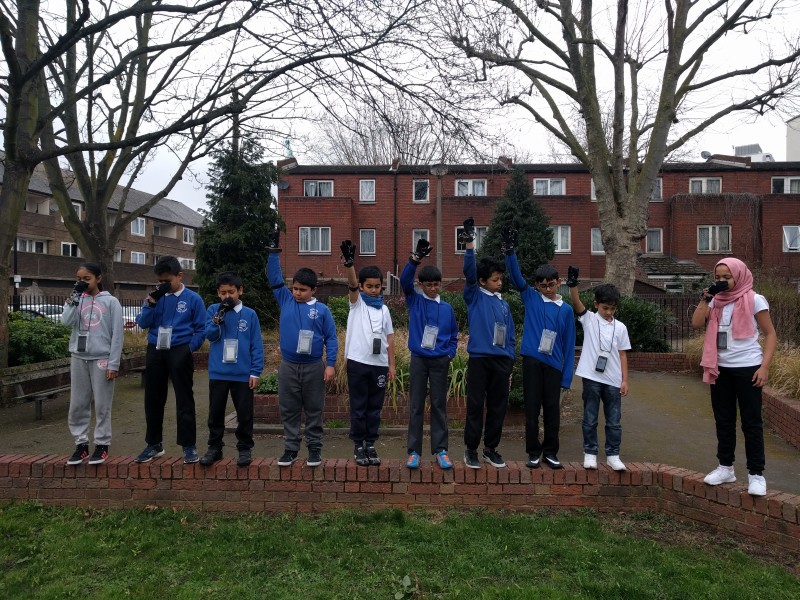
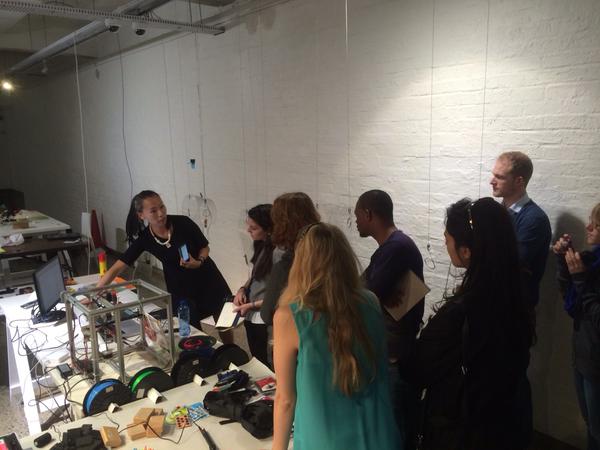
In the workshop, participants discussed about their relationship with Finsbury Park, designed experiments and body gestures to map out their own relationship through the use of an existing set of wearable devices, went out into public space and run with experiments with strangers, park users. For me, learning about what they want to do with technology is more important than picking up skills like coding or fabrication.
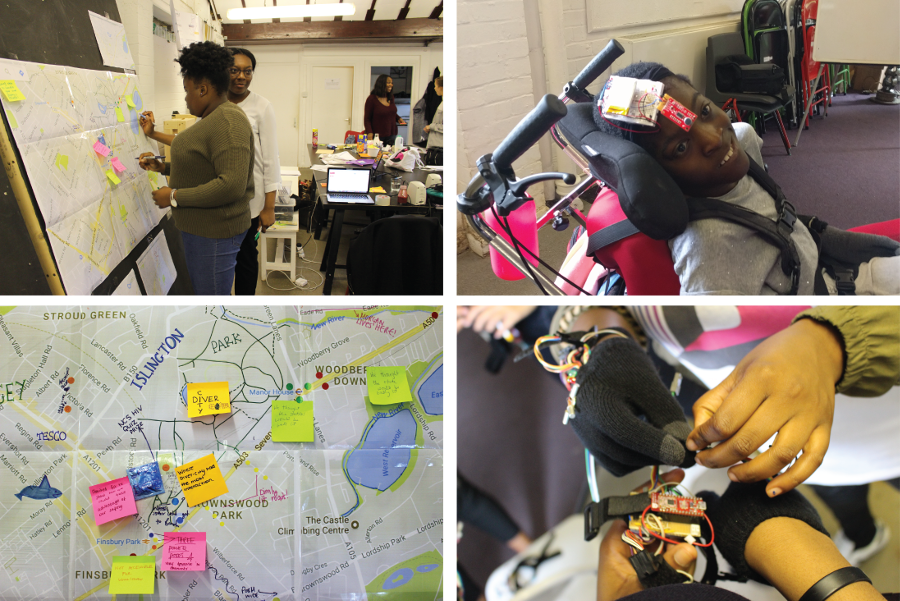
MG: We were surprised to hear how much the young women had appreciated being taught in depth about how the wearable technologies worked as part of this workshop. Do you think this informal workshop format offers a different way of supporting learning about and working with technology? What most surprised you about the way that the young women responded?
LT: I wanted to steer away from a conventional technology workshop where participants would focus on coding and fabrication, than design, because these are skills that they can pick up themselves through on-line documentation and support. For me, what is more important is to figure out what their own interests are with technology, by learning it through hands on design activities with ready made wearable technology. That way, it makes them feel comfortable with tackling complex technology and it also gives them the opportunity to learn about issues that might occur when technology is tested in the real world, checking it out when it does not work and why.

I was most astonished by their speed of learning and how well they picked up the tech knowledge. For example, one part of the workshops involved learning about the body gesture and what the wearables can detect through decoding “1” and “0” read via the body gesture sensors. I was very surprised that they were able to quickly translate that into their own body gesture design.
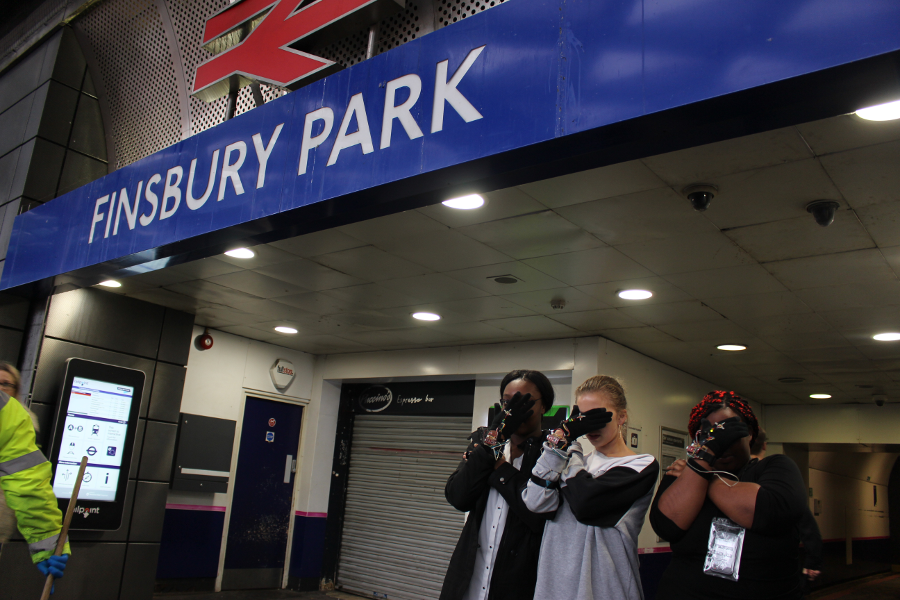
MG: Your workshop addressed questions of value in technology innovation, in the particular context of working in the public space of the park. Please tell us about how you approached these questions and why this is important to you.
LT: I think its is important to demystify technology especially given that we are living in an era where technology is so embedded into our everyday life that we take it for granted and do not notice its impact. It is important for the younger generation to learn about ethics of technology, to be curious about who and why companies are designing specific types of technology, and most importantly, to learn that technology does not always work, that technology cannot solve all our problems. They need to learn to be proactive and have a sense of agency in tackling issues concerning their own environment. For example, issues such as safety on the streets cannot be solved entirely by technology, it also needs other input such as citizen vigilance, policy and law changes.
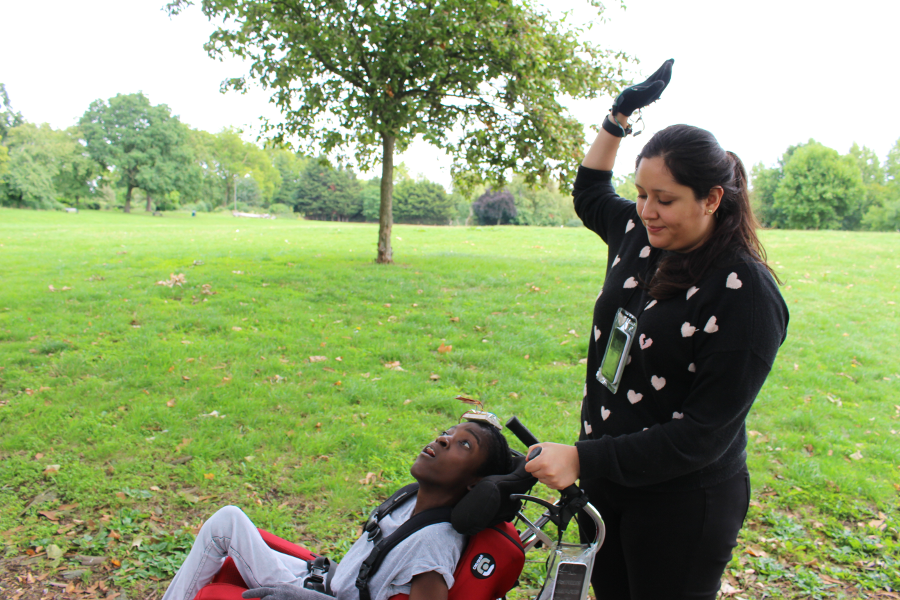
SUPERPOWER! Finsbury Park was a part of the B Creative Summer School, a programme of arts projects created by young women for young women aged 16 – 25 in Islington.
Special thanks to:
All the participants involved in the project
Peer leaders from All Change
Ella Medley Whitfield
Commissioned and supported by: Furtherfield and All Change
This project has been funded with the support from the European Commission. This communication reflects the views only of the author, and the Commission cannot be held responsible for any use which may be made of the information contained therein.
Valuing people is a core property of wealth creation, wealth creation can be positively bound into communities. We can’t afford not to be involved in digital creativity because it explores areas of social space that are entwined with intrinsic cultural and economic value.
The point of entry has become ubiquitous, we are everywhere, they are everywhere – I am over there and here too. Marshall McLuhan, the Canadian media theorist gave us ‘emotional extension in electronic space’ [1]before we came up with the clumsy and often misunderstood paradigm of ‘post-digital’ – a way to describe a circularity and return to being human that accepts the intersubjectivity and convergence we feel with other people and technology.
It is this corporeal and algorithmic unification and association that Furtherfield grasps; sometimes like harsh high summer nettles on uncovered hands, gathered as ingredients for a convivial soup. Not afraid to be stung or to make the soup, even though after 22 years of foraging you are not now the only voice or flag raised at the intersections of art, technology and social change. The mission is always different and always the same. This then is my provocation to you.
The case for digital creativity has grown. Why is that? Because there is deep unrest and even malevolence in electronic spaces and at their corporeal nodes. “The creative adult is the child who has survived,” says Ursula K. Le Guin.
As creative people engaged in the field we are with agency and in turn create agency; we gladly pick up refurbished laptops, remixed maps and fragmented tweets. Our fieldwork means we are in the river, standing watching by the shore, and holding up a mirror in the lobby of the hotel. We facilitate others, not just ourselves, we do it with others. Artistic people are children and not confined or restrained by common sense orders from the immaterial elite – some are pointed, focused and ready to enter the field, others are yet to claim their agency, and even more have yet to experience due North and due South. We can provide the co-ordinates, the beginning of the map and the line of sight. Artists in the future will become agents of change and observers of truth in a familiar return to base. And so we are not given to the idea, in the field, of carrying out instrumental command and we caution ourselves against suggesting this to others.
In a hotel in Sweden we listened as the French Philosopher, Bernard Stiegler brought attention to our attention. In clipped and someway jarred English, he opened up the vast chasm and problem of attention as the fundamental commodity of our age (emotionally extended, post-digital etc). His references to ‘techne’ willfully conjured up derivations from Greek – craftsmanship, craft and art. We are crafting the digital to draw attention to ourselves and our products. We are becoming products, through a process of digital reification. Lukács describes reification ‘as a relation between people that has taken on the character of a thing’[2]. So, while humans and machines merge evermore, we understand that the end-point of creative processes is not to make attention-seeking people become products and things, it is to diversify our subjectivities and illuminate the way forward for all.
The agency of artists has been a key factor in the development of the Furtherfield’s mission in its first two decades. This agency broadly disseminates to artists networks, activism, societal change, environmentalism, localism, global affairs and more recently emerging technologies such as blockchains. Within an unfolding world political landscape, these areas of interest show greater convergence and potential as moments of reflection become more important in the reified world of products. Our role is to be that reflective space for 360 degree scanning and to hold digital time up in the chain.
Our future mission grounds us on our locus in order to do this, while maintaining our global reach. We are passionate and committed to multiple points of entry, bringing in consenting and diverging voices. The ‘commons’ to us is a real thing, worth our energy and stewardship the point at which people do touch each other and listen.
We know that technology will not save us and furthermore we propose that this is not the right question. In working in partnership with academics, businesses and other institutions we are always asking ourselves where progressive change can come from, in a series of open dialectical spaces. Finsbury Park offers us a node in which to conduct business and make new wealth – cultural, social and economic capital. The predication of wealth creation on technology alone is too simplistic when a multitude of tools are needed. Our approach to the idea of the ‘commons’ is to use old and new tools and ways of getting things done together..
As McLuhan says: “Once we have surrendered our senses and nervous systems to the private manipulation of those who would try to benefit from taking a lease on our eyes and ears and nerves, we don’t really have any rights left. Leasing our eyes and ears and nerves to commercial interests is like handing over the common speech to a private corporation, or like giving the earth’s atmosphere to a company as a monopoly.” (from Understanding Media, 1964.)
We are not isolated from the huge pressures of the global economy, when advancements outstrip the ethics and the algorithms that come to define new normative patterns and processes. The role of digital creativity and artists is now fully emerging as one that reconnects them and us back into the critical space that Goya, Galas and others occupied. So, we can hold up time and re-enter it at a different point. Yes, Furtherfield offers time travel!
The disruptive power of technology is evident in its ability to unhinge and even eliminate existing businesses, local centres and distribution methods. This is not new, just as McLuhan defined electronic extension in the 1960s, Clayton Christensen defined ‘Disruptive Innovation’ in his book The Innovator’s Dilemma in 1997. However, digitally disruptive business models such as Uber are now mainstreamed and fast-tracked into our everyday experiences. With the advance in real time data and algorithms these disruptions can have a dramatic effect in social and economic terms. We are faced with a shift in the language from the progressive and anti-establishment power of Punk and music culture; into the realms of digitally distributed start-ups, iterative technologies and remix culture.
It is time to invent another future, lest we will become the disrupted and not the disruptors.
Image credit: Museum of Contemporary Commodities by Paula Crutchlow at Furtherfield 2016
DOWNLOAD PRESS RELEASE
DOWNLOAD GALLERY HANDOUT
SEE IMAGES FROM THE PRIVATE VIEW
In his first solo show in the UK, pioneering media artist Eduardo Kac puts poetry into space in entirely new ways and prompts us to ask “How do words work? What happens if we look at them upside down or inside out? What kind of poem could be made by an astronaut in outer space? What has poetry got to do with green bunnies?”
Kac explores how digital and other technologies provide poets with new possibilities of sound, light and movement. Even space flight offers the poet opportunities. Kac moves the poem off the page and into action. He explores the poetic possibilities of technologies ranging from digital videos and holograms to DNA manipulation and space flight, liberating poetry from the constraints of the printed page.
You can experience poems by Kac in the three rooms of Furtherfield Gallery as well as outside in the park. Follow the rabbit-shaped drawings on the paths in the park to see Poetry for Animals, Machines and Aliens in Furtherfield Gallery and installed in the field nearby.
Kac’s most famous work is GFP Bunny (2000), in which a rabbit called Alba was created in a laboratory with a gene causing her to glow fluorescent green under blue light. The artist made The Alba Flag (2001), on the outside of the Gallery next to the entrance, to celebrate Alba. Kac’s work with Alba prompted him to create a wordless language called lagoglyphs that give new expression to the bunny.
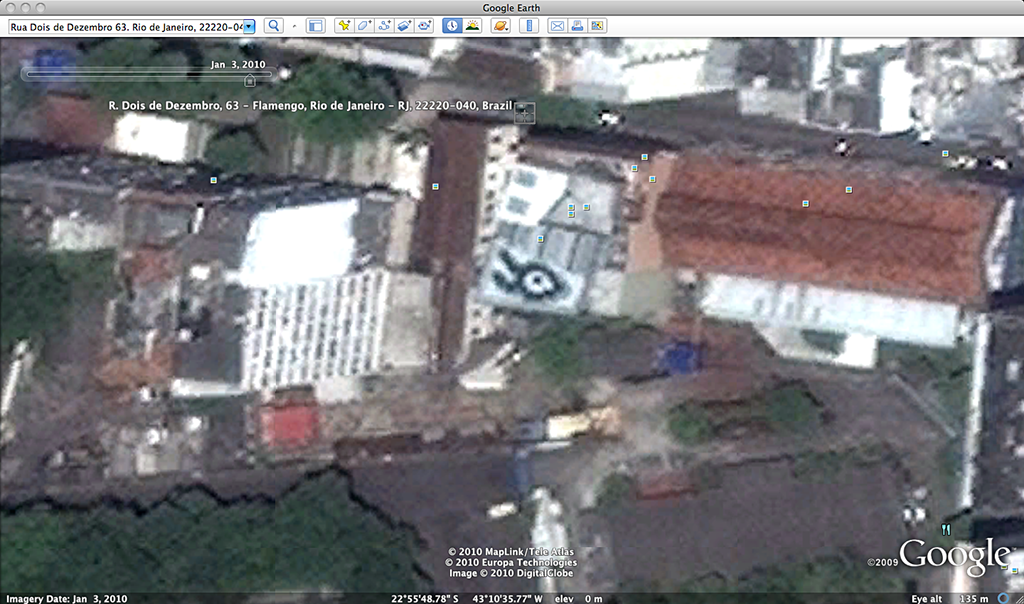
One of the highlights of the exhibition is Kac’s Lagoogleglyph, a work made for viewing from space. Covering a field in Finsbury Park it is optimised by Kac for viewing through satellite imagery and visible in Google Earth. The Lagoogleglyph is part of a series which forms a globally distributed artwork visible only from space. Earlier Lagoogleglyphs were installed at Oi Futuro, Rio de Janeiro, Brazil (in 2009) and Es Baluard Museum of Modern and Contemporary Art, Palma de Mallorca, Spain (in 2015).
Also featured in the exhibition:
In Adhuc (1991), holography alters our behaviour as readers. You cannot read the poem left to right. You must dance a little in front of it. As you do this, letters and words shift, drift away and colours change.
Inner Telescope (2017), performed by the French astronaut Thomas Pesquet in the International Space Station, is poetry for zero gravity. The form has neither top nor bottom, front or back, left or right. Sometimes it looks like the French word MOI (me). At other times, it looks like a human figure with the umbilical cord cut. It is the first poem to be made in outer space.

Let’s Fill this Park with Rabbits!
Free family Workshops
Sat 7 April, Sun 22 April & Mon 7 May, 11am – 4.30pm
Furtherfield Gallery
Families and groups of all ages are invited to join artist Michael Szpakowski to design their own giant rabbits and draw them on Finsbury Park by walking your own rabbit route using GPS software. Just turn up on the day to book a place for your group – workshop places will be offered on a first-come first-served basis on each day. Groups and families can also just turn up on each day to join in with the fun and walk some bunny routes in the park.
FREE
Arts and Humanities Research Council Digital Transformations Workshops
Inspired by and building on the Kac exhibition, these workshops will draw together themes and issues which have emerged from the AHRC thematic research programmes including Translating Cultures, Science in Culture, Care for the Future and Connected Communities.
More info
Digital Transformations and Community Engagement
18 April 2018, 10.30am – 4pm
Furtherfield Commons
How can we promote collaboration between communities and academic researchers? Do digital methods help create community engagement?
FREE | booking essential
Reconnecting Artistic Practice and Humanities Research
25 April 2018, 10.30am – 4pm
Furtherfield Commons
Can a renewed dialogue between humanities scholars and artistic practice provide innovative perspectives to confront current social and cultural challenges?
FREE | booking essential
Language and Diversity
8 May 2018, 10.30am – 4pm
Furtherfield Commons
Exploring the role of language and translation in promoting understanding and communication within, between, and across diverse cultures.
FREE | booking essential
Science in Culture
23 May 2018, 10.30am – 4pm
Furtherfield Commons
How can art engage with science and technology? And how can art explore the role of science in culture?
FREE | booking essential
Further Eduardo Kac exhibitions are being held in London during 2018 as part of the AHRC Digital Transformations theme. During June, the Horse Hospital, Colonnade, Bloomsbury, London WC1N 1JD, will host an exhibition called … and the Bunny Goes Pop!
This exhibition forms part of research undertaken by the Digital Transformations strategic theme of the Arts and Humanities Research Council. It has been curated by Professor Andrew Prescott of the University of Glasgow with assistance from Furtherfield team and Bronac Ferran, with advice and support from the artist.
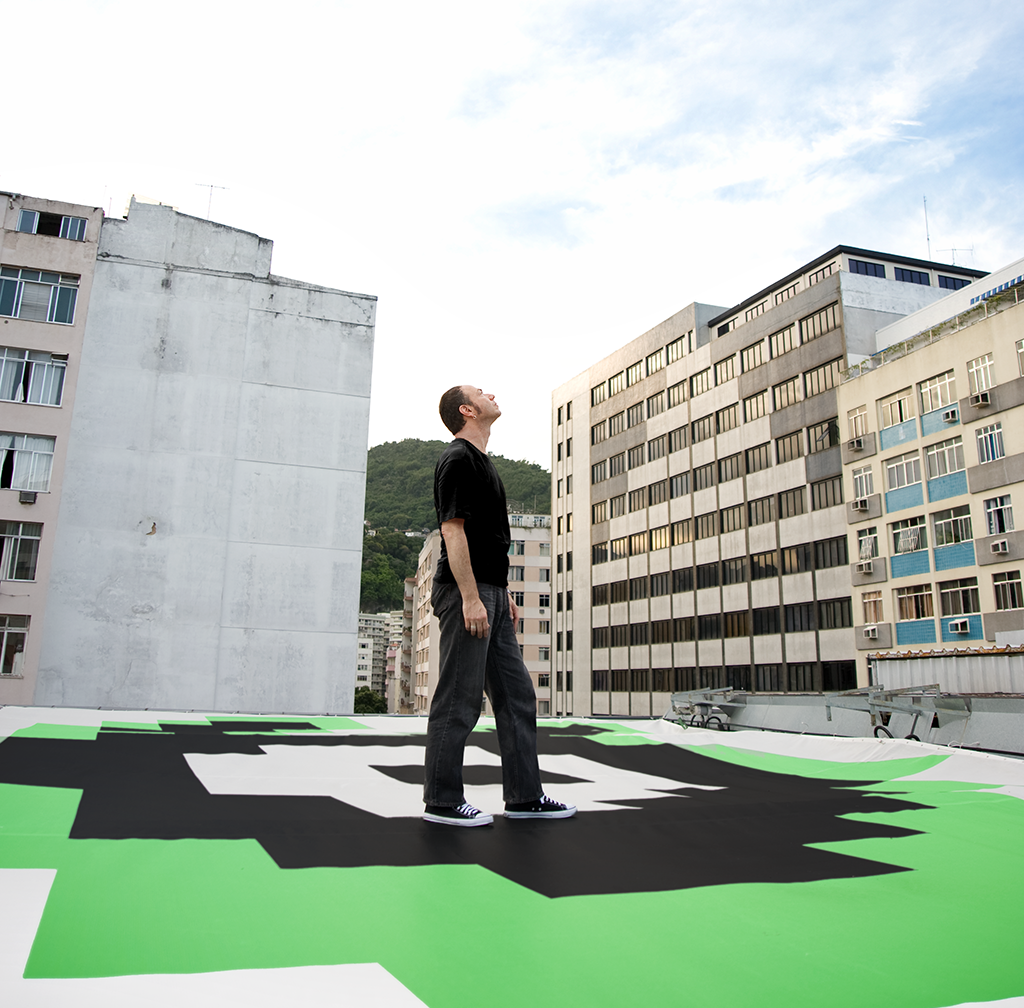
Eduardo Kac has been a pioneer in exploring the use of new technologies to create innovative poetic experiences. Experimenting with a range of technologies since the 1980s including fax, photocopiers, LED screens, the French videotext service Minitel, holography, conductive ink, and a variety of digital and network technologies. Kac’s distinctive body of work has been featured in exhibitions in New York, Paris, Rio de Janeiro, Madrid, Shanghai, Tokyo and many other venues. He has received the Golden Nica Award, the most prestigious award in the field of media arts and the highest prize awarded by Ars Electronica. This is his first solo exhibition in the United Kingdom.
Andrew Prescott, Professor of Digital Humanities at the University of Glasgow and Theme Leader Fellow for the ‘Digital Transformations’ strategic theme of the Arts and Humanities Research Council.
Furtherfield is an internationally renowned arts organisation specialising in labs, exhibitions and debate for increased, diverse participation with emerging technologies. At Furtherfield Gallery and Furtherfield Lab in London’s Finsbury Park, we engage more people with digital creativity, reaching across barriers through unique collaborations with international networks of artists, researchers and partners. Through art Furtherfield seeks new imaginative responses as digital culture changes the world and the way we live.
Furtherfield Gallery
McKenzie Pavilion
Finsbury Park, London, N4 2NQ
Visiting Information
This event is part of exhibtion, Poetry for Animals, Machines and Aliens: The Art of Eduardo Kac, at Furtherfield Gallery.
Inspired by and building on the exhibition, these workshops will draw together themes and issues which have emerged from the Arts and Humanities Research Council thematic research programmes. Workshops are led by Andrew Prescott, curator of the exhibition and Professor of Digital Humanities at the University of Glasgow.
Digital Transformations and Community Engagement
18 April 2018, 10:30 – 16:00
How can we promote collaboration between communities and academic researchers? Do digital methods help create community engagement?
FREE | booking essential
Reconnecting Artistic Practice and Humanities Research
25 April 2018, 10:30 – 16:00
Can a renewed dialogue between humanities scholars and artistic practice provide innovative perspectives to confront current social and cultural challenges?
FREE | booking essential
Language and Diversity
8 May 2018, 10:30 – 16:00
Exploring the role of language and translation in promoting understanding and communication within, between, and across diverse cultures.
FREE | booking essential
Science in Culture
23 May 2018, 10:30 – 16:00
How can art engage with science and technology? And how can art explore the role of science in culture?
FREE | booking essential
More information about Poetry for Animals, Machines and Aliens: The Art of Eduardo Kac
In partnership with AntiUniversity
Whether you smelt it, mine it, burn it, breathe it, or shove it up your ass the result is the same: addiction.
Addiction is defined as a chronic, relapsing earthly disease that is characterized by compulsive seeking and use of earth products, despite harmful consequences. It is considered a brain disease because humankind changes the earth—they change its structure and how it works.
Soft Sickness is a one evening/one day workshop hosted by the research project Shift Register exploring the signs, symptoms, circulations, exchanges, consumptions, dependencies, and management implicit in the multifarious and pathological dependence on the earth which is now named by that word “Anthropocene”. Earthly addictions produce quantified-earth self-portraiture, GIS co-dependencies, and all other variants of planetary narcissism. Earth-scale sensor systems and media networks, swathing the planet in information about itself, are unveiled with media from on- and off-planet earth science field-stations and reflections thereupon. Dependencies bring anxieties about the impending doom of resource dearths to come. People manage these anxieties with new psychotropic medications, whereas artists represent and markets bet on them, against the health of the earth and its living bodies.
Soft Sickness divines the earth lines of the often contradictory ingestion of and repeating addiction to the earth and its productions, data, memory — its circulations, seasons and natures, to the plants, the mushrooms and the animals, to fossil fuels, metals, to liquid screens and smogged surfaces, to longevity and, finally, to the real. To the thing and things which we cannot help doing (things to). To compulsively consume (the earth) is to eat and subsequently to excrete ourselves, humankind, and this cycle can be termed addiction. We feed from the earth, feeding back to the earth a world and mind-changing chemistry.
During the workshop, participants and invited guests will discuss, map, extract, ingest and excrete relations of local earth manifested in Finsbury Park in North London. Plant and pharmaceutical toxicities/ psycho-pharmacologies, poison cures, geophagic gastronomics, esoteric pollution sensing and embrace, and the invention and embedding of folkloric and human to non-human ecologies constitute parts of this invitation. We will gather psycho-active dew, imagine tales for the mole people, bake bread for crows, and make the earthworlds flesh.
We wish to develop contemporary rituals articulating the polarised and overgrown junk-tions of shamanic spirit journeyings with addiction managements; cold kicking the earth habit or indulging absolutely in the (cannibal/capital) undergrounds and (fairie) overgrounds.
SHIFT REGISTER is a research project investigating how technological and infrastructural activities have made Earth into a planetary laboratory. The project maps and activates local dynamics and material shifts between human, earthly and planetary bodies and temporalities. Contemporary, mainstream science and technology are intersected with other knowledge systems to attempt a reconfiguration of relations between humans and the earth. SHIFT REGISTER is Jamie Allen, Martin Howse, Merle Ibach, Jonathan Kemp and Martin Sulzer at the Critical Media Lab, Basel.
SEE IMAGES FROM THE WORKSHOPS
Part of the Poetry for Animals, Machines and Aliens: The Art of Eduardo Kac exhibition at Furtherfield Gallery
Families and groups of all ages are invited to design their own giant rabbits and to draw them on Finsbury Park by walking your own rabbit route using GPS software.
Taking about an hour, it will be a fun and creative time for all involved as we all work together with artist Michael Szpakowski to draw the rabbit and walk it for it to be added to the Finsbury Park map. Participants will be credited on a final image of all the rabbits created in the park.
Just turn up on the day to book a place for your group – workshop places will be offered on a first-come first-served basis on each day.
Groups and families can also just turn up on each day to join in with the fun and walk some bunny routes in the park.
Furtherfield Gallery
McKenzie Pavilion
Finsbury Park, London, N4 2NQ
Visiting Information
Ryan Bishop, Kristoffer Gansing, Jussi Parikka & Elvia Wilk (eds.) across and beyond: A transmediale Reader on Post-digital Practices, Concepts, and Institutions, Sternberg Press, 2017, pp.352, €15.00 (paperback), ISBN 978-3-95679-289-2
Although the notion of the “post-digital” has gained some prominence in media art and theory, the uptake of the term in the humanities and social sciences has so far been more muted: whilst the field of “post-digital” art scholarship is by no means new (see Berry & Dieter, 2015), the term itself is often used quite sparsely and ambiguously such that it risks becoming a vague referent for almost any form of human and nonhuman entanglement with media. This rich collection of 25 essays and artwork contributions, many from world-renowned artists and media theorists, seeks to remedy this by developing the notion of the “post-digital” as something that gains specific expression through certain kinds of critical practice. As the editors note in the introduction, across & beyond does so by focussing on the “post-digital conditions for critical media practices…for understanding and working in the transversal territories between theory, technology, and art” (p.5). Organised around a series of contributions presented in recent years by participants of the annual transmediale festival in Berlin, the transversal explorations in this reader are critical insofar as they aim to engage with the “material complexities of digital culture” beyond what the editors describe as the “phantasm” of the supposed “immaterial reality” of digital media (p.16).
To be clear, across & beyond is not strictly a theory book but a gathering of diverse academic and artistic contributions that variously approach questions concerning the “post-digital”. Some of the stakes of “post-digital” media theory are set out in this reader, and will be noted in this review, but it should be said that this is not merely a theoretical intervention into technological media.
The “post-digital” describes a set of “speculative strategies and poetics” (p.13) that act as a “heuristic to understand the historical and material contexts of media art and culture” (p.12). In this sense the “post-” of “post-digital” does not designate a temporal period after a bygone ‘Digital Age’, but instead describes an opening up of a whole “field for material but also imaginary, alternative practices” (p.13) that concern the different temporalities and spaces produced through and with media. The post-digital, then, is presented here as a field of study into the material and imaginary practices of media, which aims to offer “new means of critically linking technology, culture and nature” (p.15).

To thematise some of these traversal territories for thinking about the post-digital conditions of media, the essays and artworks in this reader are split into three themed subsections: “Imaginaries,” “Interventions,” and “Ecologies.” Rather than organising this review by treating each individual chapter, I will instead briefly suggest how certain chapters develop each of these three themes, and end by reflecting on how these themes intervene in the political stakes of social scientific engagements with digital media more widely.
At least in part, the first subsection – “Imaginaries” – develops a number of responses to the idea that the post-digital would be a field of study that rethinks the relationship between technological culture and time (see especially chapters by Gansing; Ludoivo; Daniels; Parikka; Menkman). In the opening chapter, Kristoffer Gansing develops the ‘problem of time’ for post-digital approaches to media by analysing the CD-ROM as a noteworthy “offline art form” (p.41). Rather than thinking about the CD-ROM as a redundant media of a bygone era, Gansing instead highlights the way that the “offline experience” (p.36) of the CD-ROM counters certain contemporary structures of digital surveillance. This intervention is post-digital, perhaps, insofar as the CD-ROM is seen to present specific opportunities for disrupting both processes of online surveillance, but also the reductive tendency to rush towards new, à la mode forms of digital media.
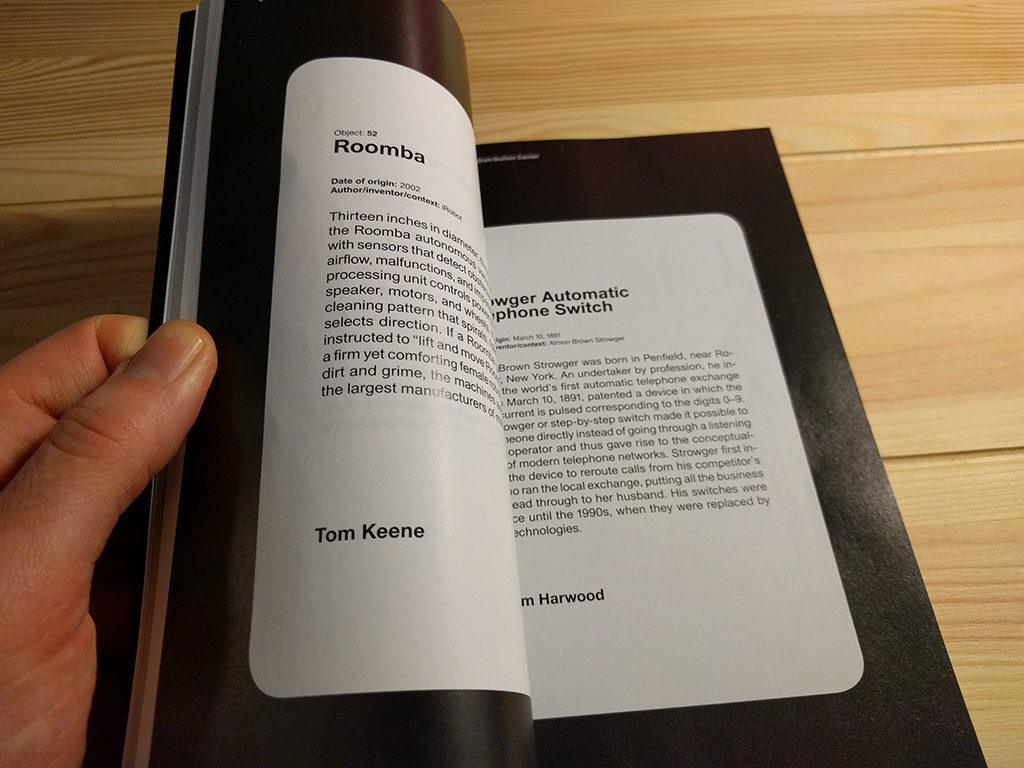
Likewise, Jussi Parikka’s chapter focuses on the question of time in the context of laboratory media and draws attention to the way that certain “time-critical technical media” (p.86) produce “micro-temporalities” that are irreducible to human perception (p.86). In producing a series of situated micro-temporalities, these laboratory media contribute to post-digital approaches to media more widely insofar as they allude to a sense of media time that exceeds humanity. Theorising the micro-temporalities of laboratory media is important because they are involved in fabricating and sustaining certain “situated practices” (p.87) of time that often exceed human perception (p.86) – a line of thought that will be familiar to those have read Parikka’s other contributions to developing a “geology” of media (Parikka, 2015).
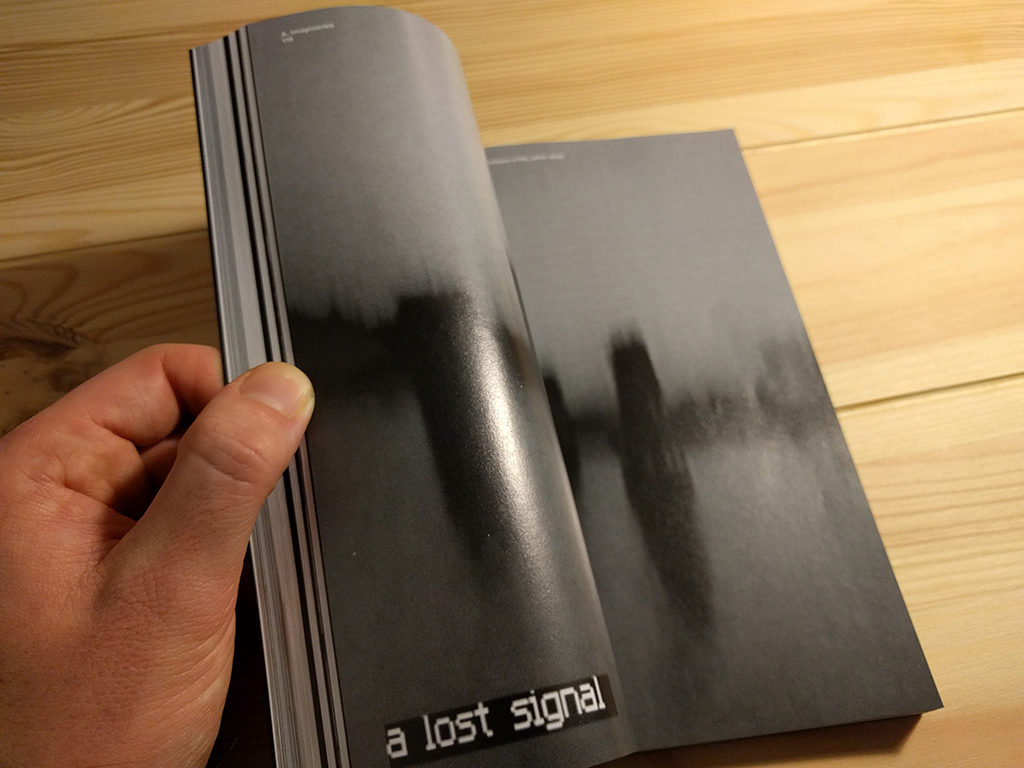
The second subsection – “Interventions” – foregrounds uses of technological media for activist and political purposes (see especially Dragona; de Lagasnerie; Oliver & Vasiliev; Sollfrank; Terranova; Juárez & Allen). In doing so, a number of chapters approach the politics of technological media through a critical engagement with its supposedly transformative power. As Jamie Allen – writing in dialogue with Geraldine Juárez’s artwork Hello Bitcoin – pointedly asks: “[w]hy is it that we cannot seem to stop regaling ourselves with hyperbolic, mythic tales of technological heroism?” (p.223). Put differently, how might media art and theory engage with ‘new’ digital media without overplaying its transformative political power? One answer to these questions revealed in across & beyond concerns the task of developing techniques for storying digital media. As Cornelia Sollfrank’s piece on “cyberfeminism” concludes, the task attending to the political power of technologies is not simply about affirming new advances in technological media, “but rather the use of imagination” (p.245): it is a task of remaking the clichéd stories told about technical cultures.
Yet, at a time when the drone and the TV series Black Mirror have gained prominence in invoking a certain unease about future technological change, what might it take to tell different stories about the political implications of technological culture? Decidedly, Daphne Dragona inflects this political question in a stellar essay on the role of “subversion” in media art. Classically, the problem of “artistic subversion” is its tendency to become appropriated into existing regimes of power, such as “media corporations and state surveillances agencies” (p.184). Identifying strategies that are already at work in “subversive” practices in media art – namely: “obfuscation”, “overidentification”, and “estrangement” – Dragona attempts the ambitious task of redefining the role of artistic subversion. Referring to an example of glitch artists, Dragona (p.191-192) notes that for such work processes of subversion and “estrangement” require a methodological approach attentive to the “hacks, errors and glitches” that “disrupt and challenge user experiences with digital media” (p.191).

Terranova’s chapter also considers how and whether the political power of technologies might offer opportunities for political transformation, but in doing so draws upon a different question around the relationship between the notion of the “commons” and certain kinds of “techno-political experiments” (p.211-215) – experiments that include, but are not limited to, certain cryptocurrencies and internet-based political parties. These experiments are noteworthy because they offer opportunities for transforming capitalist social, political and technical assemblages – assemblages that, as they are currently configured, not only produce restrictive forms of consumption and surveillance, but also limit freedoms at the level of desire through processes of subjectivation (p.213-217).
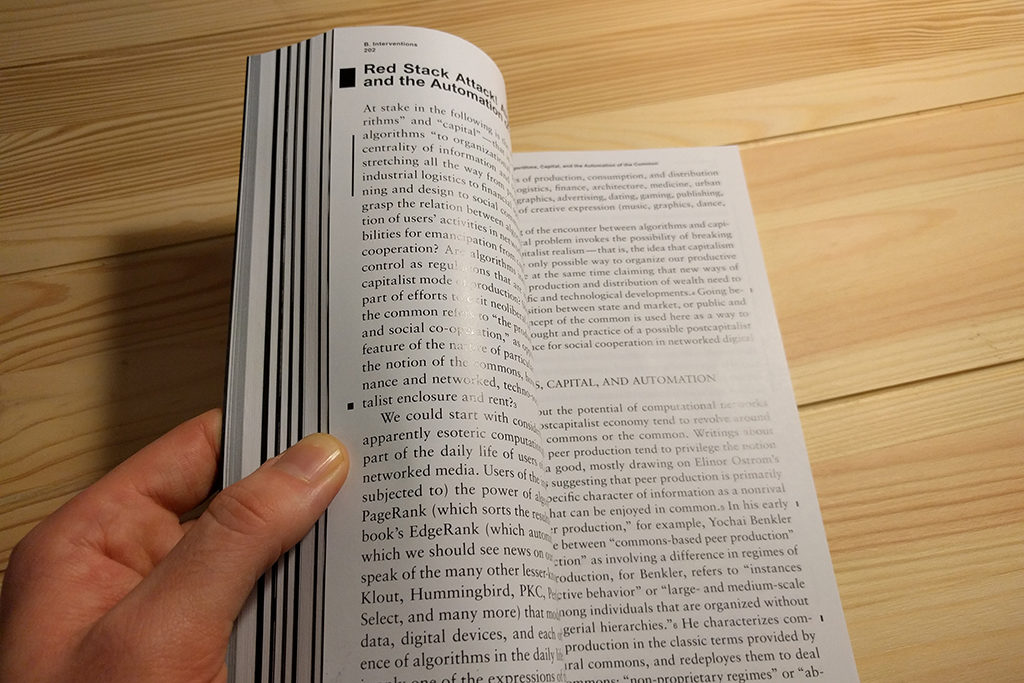
The third subsection – “Ecologies” – concerns the relationship between post-digital readings of technological media and certain kinds of technological infrastructure. In doing so it intervenes in a number of timely and ongoing social scientific debates about technology’s relationship to subjectivity (Bishop; Rossiter & Apprich; Bratton), materiality (Allen & Gauthier; Henderson; Goriunova), and affect (Goriunova; Allahyari & Rouke) – amongst others. Approaching the theme of infrastructure via user interfaces like Apple’s Siri and Amazon’s Alexa, Benjamin Bratton (p.322-323) notes that “[h]uman intelligence and machine intelligence may be radically different (one need not be the model for the other) but they are never isolated or independent of one another”. Bratton calls for a more complex reading of artificial intelligence that resists both the simple equivocation of human and machine ‘intelligence’, and the tendency to suggest that human or machine intelligence exists as an isolable entity.
Directly engaging with the question of post-digital approaches to technological infrastructure, Jamie Allen & David Gauthier – commenting on their Critical Infrastructure project – foreground the need to attend not only to spectacular forms of technological infrastructure, but also those “banal systems” (p.266) and infrastructures that “we are not supposed to notice” (p.266). The point here is to force media art and theory to generate new forms of critique and thought about technical culture beyond some of the tendencies of human perspectivism – what Morehshin Allahyari & Daniel Rourke’s chapter differently refers to as technology’s “unintended affects” (p.328).
One critical concern throughout across & beyond is the sense that the various contributions (artworks, films, photos, essays) do not always easily fit together as a contribution to post-digital scholarship and practice. Whilst the book benefits from a precise introduction, it is not always obvious how certain chapters, and their corresponding subthemes, critically engage with whether or not this field of study would be preferable to other approaches to digital media. Indeed, is the “digital” the problem to be addressed for the task of rethinking technical culture today or – as a moving composite expressed by numerous media – does it form what Deleuze (1988: 16-17) refers to as a “false problem”: that is, a problem that merely discovers pre-existing terms for its solution?

This critical question notwithstanding, and to conclude, across & beyond is highly successful in opening up novel questions about technological media: those mundane and overlooked technological processes that nonetheless offer opportunities for experimenting with profound mediations between humans and nonhumans (see here the chapter by Yokokoji & Harwood). These post-digital registers would engender a different focus from a recent emphasis in the arts, humanities and social sciences on the ways that certain dominant technological figures are variously weaponized and monetized (see chapter by Bazzichelli). In countering the logics of weaponization and monetization, this reader – like the transmediale festival – will have a wider appeal to those interested in how media art and theory keeps apace with changes to those overlooked forms of technical culture.
From the self-made celebrity of the Instafamous to the personal live-streaming of gamers, online sites of spectatorship are the emerging factories and playgrounds of the 21st century. We shop, share, and produce online, 24/7. As we do we alter the processes of how we work, what is viewed as a product, and our sense of self: work is like play and labour is seemingly without work. Playbour– Work, Pleasure, Survival, is dedicated to the study of the worker as they are asked to draw on internal resources and self-made networks to develop new avenues of work, pleasure and survival.
Over the three days we will form a community-led action research lab that brings together artists, researchers, data scientists, and activists, as well as community participants in an ambitious and intensive programme of experiments, interventions and performances. Led by a diverse community, and working towards a group exhibition at Furtherfield in July 2018, we will explore the converging spaces of work, play and well-being, as well as examine the role of the worker in the age of the Internet.
Playbour– Work, Pleasure, Survival, is an art and research platform dedicated to the study of the worker in an age of data technologies. Our first event is a three-day lab at Furtherfield Commons and we are currently welcoming submissions for people to join us!
We are looking for applications from a range of applicants artists, designers, researchers, curators, and activists, with an interest in the relationship between arts, technology, and design, and who are working on an art or research project relating to shifting realities of work, the worker, and the self, via cognitive capital, digital labour, play and entertainment spaces.
We will explore the contours and value systems we place on work, play, and well-being, and use this to work towards an exhibition at Furtherfield opening mid-July, 2018.
Each day will consist of three sessions DISCUSS, TEST, and PLAY, convened and co-led by artists, academics, designers, and activists. Participants will critically analyze and thoughtfully engage in conversations, conduct research with “workers”, test out ideas through hands-on making activities, and engage in play-driven interventions and performances. Then working in groups, develop the foundation for newly commissioned works for the upcoming exhibition at Furtherfield gallery in July 2018.
Friday 25 May, Playbour, will examine shifting realities of work and professionalism in play and entertainment spaces. Participants will DISCUSS with sociologist Dr. Jamie Woodcock (Oxford Internet Institute) and explore the concepts of playbour, digital labour, immaterial labour, and cognitive capitalism – linking these explicitly to work and play through the example of video games. We will then CONNECT with live streamers. In the afternoon, we will PLAY in a “collective empathy” session with artist Steven Ounanian looking into how pain and suffering are experienced in online contexts.
Saturday 26 May, Body/Machine/Capital, investigates data-driven decision making and the colonisation of body and machine via capital systems. The first half of the day will DISCUSS and TEST with special guests. Later that day participants will begin to develop their “game installation” projects.
Sunday 27 May, Unwitting Extraction, participants will DISCUSS and develop their “game installation” with architect Dr. Itai Palti. Using behavioural science and data technology participants will TEST ideas and thinking for game-based installations through a scientific lens in anticipation of the Furtherfield exhibition. This will be followed by a group lunch and feedback session with Dani Admiss and illustrator, Maz Hemming. To apply for a place please submit your application by midnight GMT Sunday 25 April 2018, to info@workpleasuresurvival.org
A complete application must include the following:
The lab has been organised with its partner Furtherfield Gallery as a pre-event to the Playbour– Work, Pleasure, Survival, exhibition opening in Friday 13 July 2018.Curated by Dani AdmissConcept development Dani Admiss and Cecilia Wee
Playbour – Work, Pleasure, Survival, is realized in the framework of State Machines, a joint project by Aksioma (SI), Drugo more (HR), Furtherfield (UK), Institute of Network Cultures (NL) and NeMe (CY).
This project has been funded with the support from the European Commission. This communication reflects the views only of the author, and the Commission cannot be held responsible for any use which may be made of the information contained therein.
Artists Organise (on the blockchain) was the fourth event in the DAOWO blockchain laboratory and debate series for reinventing the arts, in collaboration with Goethe Institut London.
In this special event, hosted by Drugo more in Rijeka we learned from the Croatian cultural context before envisioning, devising and testing alternative forms of blockchain-based cultural production systems, for application at Furtherfield in London.
We talked with Davor Miskovic about Clubture, the non-profit initiative that has distributed national cultural funding between a network of peers in Croatia since 2002 according to decentralised, participatory principles.
Workshop participants then took Julian Oliver’s Harvest, in which “wind energy is used to mine cryptocurrency to fund climate research”, as their focus for new proposals for blockchain-based projects to connect park-based arts venues with their local communities. Then they took turns to perform the role of a select committee of skeptical park stakeholders who wanted to know how park users would benefit from the scheme in a time of cuts to public funding and climate change.
Read the semi-fictional Minutes of the Bunsfury Park Stakeholders Group Select Committee
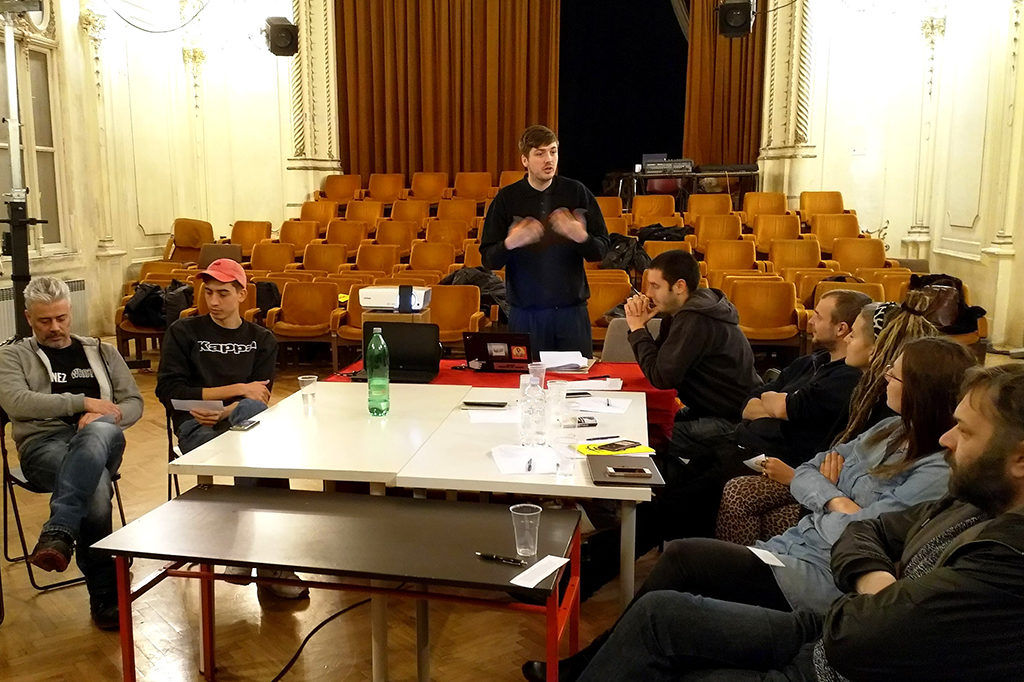
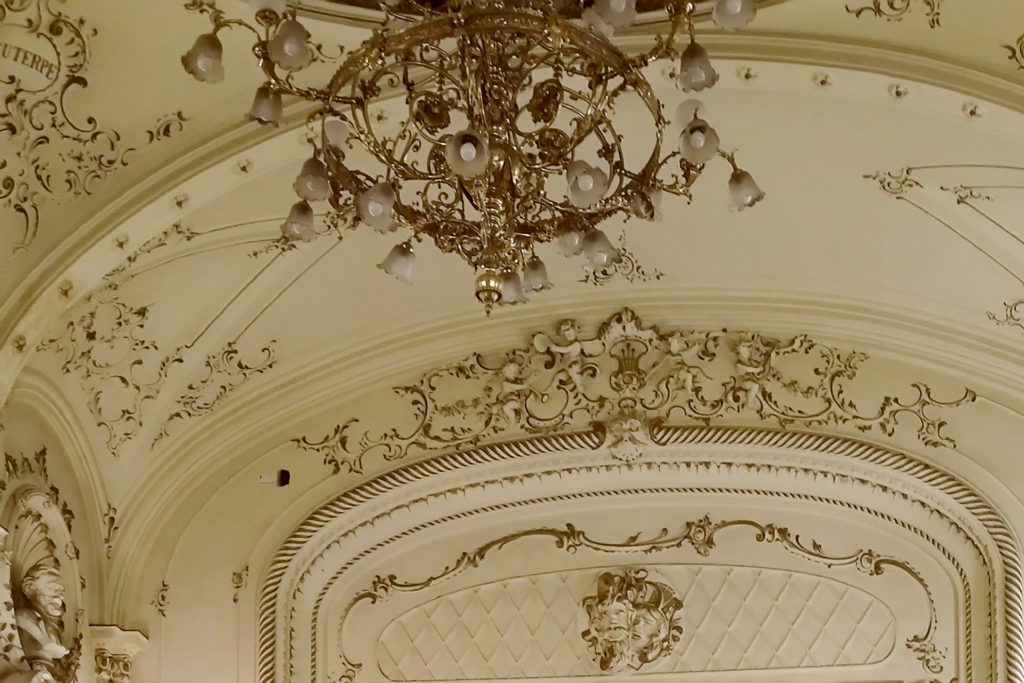
This special event, devised by Ruth Catlow and Max Dovey, and hosted by Drugo more formed part of a wider programme events in Rijeka to accompany the opening at Filodrammatica Gallery of the touring exhibition New World Order.
Thanks to all participants!

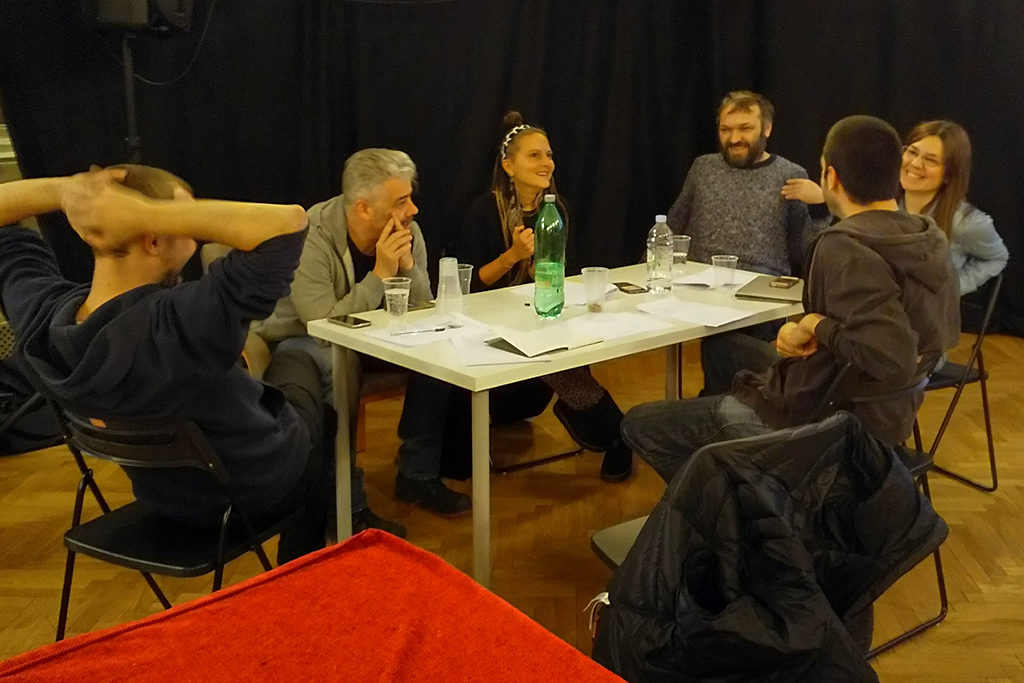
Keep calm and carry on monitoring the media: a review of Monitorial Citizen
NeMe (Cyprus), 9th December 2017, part of the State Machines programme
One couldn’t have wished for a more grounding response to contemporary media anxieties than this event. I don’t mean that the conference was all rainbows and lolkittens. I mean that it collected and tackled serious issues about the contemporary media landscape, its decentralization and its paranoias. It brought together perspectives on monitorial citizenship, citizen participation and citizen journalism –increasingly discussed in journalism and citizenship studies as new, post-modern, or alternative forms of civic engagement that also involve new, post-modern or alternative practices of media participation– and how this phenomenon can reinforce democratic ideals, and counteract forces or fears for their dissolution.
By all means, there seems to be a lot for us to worry about, a condition which the conference takes as its starting place. As moderator Corina Demetriou mentioned during her introduction, there’s the increasing fragmentation and polarization of our world where the success of populist rhetoric and the degradation of political discourse raises concern about our democratic institutions. Then there’s the proliferation of fake news, the dominance of media-scepticism, of conspiracy theory and of justifiably alarmist parental control discourse. And further yet, there’s the democratic failures of contemporary mass media, the corporate nature of social media, and concerns about the failures of media-education. All these in the face of increased surveillance and online censorship instituted with the excuse of / in order to battle all sorts of nightmarish villains.
The conference had the intended side-effect of facing and disarming most of the above, not least by providing historical context and balancing fears with contemporary research, following up criticisms with constructive questions, and offering numerous examples of citizen monitoring at work to an inspiring effect. NeMe gathered its speakers around the urgent premise of the potential for political change that is contained in networked citizen journalism (after Michael Schudson 1998) or citizen witnessing (after Stuart Allan, 2013). This was done in relation to what NeMe frames as a growing demand for political and corporate clarity that brings citizens immediate access and grants crucial issues a kind of evanescence: a transparency that is double-edged, both in terms of exposure, but also a tendency to fade or be drowned out in a sea of information.

It helps to think of the conference in four parts. First, it provided an introduction to the discursive context and the development of the notion of citizen witnessing (Stuart Allan). Second, it moved on to crucial debates in media education (Joke Hermes) and children’s rights of access to information (Cynthia Carter). Third, it introduced a discussion of the politics of democratic citizen participation in theory and online (Nico Carpentier) and the transformative potential of grassroots media monitoring practices towards conflict transformation (Nicos Trimikliniotis). And it concluded, with satisfying momentum, with a discussion of monitorial practice from an artist perspective (James Bridle).
In the first presentation, the conference defined the field and what is at stake in terms of the media establishment’s clash with the simultaneous need to subsume new developments in citizen journalism: Stuart Allan set-up the context for this through a discussion of the idea that “somebody should be telling this because journalists aren’t.” His overview reached from the Kennedy assassination, to the definition of the Arab Spring as the Twitter revolution, to #blacklivesmatter, and the WITNESS human rights initiative. Allan also reflected on negative reactions from the world of professional journalism where citizen reporting is cast as “ghoulish voyeurism enabled by contemporary technology.” He most interestingly, juxtaposed professional “helicopter” or “parashoot” reporting, done according to editorial directives, with an emergent form of reporting from within. A form that is embedded and unsanitised, and comes in the form of unapologetically subjective documentation, where the amateur camera approaches truth or reality with an immediacy that trumps formal news, and demonstrates how purposeful citizen witnessing can bring about positive social change.
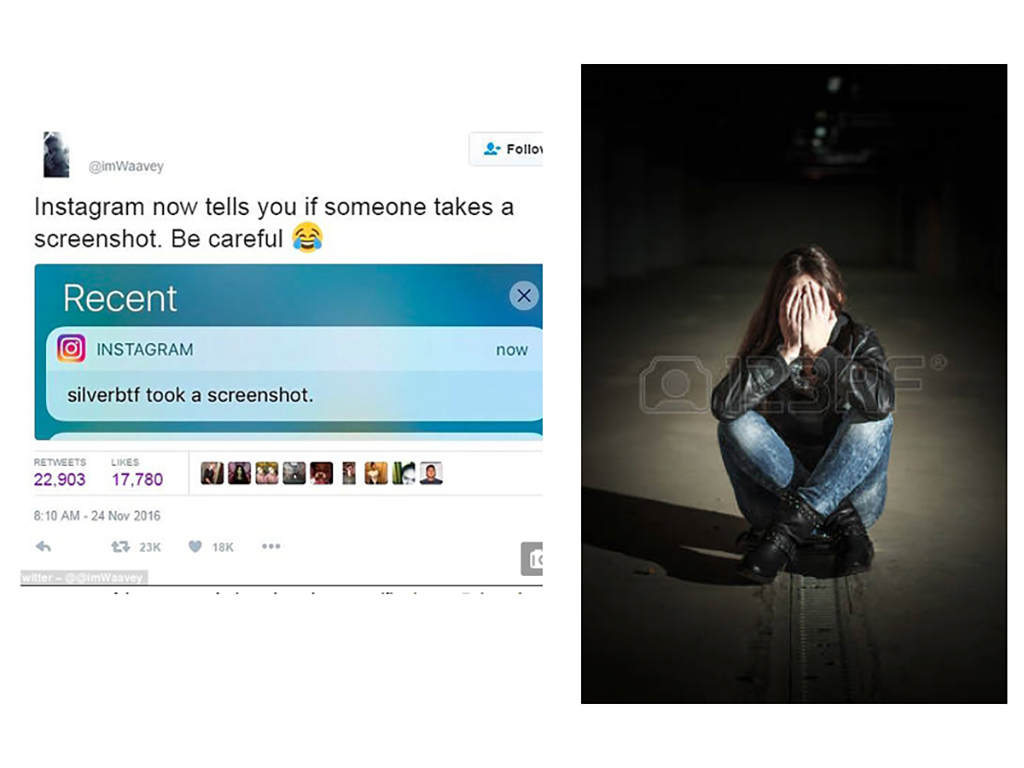
Then came two complementary discussions of sensitive issues around the failures and alarms of contemporary media-education (Joke Hermes) and children’s access to information, with emphasis to their online participation and their potential for political contribution (Cynthia Carter). Both speakers have been working towards the deconstruction of the stereotypic fear that it is a dangerous online world for young people, and they’ve been doing this in different ways and from different angles. Hermes discussed how a quarter century of media education has succeeded in breeding fear and mistrust rather than ways to corroborate and cross-reference. She made the very convincing argument that we need a plan for long-term engagement rather than immediate survival. That we must work towards the strategic teaching of the difference between downright holistic mistrust and meaningful engagement. That we may construct a perspective for cultural citizenship that makes “learning how to listen” (to disengaged sceptics) a priority: part of a new set of conditions for citizenship, where “irony, satire, and playing games” are understood as survival mechanisms, and “ways of blocking screening and fooling one’s parents are understood as useful tools for children to survive in all this, without giving in to conspiracy theories.” Following up from Hermes, Cynthia Carter explored arguments around parental control and its misunderstandings, with a discussion of how research on news media remains incomplete by failing to include the voices of children. She argued against perspectives that cast children as “passive recipients of information that is going to socialise them.” She emphasised how children’s civic rights are undermined by the mistaken perception that, primarily, rather than engaged, they need to be protected. She offered examples where interventions by children exercising monitorial citizenship, have the potential to change perceptions about children’s political interests and their capacity for meaningful, world-changing participation.
Nico Carpentier connected issues of online participation with broader debates and definitions centering on participation as integrated with democratic ideas. He discussed the development of participation-related discourse online and offline, and the posturing contained in such theoretical or practical endeavours vs. their democracy-reinforcing capacity. He highlighted a serious problem with the idealisation of the democratic capacity of online participation: that, for example, “we still haven’t looked at the radical right form of online participation where neo-nazis are participatorily deciding whether they should kill somebody.” Carpentier argued for the need to further “democratise democracy” across fields like the arts and the media, and “do more than pay lip service to the logics of participation.”
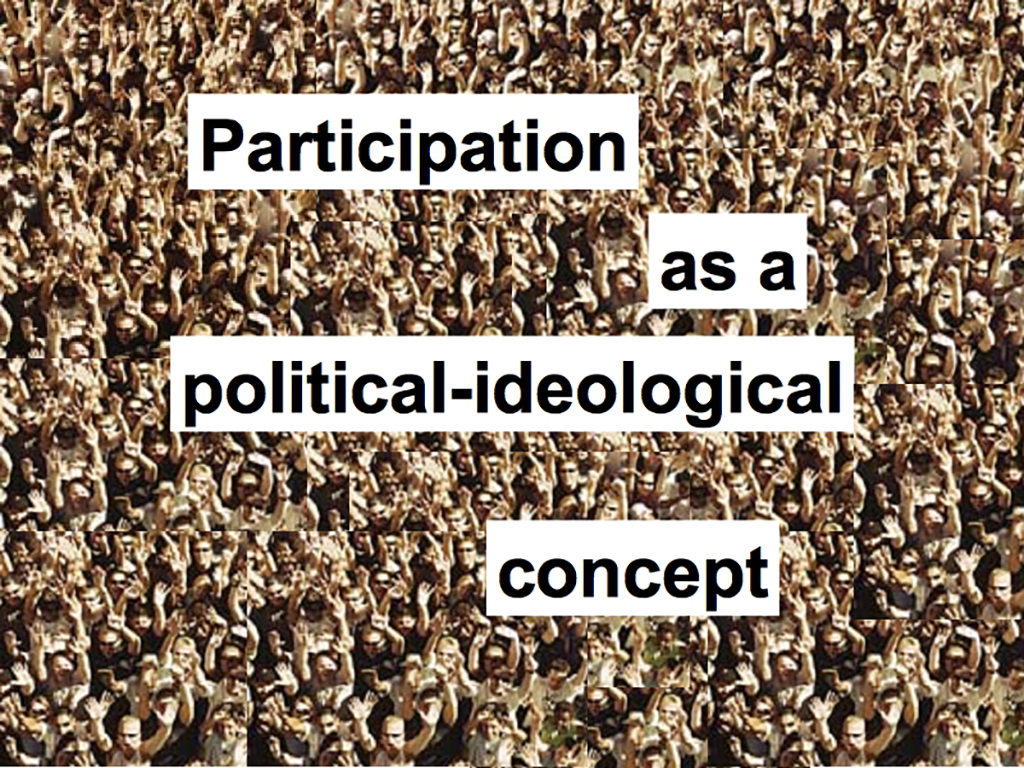
Next, Nicos Trimikliniotis introduced debates around participation and citizen journalism in relation to Cyprus, and to argue for the need to compare struggles and national contexts, particularly in relation to peace journalism and the potential for overcoming austerity and chauvinist citizenship models. He emphasised the role of the media in conflict transformation, in defining the nature of conflict and division: its contextualisation and relativisation, and transference towards social and other issues. For him, the creation of third spaces that defy the long-embedded interests of mainstream media is a crucially valuable new element. He identified such a critically valuable third space in the practice of the monitorial citizen. He used the example of the Cyprus-based collaborative online journalism collective Δέφτερη Ανάγνωση (trans. Second Reading), to argue that it indeed possible to undercut colluding media, and transform the reporting, the investigation, and the very nature of professional journalism, with the help and participation of monitorial citizens, intellectuals and artists.
Finally, James Bridle introduced a multilayered example of his own monitorial artistic research practice, an exercise of monitorial citizenship that actually researched issues of citizenship, migration, and asylum. He focused on a particular project where he worked to cross-reference details left out of a story in the UK press about Theresa May putting asylum seeker and hunger striker Isa Muazu on a private jet for deportation (2013). Bridle tried different methods in order to find out where this jet landed and to investigate the systemic, legal and spatial conditions for this kind of deportation. He spoke about the value of collectively maintained online tools that pool information through crowdsourcing, such as tools designed by the flight-spotting community, in this case making public the capacity to track flights. Bridle’s investigation led to a detention centre next to Heathrow, and then to the architectural mapping of this facility, where secret deportation trials seem to be taking place. He proposed this as a way of using the ability to research and cross-reference information through new tech, to make visible something that wasn’t visible before, and thus draw a picture of the system that produces a particular kind of story. In this case a story of deportation, also connected to the debate about global surveillance, by performing a kind of reverse surveillance.
Most interesting, and as a conclusion to the conference, Bridle made transparent his own questions about this instinct of monitorial citizenship: the issue that bringing things to view could be a solution to injustice. He pointed out that his own investigative whistleblowing and NSA surveillance, have in fact, the same logic behind them. Both top down centralised government surveillance, and bottom up citizen-driven monitoring or reverse surveillance are based on the logic that there’s something secret and if we bring it to view, then something will be radically transformed. Except according to Bridle this is not fully accurate. There is a danger here that we may make the invisible visible but remain blind to the systemic forces that brought it to be in the first place.
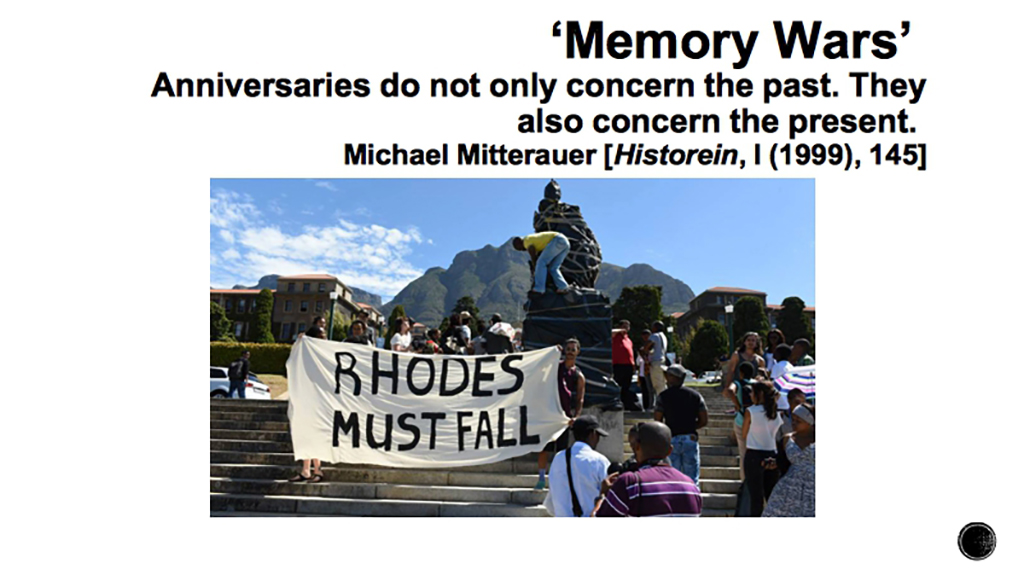
The discussion following the presentations focused on the potential of citizen monitoring given local Cypriot peculiarities, returning to the example of Δέφτερη Ανάγνωση, with members of the audience introducing the consideration that the structure of coordinated efforts of citizen monitoring (whether flat, or hierarchical, or anonymous, and so on) can play a role in its potential to set-up democratic resistance. The formal discussion transformed into after-conference mingling over drinks and finger food that was good enough to keep people processing in small groups for over an hour. My own conversations pushed onwards from James Bridle’s point about our unwitting complicity with surveillance logics: do we try to resist such logics? (The answer may be that we can try to temper them). This included a conversation with Joke Hermes, making the connection with a recent article by James Bridle documenting weird and often disturbing algorithmically generated youtube videos targeting children (Bridle, 2017), and putting the question of where to draw the line between parental concern and parental panic. (The answer seems to be gently, by avoiding random overexposure at the preverbal stage, not attempting totalitarian control, and focusing on being there and paying attention).
There’s a lot to pick up on in conclusion, aside from my insolent and possibly unjust isolation of one-liners in bold, for which I must ask the speakers’ forgiveness. I am most interested in two elements that seem especially innovative contributions to what is already a very rich and intensely investigated intersection of scholarly work on journalism and citizenship. This conference went the extra step to further bridge this growing field with other sides of media theory: First, in connection with peace scholarship and local issues around media collusion and their effect on conflict transformation through the work of Nicos Trimikliniotis. And secondly the connection made with educational theory and cultural studies through the work of Joke Hermes and Cynthia Carter, a beautifully resonating combination with a feminist focus on understanding, rather than fear or control.R
Photographs and videos by Sakari Laurila
This project has been funded with the support from the European Commission. This communication reflects the views only of the author, and the Commission cannot be held responsible for any use which may be made of the information contained therein.
London’s Permaculture Design Course – Design 4 ACTION (Active Community Transformation In Our Neighbourhoods) is a different kind of permaculture course – positive design for your life, your community and your world by empowering the genius inside all of us! D4A is about regenerative learning, enabling individuals, organisations and communities to come together over six weekends to create empowering solutions to the real world challenges we are all facing in these times of change. Adapted from the Permaculture Association (Britain)’s PDC core curriculum, this is a person-centred, fun, lively and inclusive course, exploring and utilising concepts such as Systems Thinking, Holistic Design, Community Empowerment, ‘Whole Person’ Health, Skill Sharing, Critical Thinking, Appreciative Inquiry, Right Livelihoods and much more.
The format is participatory and dynamic using diverse visual, audio and kinesthetic learning methods such as individual and group work, games, problem solving, discussion, observation, field trips, practical activities, lectures and slideshows. This course will be hosted at Furtherfield Commons in Finsbury Park, a new and exciting partnership project at the cutting edges of dynamic cultural change:“We believe that through creative and critical engagement with practices in art and technology people are inspired and enabled to become active co-creators of their cultures and societies.”
Learn more about Design 4 Action Permaculture Course
Venue: Furtherfield Commons and Edible Landscapes London, Finsbury Park, London
Led By: The course will be taught by Graham Burnett (Dip. Perm Des) and some great guest teachers.
Dates: 6 weekends, May – July 2018
5 – 6 May
19 – 20 May
2 – 3 June
16 – 17 June
30 June – 1 July
14 – 15 July
Cost: Full cost £590 for 12 days. Note that we are able to offer a strictly LIMITED number of subsidised/bursary places for people on lower incomes. We also offer a higher rate payment option in order to help support a subsidised place for those less able to pay. Below is a suggested scale of fees that we feel fairly reflects the income disparities among our attendees. Before booking we ask you to make an honest assessment of where you place yourself on this scale. Please contact us if you wish to apply for a subsidised/bursary place. We would also ask you to read our article ‘Can’t Afford A Course?’ for other creative ideas for raising your fees such as crowdfunding, available grants, etc before applying for a subsidised place.
£790 – Supporters rate – paying our upper rate will help to support a subsidised place for somebody less able to pay.
£590 – Individual, waged (suggested income more than £25k)
£390 – Individual, waged (suggested income less than £25k subsidised place)
£250 – Individual, concessionary rate (suggested unwaged subsidised place)
NB. Your place on the course will be reserved upon receipt of a £95 deposit and secured upon receipt of full payment.
10:30 – 14:00 – Ruth Catlow and Max Dovey
Artists Organise (on the blockchain) is the fourth event in the DAOWO blockchain laboratory and debate series for reinventing the arts.
In previous workshops, hosted by Goethe Institut London, we have explored developments in the arts ecosystem, impacts on identity, and the complex considerations involved in formalising systems for “doing good” on the blockchain.
In this special event hosted by Drugo More in Rijeka we will draw on the Croatian cultural context and attempt to envision, devise and test alternative forms of blockchain-based cultural production systems, for application at Furtherfield in London. This workshop is part of a wider programme events in Rijeka to accompany the opening at Filodrammatica Gallery of the touring exhibition New World Order.
Set up in 2002, the pioneering non-profit Croatian initiative Clubture“aims to empower the independent cultural sector”, organising according to decentralised, participatory principles that resonate with claims made for blockchain governance.
Together we will explore what lessons can be learned from the radical, decentralized, participatory organising principles developed by both Furtherfield and Clubture, when assessing the potential value of blockchain technologies to instigate collaboration between networks of cultural players? How do the affordances of different blockchain value systems impinge on our ideas of human nature, and the value and limitations of existing cultural institutions and networks? Who are the networks’ users? How does the network deal with inequalities of resources (time, money, reputation etc)? How are decisions made, rules enforced and conflict resolved?
Number of participants is limited. You can apply for the workshop by e-mail to dubi<at>drugo-more.hr, until 12 February.
Using theatre, improv and role play techniques participants will develop the following premise:
Julian Oliver’s Harvest node has been installed on top of Furtherfield Gallery in Finsbury Park. A wind turbine is generating a small amount of electricity that is powering the graphics card to mine the ZCash cryptocurrency. It is suggested that the surplus value generated by the work should operate as the funding faucet for a body that commissions new environmentally focused cultural practices and projects for and with the visitors to the park where it is based.
Using the Harvest ´fund´, workshop participants will develop a new public artwork proposal that can commission a cultural program in Finsbury Park. The artwork aims to establish a ´headless´ organisational structure that is financially sustainable and incorporates various actors into the cultural program. The aim is to gain ‘real-world’ understanding of how different blockchain value systems may afford alternative social structures for collaborative cultural production.
Ruth Catlow
Ruth Catlow [UK] is an artist, curator, and writer. She is co-director, of Furtherfield, co-founded with Marc Garrett in 1996, an artist led organization for labs, debates and exhibitions around critical questions in arts, technology and society. She has co-devised the ‘DAOWO’ workshop series with Ben Vickers (Serpentine Galleries) & in collaboration with Goethe-Institut London (Oct 2017- Mar 2018). Catlow is named by the Foundation for P2P Alternatives in their list of 100 women Co-creating the P2P society.
Max Dovey
Max Dovey [UK] can be described as 28.3% man, 14.1% artist and 8.4% successful. He is also an artist, researcher and lecturer specialising in the politics of data and algorithmic governance. His works explore the political narratives that emerge from technology and digital culture and manifest into situated projects – bars, game-shows, banks and other participatory scenarios. He holds a BA Hons in Fine Art: Time Based Media and a MA (MDes) in Media Design from Piet Zwart Institute. He is an affiliated researcher at the Institute of Network Cultures and regularly writes for Open Democracy, Imperica & Furtherfield. His work has been performed at Ars Electronica Festival, Art Rotterdam & many U.K based music festivals.
The DAOWO programme is devised by Ruth Catlow (Furtherfield) and Ben Vickers (Serpentine Galleries & unMonastery) in collaboration with the Goethe-Institut London, and the State Machines programme.
This project has been funded with the support from the European Commission. This communication reflects the views only of the author, and the Commission cannot be held responsible for any use which may be made of the information contained therein.
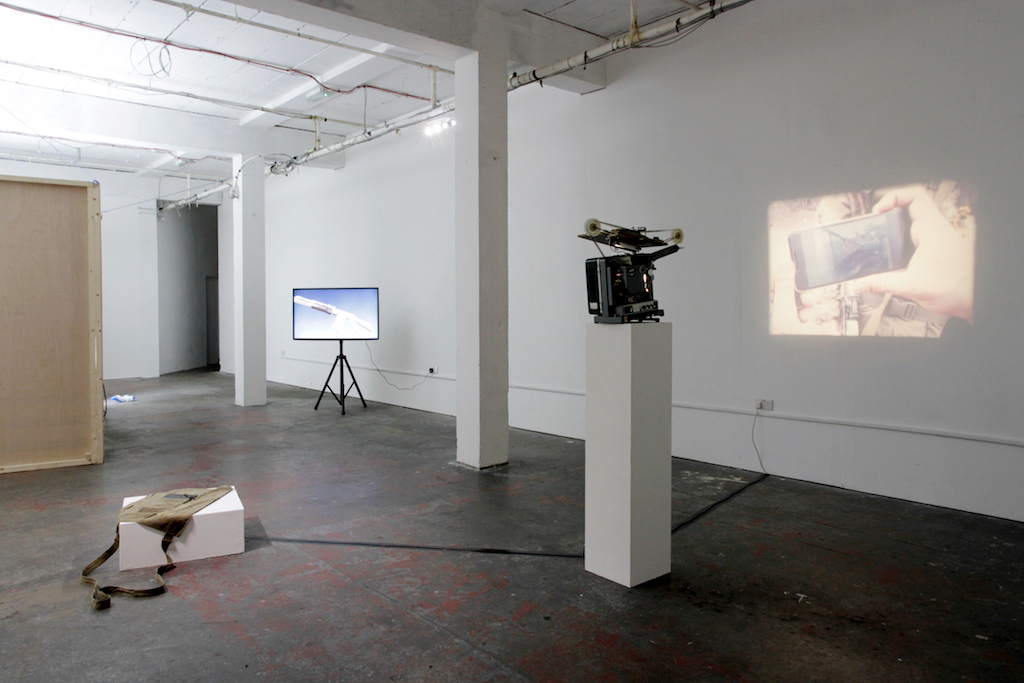
Referring to Ernst Jünger’s proto-fascist concept of the ‘front experience,’ Dani Ploeger’s fronterlebnis takes us to a frontline where digital consumer culture and traditional warfare meet. Combining filmed footage of a journey to the frontline in the Donbass War, Ukraine, alongside vintage military paraphernalia, Ploeger puts the artist in the field with the ‘real’ soldier. These soldiers are men from the far-right Ukraine Volunteer Corps, affiliated with the Right Sector, and remind Ploeger of ‘the weird and wonderful mix of action heroes in Sylvester Stallone’s Expendables series, albeit without the body builder physiques and less carefully manicured.’ Here, Ploeger not only conceives an exhibition which examines the relationship between the cleanliness of modern day technology and the grittiness of traditional warfare, but also highlights wider issues around society’s continued masculinised and fetishised relationship to conducting, and, as some of these pieces show, documenting war. With Ploeger’s ‘weird and wonderful’ group made up exclusively of men, featuring masculine nom de guerres such as Bear and Carpenter, fronterlebnis is an exhibition in which masculinity is in the crosshairs as much as anything else.
The four-piece exhibition is part of Ploeger’s current exploration into the militarisation of public spaces across Western Europe in connection with our increasingly fetishised relationship with consumer technologies, and how these apparently disparate elements converge in various conflicts, ranging from the Donbass War to public security in cities like Brussels and Paris. The soldier’s body has arguably shifted in its role since the latter part of the 20th century, with the advent of sophisticated warfare technologies moving the human body away from the process of killing, at least in popular imaginations of conflict. With this development, the methods of war appear to have shifted, but it is in fronterlebnis that we are able to see how in the Donbass War in Ukraine, traditional warfare not only remains but has now become intertwined with advanced techno-consumer culture.
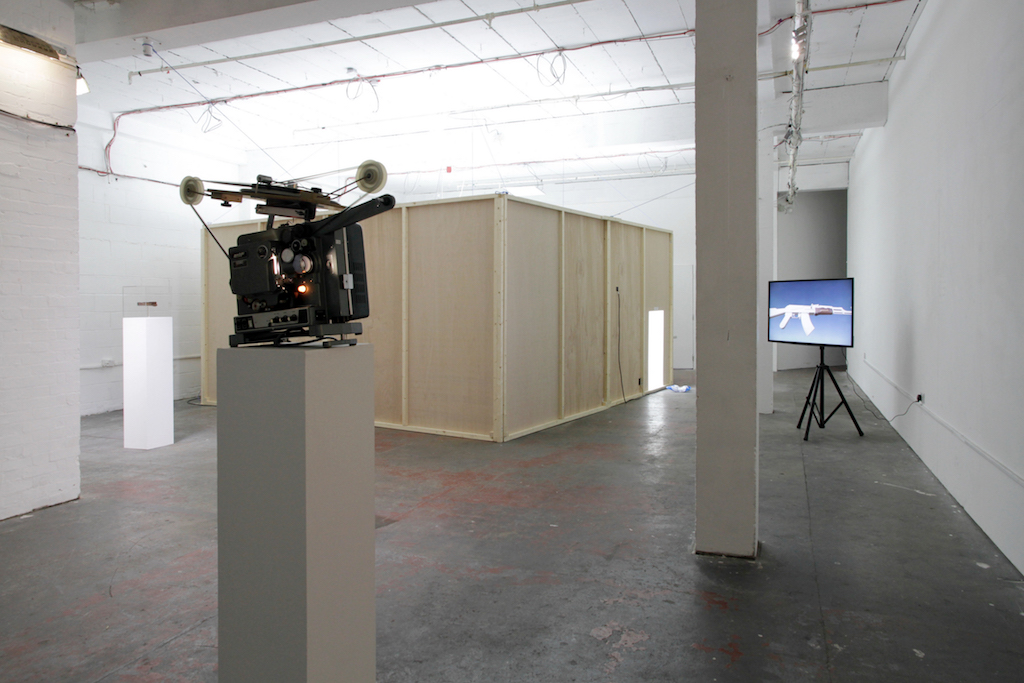
This juxtaposition of the old and new is present in the first piece you encounter as you enter the gallery. In Patrol (2017), Ploeger captured a firefight on his smartphone. The footage has been transferred to 16mm film and is being projected onto the wall of the gallery in a continuous loop. In the film, we see three soldiers – Bear, Carpenter and Steinar – escort Ploeger around the frontline on the edge of the destroyed seaside village, Shyrokyne. These men, in an assortment of vintage and contemporary battle array, many carrying the iconic Kalashnikov rifle, are seen sharing footage of their exploits on the frontline with each other, which they have captured on their smartphones and GoPros. Steinar, the youngest and, as Ploeger told me, the most fashion conscious in his choice of military gear, is filmed by Ploeger watching footage of the moment where he and Carpenter blow up an unexploded mortar shell. In this piece, the 16mm film echoes the era of the weapons that the men are carrying. The manner in which this film is projected reveals the peculiarity of watching a modern day firefight where many of the weapons and uniforms are from the Soviet era, but the men are astute in their engagement of consumer technology in order to document their experiences of the conflict. In Patrol, the Kalashnikov and the smartphone appear to have made an unlikely pairing.


The other work in the show features such seemingly unlikely pairings of traditional paraphernalia of warfare coupled with different pieces of consumer technology. In artefact (2017), the wooden handguard of a Kalashnikov assault rifle is exhibited like an archaeological artefact. Presented on a white plinth, encased in Perspex glass, you can see that the wood of the handguard has been worn with the indents of many hands, signalling its intense use. This carefully exhibited object is just one half of this piece though. The other half consists of digital video animation in which a high-resolution 3D scan of the handguard is inserted onto a digital model of an AK-47. Presented on a large television screen, the digital model, set against a standard blue sky backdrop reminiscent of game development engines, highlights how many of us only come into contact with these types of weapons in a digitised form; whether that be in video games or through action movies. Ploeger’s engagement with firearms here reminds me of some of his past work that seems to suggest an interest in these weapons in relation to masculinity and phallic imagery. Dead Ken /Less Pink (2016), a short video installation in which Ploeger fires a small revolver at a Ken doll, speaks to the seemingly indelible relationship between firearms and masculinity. When seen in relation to this video installation, artefact signals an enduring fascination in our shared social psyche with these weapons, but also speaks to how these weapons continue to be consumed and represented in relation to masculine identities.
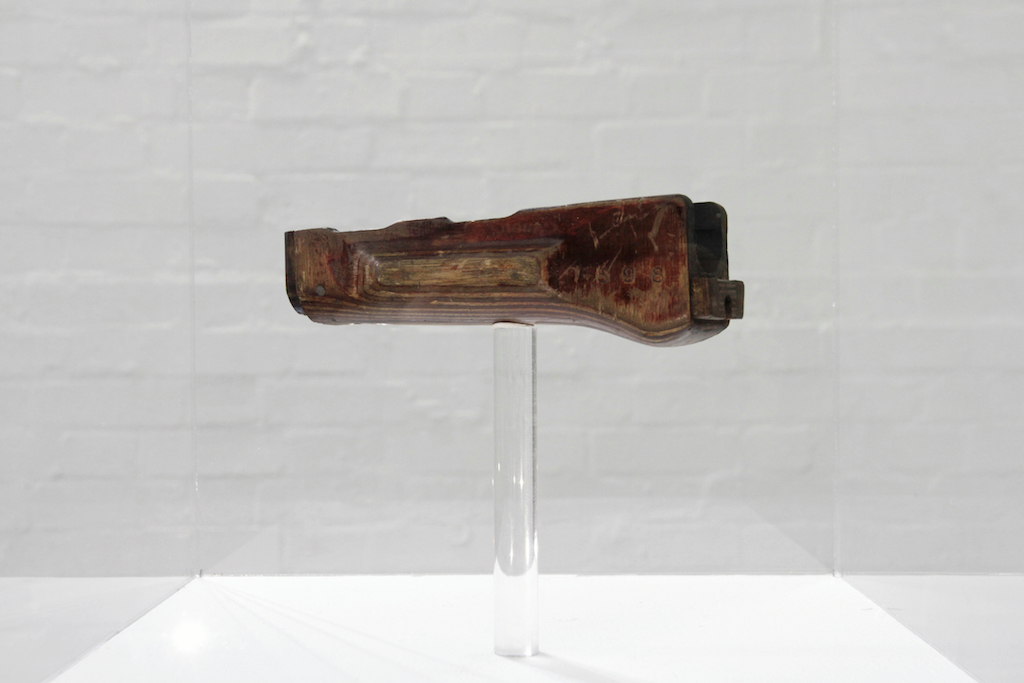
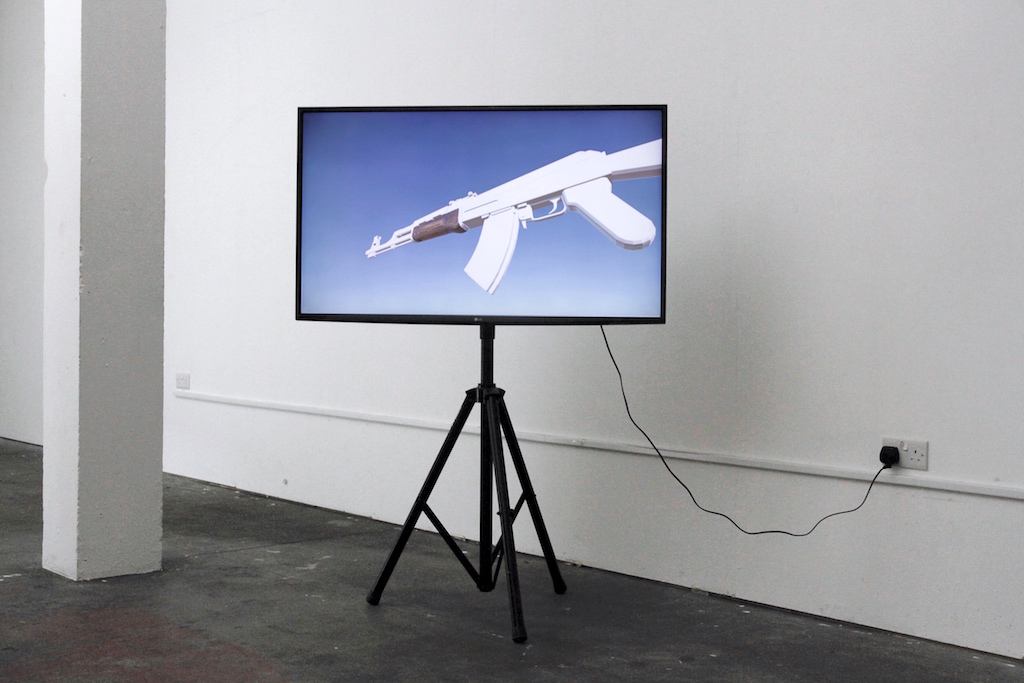
In worse than the quick hours of open battle, was this everlasting preparedness (2017), we can see a more tangible engagement with the co-existence of war artefacts and digital technology. Held in the front pocket of a Soviet army backpack from the Afghanistan War period is a damaged tablet computer which displays a bouncing screensaver, featuring a piece of text from Ernst Jünger’s proto-fascist novel Storm of Steel (1920). Jünger describes his experiences of fighting on the frontline during the First World War and the title of this piece is a translation of the text we see displayed on the tablet. Here, the mediatised depictions of war that are so pervasive in popular culture are delineated from the lived experience of Jünger, who discusses this perennial notion of prepared waiting that is a common, though rarely shown, aspect of war. Here, the worn backpack which has been roughly patched and repaired, presumably by the hands of the man to which it used to belong (men’s hands are for holding guns rather than sewing needles this bag appears to suggest), holds the similarly worn and damaged tablet. These damaged items speak to Ploeger’s past work with electronic waste, which explored our society’s proclivity for abandoning technologies when they become outdated or damaged. In this exhibition, however, Ploeger brings together the old and new, using pieces of (almost) electronic waste alongside other material artefacts to further explore the relationship between the material and digital.
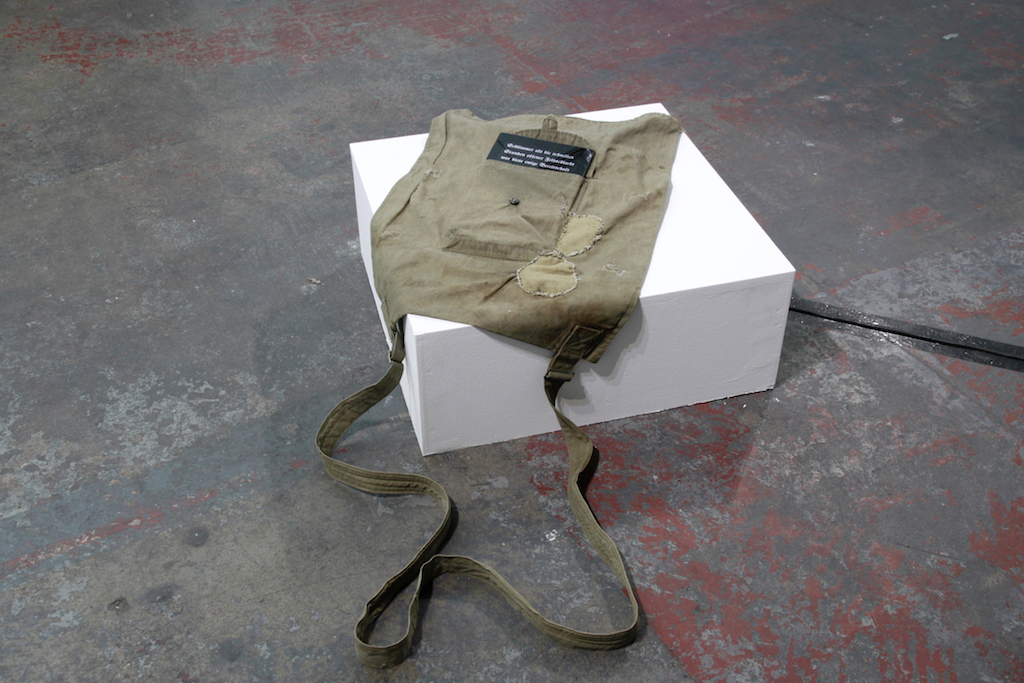
The largest piece of the exhibition, frontline (2016-17), deploys this new and ‘clean’ technology in order to take us to the frontline. The work consists of a big wooden enclosure of about 5 by 5 meters which can be entered through a small opening on its side. The entirely white inside of the space is brightly lit by a large grid of office LED lighting that hangs above it. This enclosed space speaks to the ways in which Westernised notions of conducting war are now considered clean and sterile as a result of the technology that they use. Before entering the space, you are asked to place foot coverings over your shoes, as if you would be entering a sterile space, a futile gesture it would seem as the same coverings are used again and again. This action, however, also references the cultural shift in how Western nations like to represent high-tech warfare as a clean affair.
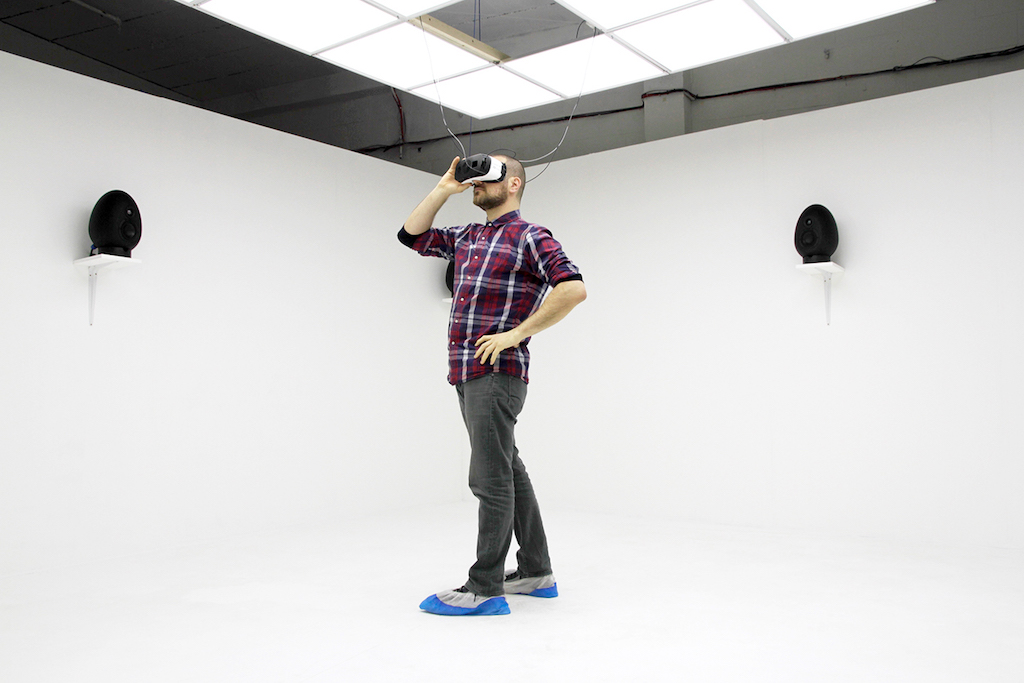
When you enter the enclosure a sensor is triggered and a soundscape of intense gunfire and explosions suddenly surrounds you. It is only until the you place the VR headset on to your eyes that this soundtrack, fit for an action movie, ceases. Roused by the noise, you are then met with a starkly contrasted image to what was suggested through the preceding gunfire soundscape. Rather than an action scene which complements the sounds previously heard, you enter an uneventful immersive video of soldiers smoking and sitting on the frontline. Using an intricate combination of partial video loops, the men appear to be on a never ending smoking break. frontline, subverts our spectacular expectations of warfare and VR technology by creating a VR experience that – after using sound to further heighten our expectations – foregrounds the mundanity of waiting for something to happen that makes up most of everyday life in an area of conflict.

In frontline, as in all of the pieces that are exhibited as part of fronterlebnis, Ploeger subverts our expectations by combining and repurposing technology to make us question our relationship with our technological devices and how we perceive and engage with them in everyday life. In addition to its examination of digital culture, fronterlebnis also seems to suggest that warfare remains a man’s game. We encounter men who are still prone to having their boy’s toys, but it would seem that in this case they are a GoPro in one hand, and a Kalashnikov in the other. Ploeger’s documentation of these conflicts, made with his own personal technological devices, arguably envelopes him in similar mechanisms of fetishization as the soldiers he was with. Neither soldier nor artist seem able to extract themselves from the seductive realm of audiovisual gadgets and self-mediatization in an era of omnipresent digital consumer culture that even reaches as far as the trenches of a dirty ground war.
TERROR FEEDS: Inside the Fear Machine, took place in Berlin November 24-25 2017, and was an analysis of ISIS and its media strategy, the meaning of cyber jihad, and why people enroll as foreign fighters. The 12th conference of the Disruption Network Lab was directed by Tatiana Bazzichelli. Studio 1, Mariannenplatz 2, 10997 Berlin.
Curated by Tatiana Bazzichelli and investigative journalist Mauro Mondello. In cooperation with Kunstraum Kreuzberg /Bethanien, SPEKTRUM and Supermarkt Berlin. Funded by the Reva & David Logan Foundation (grant provided by NEO Philanthropy), the Mozilla Foundation, the Bertha Foundation and the Checkpoint Charlie Foundation. Supported by: the Radicalisation Awareness Network (RAN). In collaboration with the Alexander von Humboldt Institute for Internet and Society (HIIG). Media Partners: ExBerliner, Furtherfield.
To analyse the operational methodology of ISIS means to understand terrorism beyond general terms and not only in reference to the Islamist group. It has updated its strategies during the years, making communication a decisive element of its system. ISIS has shown us how it is possible today, through the networking and the fluidity of information exist runs and build a structure, on several levels and far from a geographically fixed dimension. We are used to thinking about such situations in traditional ways when we refer to paramilitary organisations, and not in such elusive terms where the enemies are so difficult to control, and very difficult to identify. The Terror Feeds conference, has made it possible for us to focus on how terrorism is conducted, in how electronic jihad and strategic messaging affects the worldwide public opinion, both in the west and in the Arab world, representing a new icon of “global jihad”.
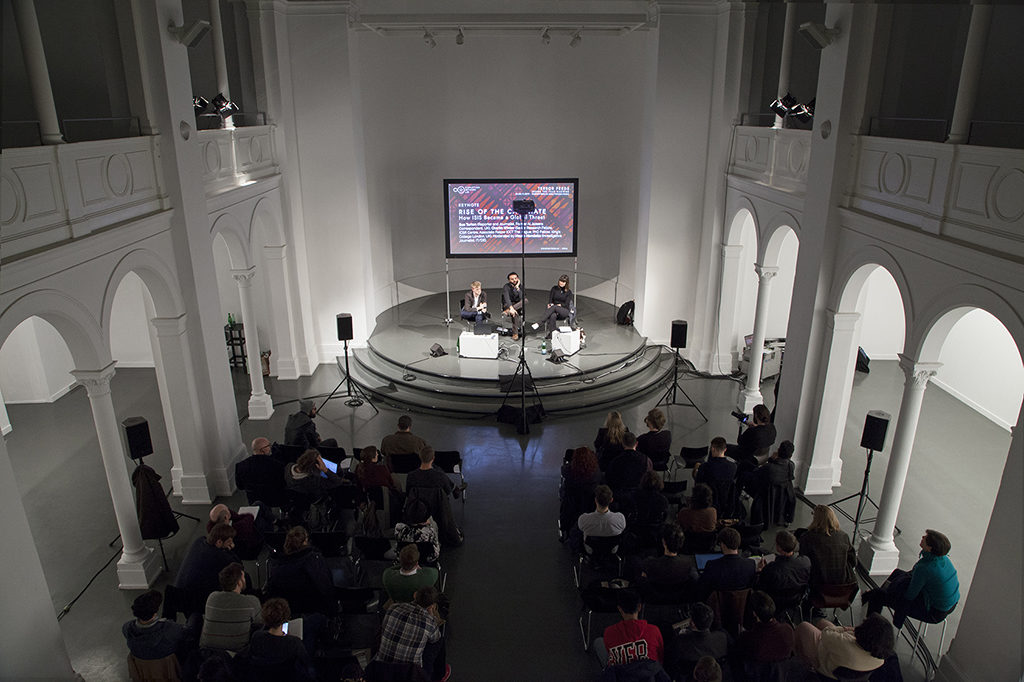
It is a fact that the territories which were once dominated by ISIS have now collapsed and are fragmenting into smaller, chaotic forms of inter-connected, spurious networks, scattered in the rural parts of Iraq and Syria. Nevertheless the group will go on and transform into something else, adapting its strategy.
“ISIS seems to have taken its foot off the official media pedal and is now instead, putting more effort into the logistics side of its insurgent equation”, said Charlie Winter, researcher at King’s College London, during the first panel of the Disruption Network Lab conference. “This change is part of a shift prefigured by the organisation’s changing emphasis on Hijrah, the act of travelling to the caliphate to join the Islamic State. On one side, Hijrah is still promoted but ISIS no longer prioritises this form of recruitment”.
During his speech at the conference, Charlie Winter focused on the importance of propaganda for ISIS, and how their production and dissemination is at times considered to be even more important than the military side of the Jihad itself. Winter says, the caliphate message is entirely non-spontaneous and based on three principles: a coherent, positive and alternative narrative; a rejection-based counter-speech operations; the launching of occasional, carefully calibrated media “projectiles”. The mainstream is considered as an effective weapon that can exceed the power of the most powerful bombs.
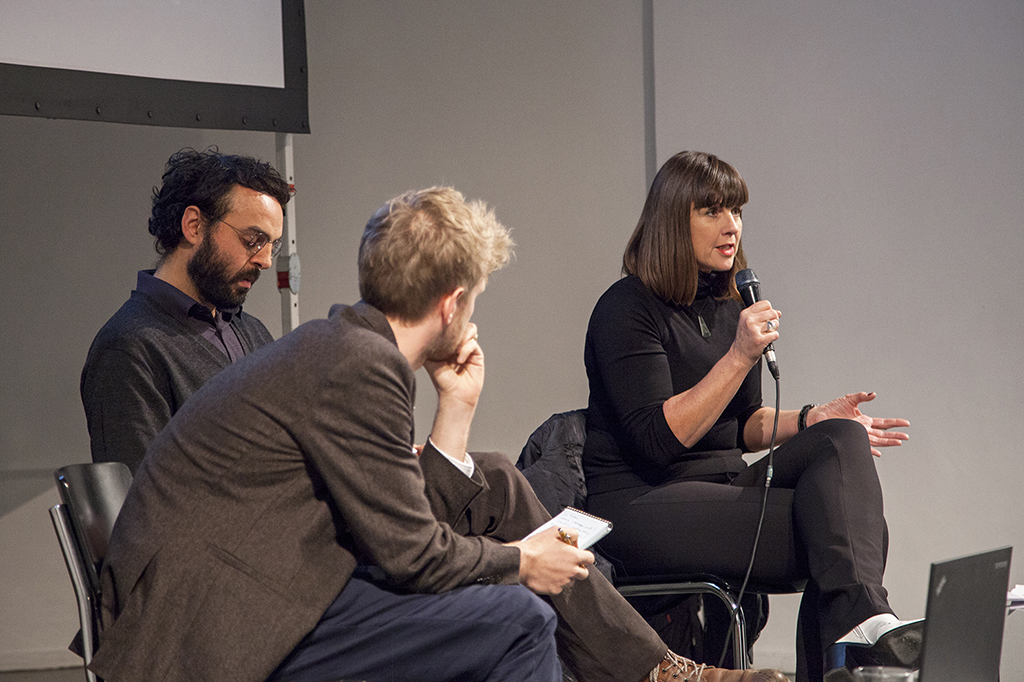
Sue Turton, former Al Jazeera correspondent, writer and journalist, explained during her speech at the conference that ISIS strength is built on its capacity to reach through its propaganda, at people sitting at home eating their dinner with the aim to transform these viewers into ISIS fighters, wherever they are in world. “In some way, ISIS is exciting and gives these individuals the feeling that they’re doing something right and that they accomplish something for their faith.”
“Isis has an extensive network of media experts and social media accounts”, said Dlshad Othman, security engineer and speaker of the Keynote. Focused on the so called Cyber Jihad, “ISIS, has been able to hack government websites and carry out attacks on thousands of Syrian activists social networking accounts, to develop malware, as well as hack the White House website. Cyber Jihad is an organised branch of the ISIS’s military strategy and has been able to be used as a main element to reinforce its structure. Cyber Jihad started with doing very simple malware and then increased its level right up to a very well organised phishing campaign.”
Another way to understand how ISIS works is to look at the documents relating to the ISIS administration. “The records sometimes can say more about Isis than the propaganda it releases everyday”, says Jihad-Intel Research Fellow at the Middle East Forum, Aymenn al-Tamimi. The reach and wide “impact and influence, of ISIS media development over time, is pretty clear,” and you can see this reflected in “how many other military groups are trying to emulate the ISIS media strategy in Syria, today .”
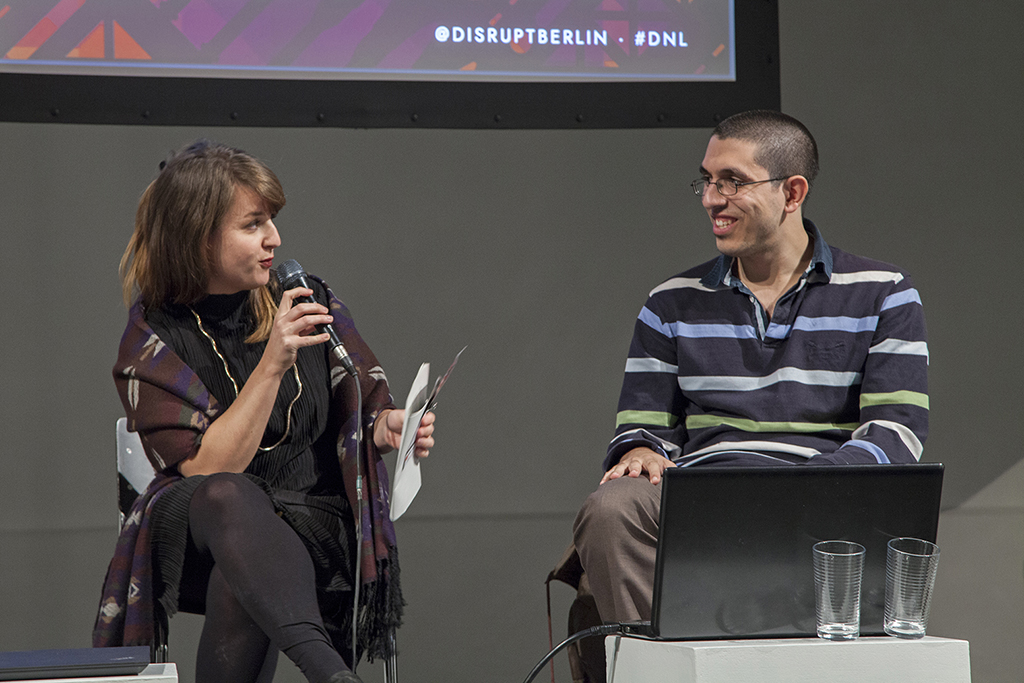
ISIS marked a new path especially concerning the recruitment of fighters, demanding Muslims across the world to swear allegiance and migrate to a territory under its control, and also demanded that other jihadist groups worldwide accept its supposed, supreme authority. “In order to understand ISIS – points out Saud al-Zaid, Scholar of Islamic Studies, Berlin Graduate School of Muslim Cultures and speaker at the Disruption Network Lab conference during the keynote Radicalized: the franchise of terror – “it is crucial to make a difference among individuals, societies and cultures in the ISIS world and to start focusing on what they all have in common, that of course is, first of all, support for the terrorist group”. Al-Zaid concentrate on the distinctions, in terms of conflict, between Native and Foreign fighters. “It is not so easy to distinguish, for example, between a guy from Falluja, Iraq, and another one from Yemen,” Sayd al-Zaid during his speech at Terror Feeds conference. In the words of Peter Van Ostayen, also a speaker during the Radicalized: the franchise of terror keynote, “half of jihad is media”. For Van Ostayen, Historian and Arabist, PhD candidate at KU Leuven, “half of jihad is social media, especially in the recruitment, as we can see exploring the recruitment process of Belgian foreign fighters: more than 600 Belgian individuals joined or tried to join ISIS in Iraq and Syria”.

Counter-extremism strategies and prevention also are an issue to consider in the context of increased public fear about homegrown terrorism. “Initially our prevention strategy was not focused on schools and teachers, but engaging with civil society, mainly trying to prevent young people, entirely from Muslim communities, from becoming extremist” – explained Tufyal Choudhury, Assistant Professor at the University of Durham Law School in England, during the Prevention and Prejudice panel – “Than the government changed in 2010, so Prevent policy changed too, in two important ways: Prevent was not anymore focused on all forms of extremism and was not just concentrated on violent radicalization, but also on extreme ideology. Of course this created another issue: we needed to understand what non violent extremism was”. Michéle Hassen, Working Group Leader at RAN, Radicalisation Awareness Network, also a speaker during the Prevention panel, stated that “we’ve not a problem with the concept of radicalisation, but it is different when radicalisation leads to hate crimes and terrorism.” For Sindyan Qasem, Research Associate at the University of Münster, Centre for Islamic Theology, the question about Prevention and Radicalisation is how do vague conceptualisation of radicalisation and extremism lead to the infringement of human rights. “I personally think that preventive measures against islamic extremism are almost always based on ideology, so the educational measures and countering extremism in schools is based on giving alternatives to the ideology of islamic extremism”.

Among the goals of the conference was to focus on the territorial challenges provoked by ISIS. In this sense, Abdalaziz Alhamza co-founder of the blog Raqqa Is Being Slaughtered Silently and Media Activist, shared the experience of living in a Raqqa under ISIS control, trying to resist and documenting the daily life in the “Islamic Caliphate”. “ISIS prevented all media organisations to cover the conflict, so it was very important to show what was going on,” explained Alhamza. “ISIS did mistakes that we were able to analyse and spread to others. Although, most people just had ISIS propaganda and they slowly started believing in it, so we decided to target everyone. Most of the people had no internet access, so we went speaking with people, we went to schools, we went to Arab communities, to tell them what was going on”. During the same keynote, “Fractured Lands: confronting the Islamic State”, Aaron Zelin, Founder of Jihadology.net and Richard Borow Fellow at the Washington Institute, explained how IS got from no territorial control to full territorial control. “The so-called Caliphate Project was the idea to establish an Islamic State upon prophetic methodology and based on their interpretation of sharia’a, the Islamic law – said Zelin – they also wanted to build a global network of members and supporters, overthrowing the post-World War II American international system. It’s important to understand how they built their structure in Iraq and Syria because it is a guide to their development or regression in other areas, like Philippines, or Libya or Somalia or maybe Europe in 15 or 20 years, considering the polarization that is happening in the european society”.
Despite the rout of the Islamic State last year and steady Syrian government advances in territories controlled by the group, a mis-perception has grown abroad that Islamic State (and Syrian war), is winding down. Instead, the carnage is reaching a new peak in Iraq and Syria: much of the world cheered the collapse of Islamic State caliphate, but that victory just cleared the way for a new stage of the conflict, with IS ready to come back again.
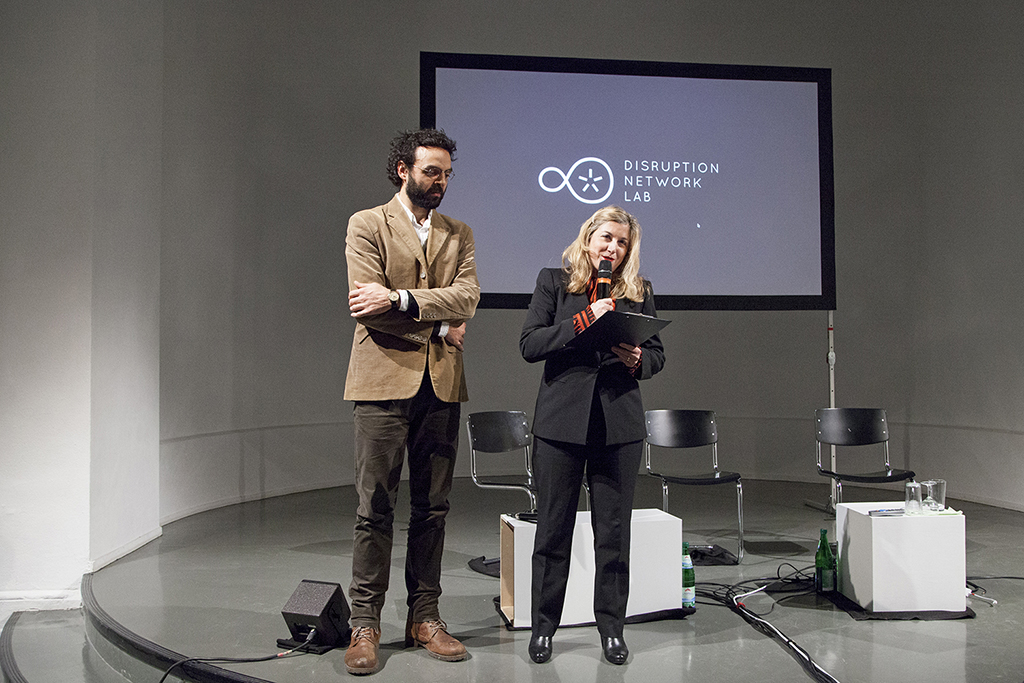
Photos by Maria Silvano for Disruption Network Lab.
More info about Disruption Network Lab:
disruptionlab.org – @disruptberlin
13.30 – 17.30 – Kei Kreutler, Sarah Meiklejohn, Laura Wallis, Jaya Klara Brekke
Doing Good (on the blockchain) is the third event in the DAOWO blockchain laboratory and debate series for reinventing the arts.
In previous workshops we have probed ideas focusing on developments for blockchain application in the arts and the role of identity within the blockchain ecosystem.
Citizen groups that engage in activism and ‘doing good’ are generally structured around informal economies which rely on a certain degree of flexibility, improvisation and indeterminacy of activity. The introduction of technical systems can have a flattening effect that removes all contingency from a system. It sets distinct rules under which an activity or exchange can take place. These rules however can be somewhat opaque, shaped by the affordances of technologies rather than the needs of its users. This event aims to examine what is at stake in the formalisation of ‘doing good’ under blockchain systems for decentralised trust. We will look at how informal systems (e.g. for organising migration from war zones to stable territories) are forced into a formalised rule based structure, while formal systems for public good (eg distribution of social welfare) may exacerbate issues of both exclusion and monitoring. We consider design for contingency, and identify what must be left out.
The Right Systems For The Job?
Sarah Meiklejohn will set the scene sharing her research into developments in systems of decentralised trust, openness and visibility in finance, supply chains, and managing personal data.
This will be followed by 3 provocations that will inform discussion and debate:
Increased Engagement & Resisting De-facto Centralisation
Jaya Klara Brekke on the affordances of Faircoin blockchain technology, exploring its use as a redistribution of what is possible, and for who – extending and reconfiguring spaces and modes of politics.
Incentives for Participation
Laura Willis, on the work of Citizen Me – a platform that promotes the understanding of the value of personal data through notions of citizenship.
Behaviour under Transparency
Kei Kreutler (Gnosis) on blockchain’s potential ability to encode and incentivize social behavior, both on- and off-chain, and designing for unforeseen consequences. How does the figure of the good—politically and aesthetically—influence the uptake of “new” technologies, and how do staked predictions influence the present?
This workshop is devised by Ruth Catlow (Furtherfield) and Ben Vickers (Serpentine) in collaboration with Goethe-Institut London and in partnership with Dr Sarah Meiklejohn from UCL, as part of the research project Glass Houses – Transparency and Privacy in Information Economies.
Sarah Meiklejohn
Sarah Meiklejohn is a Reader in Cryptography and Security at University College London. She has broad research interests in computer security and cryptography, and has worked on topics such as anonymity and criminal abuses in cryptocurrencies, privacy-enhancing technologies, and bringing transparency to shared systems.
Jaya Klara Brekke
Jaya Klara Brekke writes, does research and speaks on the political economy of blockchain and consensus protocols, focusing on questions of politics, redistribution and power in distributed systems. She is the author of the B9Lab ethical training module for blockchain developers, and the Satoshi Oath, a hippocratic oath for blockchain development. She is based between London, occasionally Vienna (as a collaborator of RIAT – Institute for Future Cryptoeconomics) and Durham University, UK where she is writing a PhD with the preliminary title Distributing Chains, three strategies for thinking blockchain politically (distributingchains.info).
Laura Willis
Laura Willis works as Design Lead in user experience at CitizenMe. Alongside this work Laura is also very passionate about illustration and won an award for Macmillan children’s books before she graduated from University of the Arts, London.
Kei Kreutler
Kei Kreutler is a researcher, designer, and developer interested in how cultural narratives of technologies shape their use. She contributes to a range of projects—from the networked residence initiative unMonastery to the augmented reality game for urban research PATTERNIST—related to organizational design and practice. She is Creative Director at Gnosis, a forecasting platform on the Ethereum blockchain, and lives in Berlin.
The DAOWO programme is devised by Ruth Catlow (Furtherfield) and Ben Vickers (Serpentine Galleries & unMonastery) in collaboration with the Goethe-Institut London, and the State Machines programme.
This project has been funded with the support from the European Commission. This communication reflects the views only of the author, and the Commission cannot be held responsible for any use which may be made of the information contained therein.
We are delighted to share with you our Spring season of art and blockchain essays, interviews and events, offering a wide spread of exploration and critique.
The blockchain is an evocative concept, but progress in ideas of cryptographic decentralisation didn’t stop in 2008. It’s helpful for artists to get a sense of the plasticity of new technical media. So first we are pleased to share with you Blockchain Geometries a guide by Rhea Myers to the proliferation of blockchain forms, ideas and their practical and imaginative implications.
In Moods of Identification Emily Rosamond writes her response to our second DAOWO workshop, Identity Trouble (on the blockchain). She reflects on both ongoing attempts to reliably verify identity, and continuing counter-efforts to evade such verifications.
Mat Dryhurst and Holly Herndon speak here with Marc Garrett in an interview republished from our book with Torque Editions Artists Re:Thinking the Blockchain (2017). Mat and Holly convey a sense of excitement about developments and opportunities for new forms of decentralised collaboration in music.
Finally you can book your place on future events at the DAOWO blockchain laboratory and debate series for reinventing the arts.[note] DAOWO is inspired by a paper written by artist, hacker and writer Rhea Myers called DAOWO – Decentralised Autonomous Organisation With Others.[/note] Download the DAOWO Resource #1 for key learnings, summaries of presentations, quotes, photographs, visualisations, stories and links to videos, audio recordings and much more from our first two events about developments in the arts and the trouble with Identity.
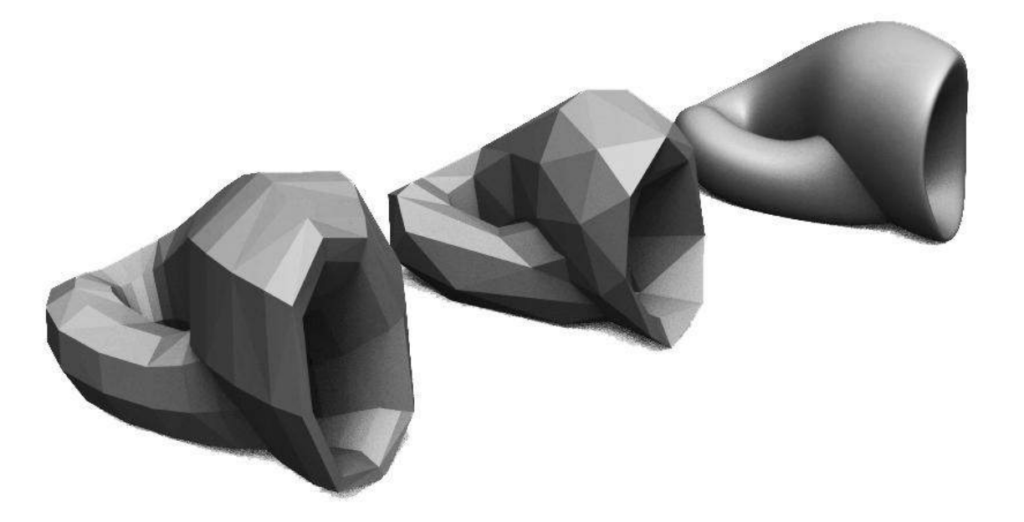
The blockchain is 10 years old and is surrounded with a hype hardly seen since the arrival of the Web. We’d like to see more variety in the imaginaries that underpin blockchains and the backgrounds of the people involved because technologies develop to reflect the values, outlooks and interests of those that build them.
Artists have worked with digital communication infrastructures for as long as they have been in existence, consciously crafting particular social relations with their platforms or artwares. They are also now widely at work in the creation of blockchain-native critical artworks like Clickmine by Sarah Friend[note]The 2017 Furtherfield and NEoN commission as part of the State Machines EU cooperation programme[/note] and Breath (BRH) by Max Dovey, Julian Oliver’s cryptocurrency climate-change artwork, Harvest (see featured image) and 2CE6… by Lars Holdhus[note]Featured as part of Øx, an exhibition of cryptographic artwork curated by Sam Hart as part of the Ethereal Summit, NYC. 2017[/note], to name but a few.
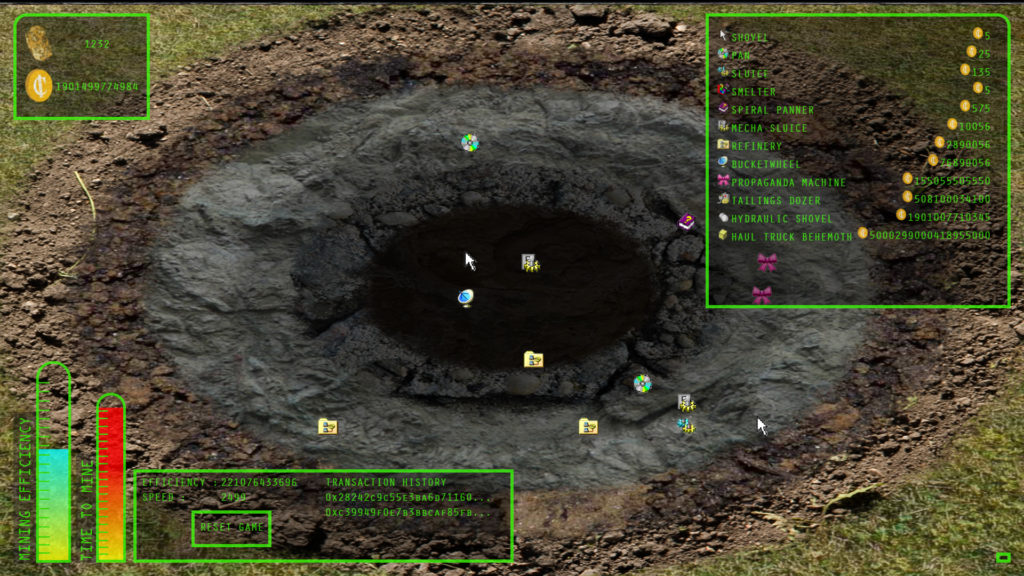
By making connections that need not be either utilitarian nor profitable, artists explore potential for diverse human interest and experience. Also, unlike on blockchains, where time moves inexorably forward (and only forward) – fixing the record of every transaction made by its users, into its time slot, in a steady pulse, one block at a time – human imaginative curiosity can scoot, meander and cycle through time, inventing and testing, intuiting and conjuring, possible scenarios and complex future worlds. They allow us to inhabit, in our imaginations, new paradigms without unleashing actual untested havoc upon our bodies and societies.
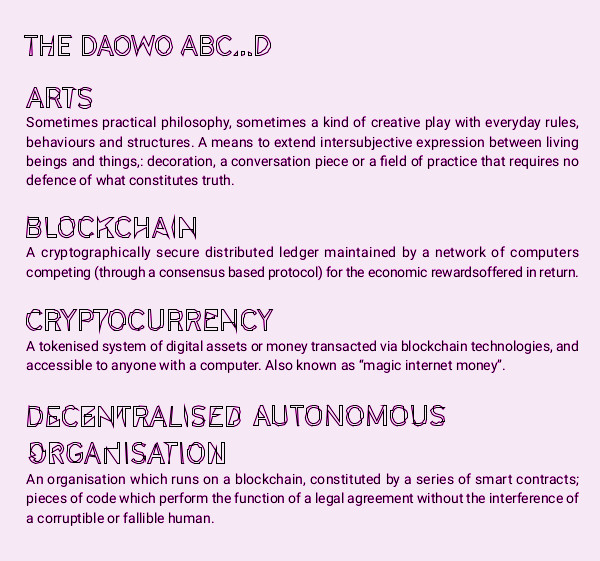
Back in 2008 the global banking system was bailed out by governments with tax payers’ money. Meanwhile a 15 year explosion of web-inspired, decentralised, mutualist-anarchist DIWO (Do It With Others)-style cultural actions and practices ebbed (though its roots remain and go deep). The global network of human attention and resources were, by this time, well and truly re-centralised. The “big five” now owned, and often determined, our communication and expression. Post-Internet artists rejected platform-building as a social artform and instead, took as their materials, lives mediated through social media and corporate owned platforms. Some dived into the marketing vortex, to revel and participate in the heightened commodification of art.
With the introduction of the blockchain protocol on the Internet we see a reversed direction of travel in the artworld, with major developments coming more quickly from the businesses of art, which reassert art’s primary status as an asset class, than from those artists experimenting with new forms of experience and expression enabled by its affordances. Now intermediaries of art world business are moving into blockchains (also sometimes called the “Internet of money”) with a focus on provenance, authentication, digital arts made scarce again with IP tracking, fractional ownership, securitisation and auction[note]See the Blockchain Art Stack Ready Reckoner, DAOWO Resource #1, page 19[/note]. It is blockchains for art, any art, as long as that art can be owned and commodified. This may be seen as a good thing, generating and distributing increased revenues to ‘starving artists’. Also perhaps inevitable, as that which cannot be owned is hard to represent on a blockchain ledger.
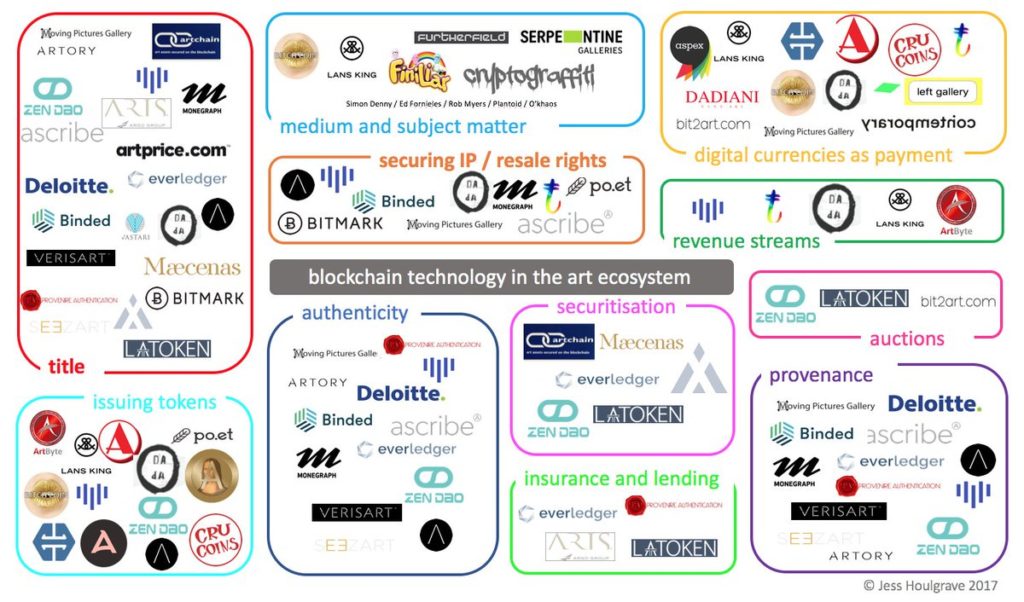
In his new book Reinventing democracy for the digital condition, (2018) Felix Stalder notes that people are increasingly actively (voluntarily and/or compulsorily) participating in the negotiation of social meaning through the “referentiality, communality, and algorithmicity, […] characteristic cultural forms of the digital condition”. In 2015 the Ethereum blockchain launched with a new layer that could run “smart contracts”, pieces of code which act as autonomous agents, performing the function of a legal agreement without the interference of a corruptible or fallible human[note]These technologies now underpin a range of post-currency developments, massive industrial and state investment for authentication of identity and matter, more efficient and secure financial transactions and distribution of digital assets; communications so secure as to facilitate voting; and as a coordinating technology for the billions of devices connected to the Internet.[/note]. These can be combined to perform as blockchain-based companies called Distributed Autonomous Organizations (DAOs) and there are a plethora of blockchain implementations and political agendas now developing. How these unfurl will affect our ability to relate to each other, to deliberate, decide and cooperate with each other as individuals, organisations and societies.
So for us the promise lies in platform-building: by-and-for communities of experimental artists (in the expanded sense of the word), participants and audiences who want to create not just saleable or tradeable art objects[note]For examples like Cryptopunks, Cryptokitties and Rare Pepes read Tokenization and its Discontents by Rhea Myers, Furtherfield 2017[/note] but artworks that critique the relationship between art and money, and expand the contexts in which art is made and valued.
‘AltCoins, cryptotokens, smart contracts and DAOs [Digital Autonomous Organisations] are tools that artists can use to explore new ways of social organisation and artistic production. The ideology and technology of the blockchain and the materials of art history (especially the history of conceptual art) can provide useful resources for mutual experiment and critique’ – Rhea Myers[note](Conceptual) Art, Cryptocurrency and Beyond by Rhea Myers, Furtherfield 2014[/note]
While FairCoin (being rolled out by FairCoop with the Catalan Integral Cooperative) puts new forms of decentralised social organisation into practice on the ground, blockchain based art projects such as Terra0 and Plantoid by O’khaos offer examples of governance systems and invite us to critically “imagine a world in which responsibility for many aspects of life (reproduction, decision-making, organisation, nurture, stewardship) are mechanised and automated.”[note]Both featured in the exhibition NEW WORLD ORDER, currently touring as part of the State Machines programme to Aksioma in Slovenia and Drugo More in Croatia[/note] Both artworks demonstrate functioning systems and help us to think through how we might determine and distribute artistic (and other) resources, their value, and the rules for their co-governance for the kinds of freedoms, commonalities and affiliations that are important for the arts.
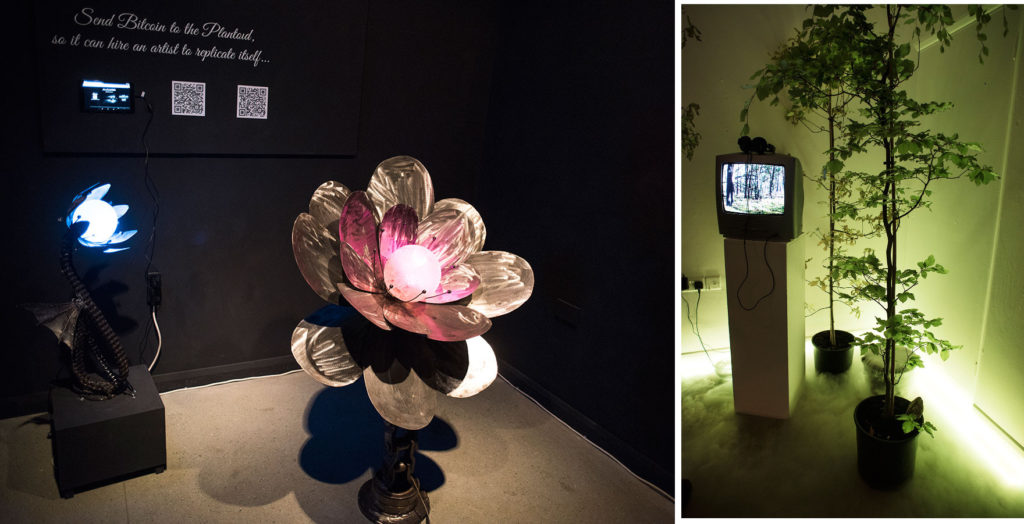
It may take a while. What to value and how to value it is a particularly tangled question. The technical infrastructure of the blockchain is at the stage of development that the Web was at in the early 90s (blockchain technologies are less forgiving, require deeper programming knowledge and are therefore more expensive to build than web pages or platforms) which, along with the get-rich-quick vibe of non-community-platform projects, might be why there are still so few community platforms actually in operation. Resonate.is the cooperatively owned music streaming service is an inspiration in this regard. It is a platform for musicians – creators and listeners – that opens up the governance of its resources to everyone who has ever created or listened to its music. It demonstrates one way in which a DIWO ethos might work.
Helen Kaplinsky is exploring how to bootstrap to the blockchain, Maurice Carlin’s Temporary Custodians project which realises an alternative system of peer2peer art ownership and stewardship at Islington Mill[note]See An Alternative to a Historical Mode of Art Ownership, Helen Kaplinsky in DAOWO Resource #1, page 6, Furtherfield, 2018[/note].
Three preoccupations dominate 2018 New Year blogs and commentary that mark the blockchain’s 10th anniversary: blockchains as cash cults; doubts about the actual utility of blockchains and; the environmental impact of Bitcoin (still, erroneously interchangeable with the blockchain in the minds of lots of people). We add to these our concern about the intensification of control enabled by these infrastructures, AND the simultaneous conviction (shaped by deep collaborations and hard criticisms over the last years) that blockchains have the potential to enable and stimulate new forms of social organisation, resource distribution and collaboration in the arts.
The first two preoccupations match exactly the commentary surrounding the early days of the Web and we know how that turned out. The remaining concerns are grist to the mill of our ongoing programme of publications, films, exhibitions and events. The technologies are only now stabilising to allow more grass-roots infrastructural developments.
We invite you to bring your own lens of constructive critique, gather a crowd to debate and explore how we might pull blockchains into art, on the arts’ own terms, and to gain an understanding of why it is worthwhile.
If you’re interested in Furtherfields critical art and blockchain programmes with various individuals, groups and partners since 2015. You could check out how it all started, watch our short film, read this book, visit this exhibition, or archives and documents of previous exhibitions[note]The Human Face of Cryptoeconomies[/note], [note]New World Order[/note], read reviews and debate, and join us at our ongoing DAOWO blockchain lab series, devised with Ben Vickers (Serpentine Galleries) in collaboration with the Goethe-Institut London, and the State Machines programme[note] Its title is inspired by a paper written by artist, hacker and writer Rhea Myers called DAOWO – Decentralised Autonomous Organisation With Others.[/note]
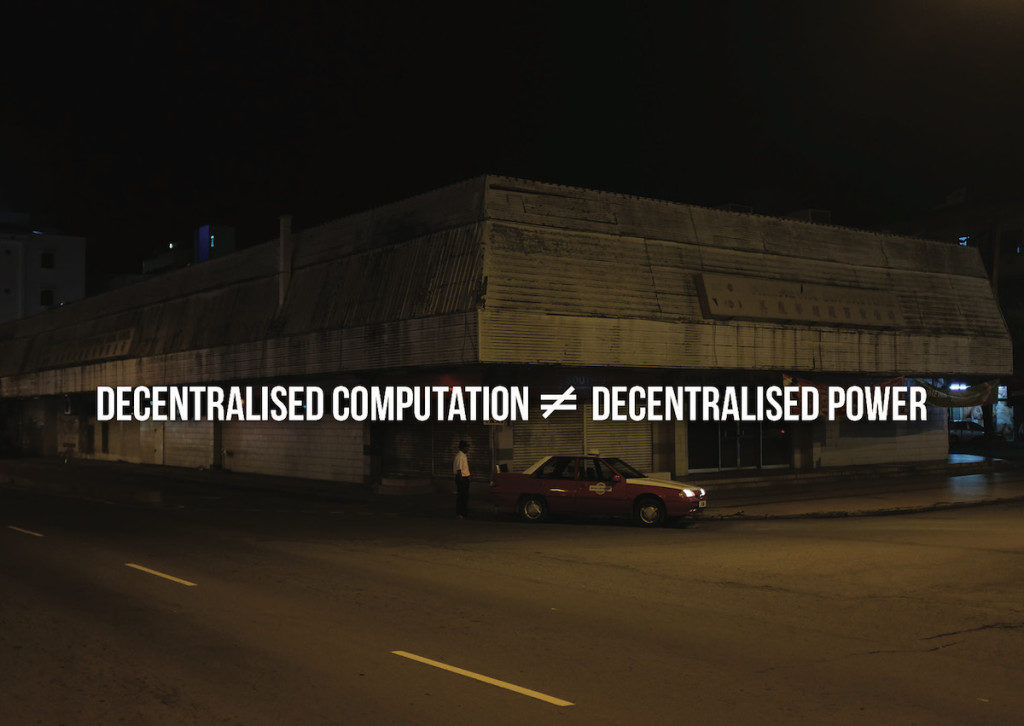
Data structures hold information in a way that makes it easier to be manipulated by software, given particular constraints on computing resources such as the time or space taken up. A linked list takes very little space in a computer’s memory on top of the space taken up by the data it contains and is very quick to add new data to but it is very slow to search from the beginning to the end of the list.

In contrast, a “hash table” data structure makes looking up information much faster by calculating a unique identifier “hash” for each item that can be used as an index entry for the data rather than having to search all the way through a long list of links. Think of a hash as a very large, very unique number that can be reliably calculated for any piece of data – any file containing the text “Hello world!” will have the same cryptographic hash as any other. The cost of this fast access is that the table must be allocated and configured in full before data can start to be stored in it.
A “binary tree” balances speed and storage space by storing data in a structure that looks like a tree with two branches at the end of each branch, creating a simple hierarchy that takes very little initial extra storage space but that given its structure is relatively fast to search compared to a linked list.
Each block in a blockchain is linked to the previous one by identifying it using its (cryptographic) hash value. And the transactions in the block are stored in a (cryptographic hash) tree. This means that a blockchain is a more complex structure than the simple image at the top of this page. But so what? Why should we care about the shape of the blockchain when its social, environmental and political impact seem to be in such urgent need of critique?
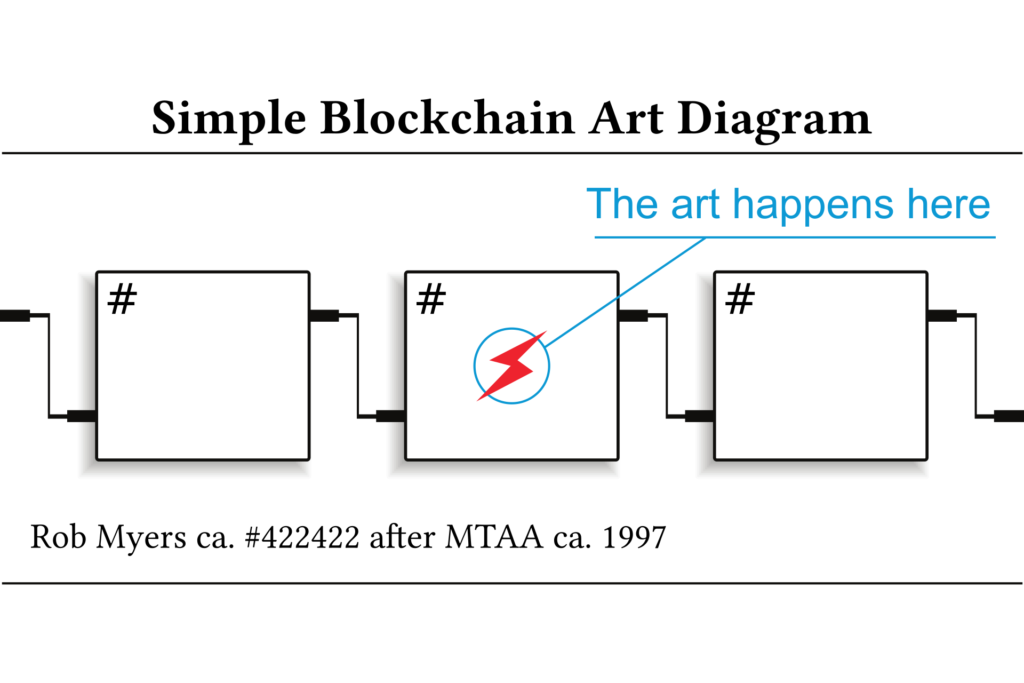
The geometric, techonomic and social form of a blockchain are all related, and understanding one helps us to reason better about the others. As the quick tour through software data structure design above indicates, the constraints on technological form are not abstract, they are tied to real needs and agendas. Bitcoin is no exception to this – the lists and trees that make up its blockchain as they are built and broadcast on a peer-to-peer network by computers competing to claim economic incentives for doing so were chosen very explicitly to exclude the intervention of the state and other “trusted third parties” (such as banks) in authentic economic relationships between peers.
Bitcoin’s algorithms prioritise the security of the blockchain above all else, maximising security like a mythical Artificial Intelligence “paperclipper” maximises the production of a particular material good regardless of the other consequences . This explains Bitcoin’s energy consumption, which whilst lower than the US military or the other equivalent systems that guarantee the security of the dollar is probably still much higher than Satoshi Nakamoto originally envisioned.
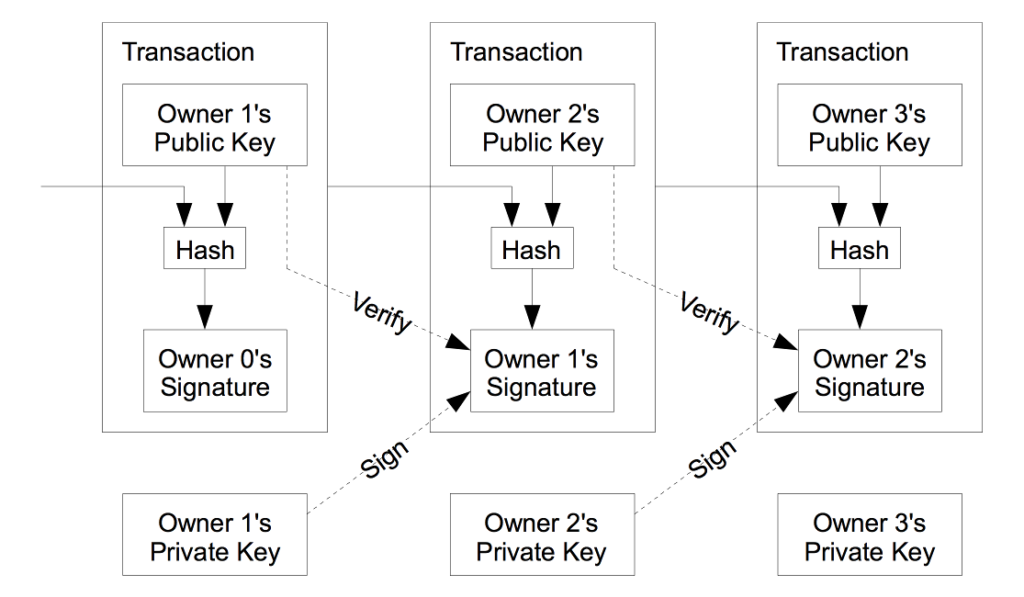
There are other algorithms, though, which have been created since 2008 to address perceived flaws in Bitcoin’s design or to address different ideological agendas. These create different forms, and contrast instructively with that of Bitcoin’s blockchain. Please note that these are experimental and often controversial technologies. Nothing that follows is investment advice.
Bitcoin creates blocks on average every ten minutes. Faster currencies quickly emerged, LiteCoin and Dogecoin are leading examples, with 2.5 minute and one minute block times respectively. Blocks may contain more or fewer transactions, and be more or less frequent even within the same blockchain as the algorithms tweak its parameters to ensure its security. Blockchains have rhythm, they stall or race, each block is larger or smaller and closer or further from the last one. Transactions fan into and out from addresses in each block, with varying values of currency or amounts of data each time. We are now very far from the block-and-arrow diagrams of linked lists indeed.
The Ethereum system, which extends Bitcoin’s financial ledger into a more general system for “smart contracts”, has the smallest block time of any leading cryptocurrency – fifteen seconds. Like the others mentioned it still uses a variant of the energy-hungry “Proof of Work” security system from Bitcoin. In Proof of Work, anyone who wants to add a block of transactions to the list must consume computing resources to solve a puzzle (essentially guessing a large number ending with multiple zeroes). As these resources cost money, anyone willing to expend them must stand to gain more from adding the next block than they lose to their electricity bill. This Game Theory gambit secures a Proof of Work blockchain. The mindlessly focussed, paperclipper nature of blockchain security algorithms means that as more people use more computers to compete to be the next person to add a block to the chain and claim the economic reward for doing so, the difficulty and therefore the amount of electricity required to solve that puzzle has increased massively, growing the energy footprint of cryptocurrency.
Ethereum is planning to switch to a “Proof of Stake” system, like that used in currencies like NXT and Decred (about which more below). Rather than burning electricity like Proof of Work, Proof of Stake uses a blockchain’s own existing currency “staked” by users to demonstrate their standing within the system and to thereby get a chance to be chosen by the network to add the next block. Proof of Stake and its related “Proof of Authority” system move from the “miners” of Proof of Work who operate on the blockchain from outside to a system of capitalist investors or even an aristocratic class of gatekeepers who operate within the logic of the blockchain itself. This folds the blockchain’s outside in on itself.
Bitcoin’s blocks have been fixed at one megabyte in size since a temporary security fix by Satoshi Nakamoto introduced the limit. As Bitcoin usage has grown, blocks have become increasingly full (allegedly often as a result of economic “spam” attacks intended to manipulate prices – competing for space in blocks drives up transaction fees which can in turn discourage users and ultimately drive down the price of Bitcoin). How should this problem be addressed – how should Bitcoin scale? Should the number of transactions stored in the blockchain grow, increasing the block size limit and making it harder for individuals to store the blockchain on consumer hardware in a decentralised manner? Or should transactions be somehow moved “off-chain” into “second-tier” systems that build on top of the blockchain, adding complexity and introducing potential new choke-points for existing capital to exploit? Big blocks or small blocks (like the big or little ends of eggs, or integers…)? This is a real debate in the Bitcoin world, and illustrates how the consequences of a simple change in technical form like, for example, increasing block sizes from one to two megabytes, can have profound effects on the social and economic form of a cryptocurrency. “Big blockers” propose solutions like the breakaway “Segwit2X” or “Bitcoin Cash” systems, scaling “on-chain” with ever greater amounts of data in the same structures. “Small blockers” propose solutions that move data out of the blockchain, into “Segregated Witnesses” that store cryptographic signatures outside of the blockchain, or the cybernetic rhizomes of “Lightning Networks”.
A Lightning Network adds a second peer-to-peer network of nodes that pass transactions between themselves. These are all valid Bitcoin transaction data structures, but unlike the main Bitcoin peer-to-peer network they are not immediately broadcast to the main Bitcoin network to be bundled up into blocks. Rather they can be replaced at any moment by new transactions, sending different amounts of cryptocurrency along a “channel” between one or (most often) more participants arranged in a random network like the one used by the Tor privacy network.
It’s an elegant but sometimes complex solution, and one that triggers moral panic within some elements of the Bitcoin community equivalent to that triggered by Bitcoin within some elements outside of it. Lightning Nodes with more Bitcoin can extract more fees from Lightning Network transactions, to be sure, and this is a form of centralisation. Decentralisation’s value to cryptocurrency is as a concrete guarantor of security, and Bitcoin’s value is its security. But individuals can still run Lightning Network nodes and send transactions between each other, and pools of capital already have centralising effects in exchanges and mining cartels.
Techniques similar to those used to move transactions off-chain by Lightning Networks can be used to move value between different blockchains without exchanges centralising the process. “Atomic Swaps”, the “Plasma” system and the realisation of the previously mythical “Doge-Ethereum bridge” using the TrueBit system are all different ways of building wormholes between the separate universes of individual blockchains.
Another approach to scaling is borrowed from conventional database design: breaking the blockchain into smaller and smaller pieces or “shards“, forming another tree structure, allows each group of users of the blockchain to only have to keep track of the part that contains the transactions they are interested in. The Ethereum blockchain will move to sharding in future, after its switch to Proof of Stake. Sharding destroys the metronomic, panopticonic unity of the blockchain to create islands of transactions whose truth is local to them, a non-monotonic logic that makes moving value and information between shards difficult but still not impossible.
CryptoKitties can go on their own shard, the Gnosis prediction market on another one, and if one needs to bet on something kitty-related this will require communicating cross-shard. From islands in the net to islands in the blockchain. Techonomically, the data structures and economic incentives of such a system are more complex than a unified blockchain, but making access to the network cheaper by requiring each user to store less data to send their transactions restores the blockchain’s initial low barrier of entry.
Deciding how to scale is a matter of governance. The Decred cryptocurrency has put governance front and centre. As well as moving to a hybrid Proof of Work / Proof of Stake system it has implemented an “on-chain-governance” system. Decred contains the forum for its own critique and transformation, implemented as an extension of the staking and voting system used by its Proof of Stake system. On-chain governance is controversial but addresses calls to improve the governance of cryptocurrency projects without falling prey to the off-chain voluntarism that can result from a failure to understand how the technomic and social forms of cryptocurrencies relate in finely-tuned balance.
Some post-Bitcoin systems move further away from the form of a chain or do without them altogether. The Holochain system gives each user their own personal blockchain and stores a link to it in a global “Distributed Hash Table” of entries (like that used by the BitTorrent system), a forest of trees rather than a tree of shards. This possibly solves the bandwidth problem of simple blockchain technology but weakens some of their strengths in a trade off of convenience against long-term security and robustness. Iota (the most controversial technical design discussed here) doesn’t have a blockchain at all. It uses a “tangle” of transactions, within which each new transaction must do the Proof of Work of validating several previous transactions. This seems like an ideal restoration of the original vision of Bitcoin as a peer-to-peer currency, solving the problems centralisation and energy usage, but the current Iota network is in fact heavily centralised by its reliance on nodes controlled by the Iota foundation to secure it.
IPFS is not a cryptocurrency and does not use a blockchain but it complements the blockchain technologically and often socially. IPFS is related to blockchain technology in its use of cryptography and the logic of game theory but also as a popular way of storing information that is too large to fit on the blockchain. And in its use of a cryptocurrency token – “Filecoin” – to pay for storage on its main network. Filecoin was released in an “Initial Coin Offering” in 2017, and that is all we will say about ICOs here… IPFS uses a “Merkle DAG”, a network of links similar to the World Wide Web or a filesystem, but with each item (the pages or files) represented not by a human-given name but by the cryptographic hash of its content. “Merkle” refers not to the German Chancellor but to the computer scientist who described this use of cryptographic hashes in a tree data structure (like that used in Bitcoin). “DAG” is an acronym for “Directed Acyclic Graph” – a network with no loops in it because loops would confuse the algorithm. IPFS distributes content using a “market” algorithm, bartering for blocks of data on the network with Filecoin or with other blocks.
Each of these pocket universes of social and economic reality has its own structure and forms, its own space and geometry. Chains, and being on or off of them. Blocks of different sizes and fullness, with varying distances between them. Channels, rhizomes, shards, tangles, mines and thrones. Forests, tables, graphs, markets and identities. These formal differences distinguish different cryptocurrencies technologically and politically. Algorithmic differences are ideological differences, this is not an external critique it is internal to the logic of cryptocurrency – algorithms are changed to better instantiate what is just. These algorithmic differences produce formal differences. Their surplus value and unintended consequences continue this process of critique-in-code.
The question of the shape of the blockchain opens up onto a space of technomic, geometric and social forms. We can move through the hyperspace containing and relating these forms to the specific spaces of individual blockchains that are built around them, through the constraints and agendas that they reflect, out into wider society. The gaps and overlaps in this space indicate useful problems for the work of development or critique. Given this, geometries and forms are at least as useful a navigational marker as professed intentions or revealed preferences. But only if we can imagine and visualise them.
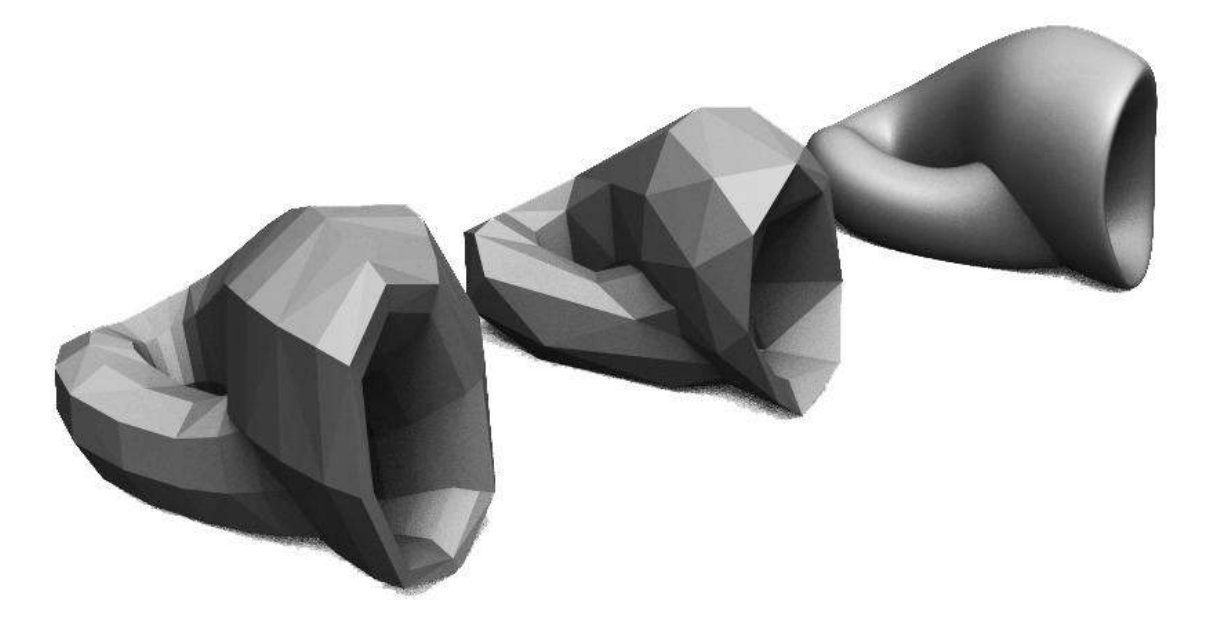
Art deals in form, from the spatial volumes of Renaissance perspective to the choreography and logistics of Relational and Contemporary art. Whether promoting, like Jessica Angel’s public art envisioning of the Doge-Ethereum bridge as a Klein Bottle, critiquing or simply rendering perceptible the very different kinds of form that make up the geometric, technomic and social forms of the blockchain and the relationships between them, art has the unique potential to uncover the true shape of the blockchain.
Image notes:
Simple Blockchain Art Diagram, by Rhea Myers. 2016
What the Silk Road bitcoin seizure transaction network looks like, Reddit
This essay is a response to Identity Trouble (on the blockchain), the second in the DAOWO lab series for blockchain and the arts. Rosamond reflects on both ongoing attempts to reliably verify identity, and continuing counter-efforts to evade such verifications.
Online transactions take place in a strange space: one that blurs the distinctions between the immediate and the remote, the intimate and the abstract. Credit card numbers, passing from fingers to keyboards to Amazon payment pages, manage complex relations between personal identity and financial capital that have been shifting for centuries. Flirtations on online dating platforms – loosely tied to embodied selves with a pic or two and a profile – constitute zones of indistinction between the intimate spheres of the super-personal, and hyper-distributed transnational circuits of surveillance-capital. Twitter-bot invectives mix with human tweets, swapping styles – while all the while bot-sniffing Twitter bots try to distinguish the “real” from the “fake” voices[1]. Questions of verification – Who is speaking? Who transacts? – proliferate in such spaces, take on a new shape and a shifted urgency.
How does personal identity interface with the complex and ever-changing technical infrastructures of verification? How is it possible to capture the texture of “identity trouble” in online contexts today? The second in the DAOWO event series, “Identity Trouble (on the blockchain),” addressed these questions, bringing together a range of artists, developers and theorists to address the problems and potentials of identification, using technical apparatuses ranging from blockchain, to online metrics, to ID cards and legal name changes. The day included reflections on both ongoing attempts to reliably verify identity, and continuing counter-efforts to evade such verifications.
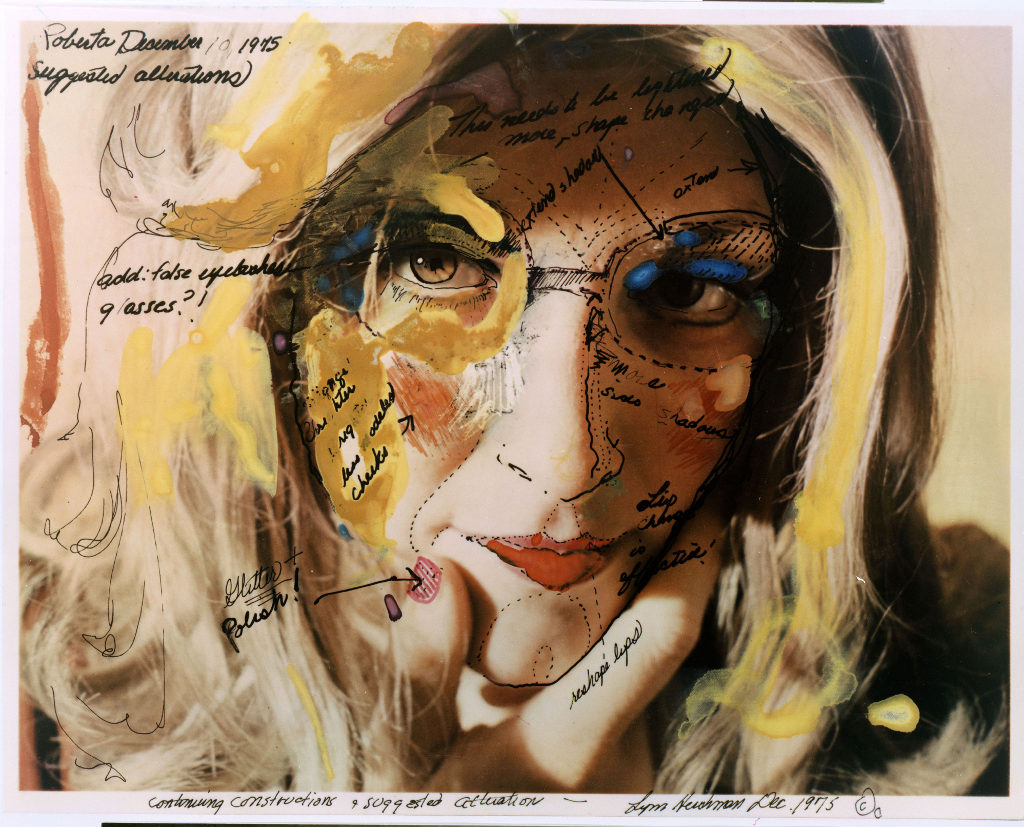
Before going into the day in any detail (and at the risk of going over some already well-trodden ground), I want to try to piece together something which might – however partially – address the deeper histories of the problems we discussed. Of course, identity was an elusive concept long before the internet; and the philosophical search to understand it has run parallel to a slow evolution in the technical and semiotic procedures involved in its verification. In fact, seen from one angle, the period from the late nineteenth century to present can be understood as one in which an increasing drive to identify subjects (using photo ID cards, fingerprints, signatures, credit scores, passwords, and, now, algorithmic/psychometric analysis based on remote analysis of IP address activity) has been coupled with a deep questioning of the very concept of identity itself.
On the one hand, as John Tagg describes, in the second half of the nineteenth century, the restructuring of the nation-state and its disciplinary institutions (“police, prisons, asylums, hospitals, departments of public health, schools and even the modern factory system itself”[2]), depended on creating new procedures for identifying people. This involved, among other things, yoking photography to the evidentiary needs of the state – for instance, through Alphonse Bertillon’s anthropometric identity card system, invented in 1879 and adopted by French police in the 1880s. The identity cards, filed by police, included suspects’ photographs and measurements, and helped them spot repeat offenders.
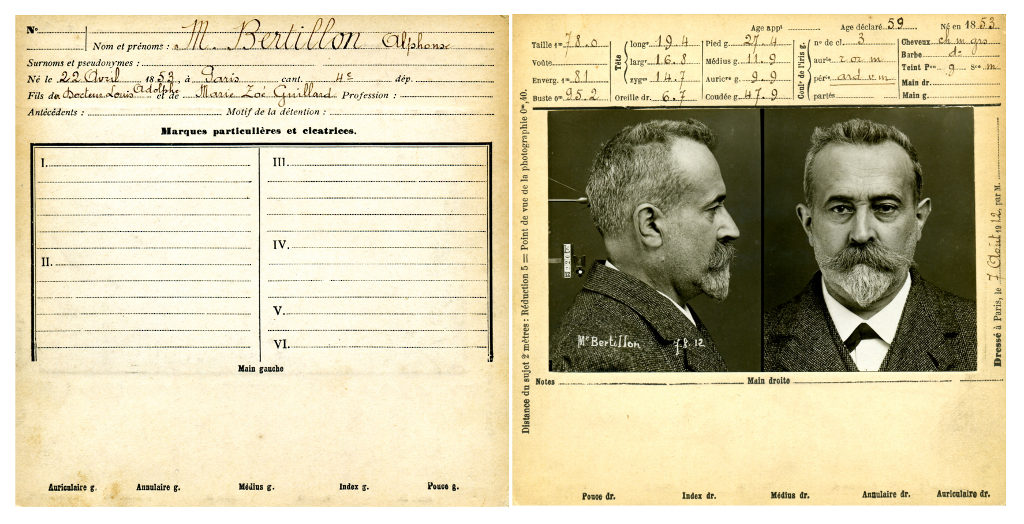
This impulse to identify, it seems, has only expanded in recent times, given the proliferation of biometric and psychometric techniques designed to pin down persons. On the biometric end of this spectrum, retinal scans, biometric residence permits and gait recognition technologies manage people’s varying levels of freedom of movement, based on relatively immutable bodily identifiers (the retina; the photographic likeness; the fingerprint; the minute particularities of the gait). On the psychometric end of the spectrum, private companies calculate highly speculative characteristics in their customers by analysing their habits – such as “pain points.” The American casino chain Harrah’s, for instance, pioneered in analysing data from loyalty cards in real time, to calculate the hypothetical amount of losses a particular gambler would need to incur in order to leave the casino. The pain point – a hypothetical amount of losses calculated by the company, which may be unknown to the customer herself – then provided the basis for Harrah’s’ real-time micro-management of customer emotion, enabling them to send “luck ambassadors” out onto the floor in real time to boost the spirits of those who had a bad day [3].
On the one hand, then, identification apparatuses have become ever more pervasively intertwined with the practices of daily life in industrialized societies since the latter half of the nineteenth century; this produced new forms of inclusion and exclusion of “exceptional” subjects within various institutional regimes. On the other hand, just as the technical and semiotic procedures associated with verifying identity were proliferating and becoming ever harder to evade, modern and postmodern thinkers were deeply questioning what, exactly, could possibly be identified by such procedures – and why identity had become such a prominent limiting condition in disciplinary societies. James Joyce’s character Stephen Dedalus marvels at the lack of cellular consistency in the body over a lifetime. While an identifying trait, such as a mole on the right breast, persists, the cells of which it is made regenerate repeatedly. (“Five months. Molecules all change. I am other I now.” [4]) How, then, can debts and deeds persist, if the identificatory traits to which they are indexed are intangibly inscribed in an ever-changing substrate of cellular material?
In the mid-twentieth century, Foucault and Barthes deeply questioned the limitations identity imposed on reading and interpretation. Why, for instance, need authorship play such a prominent role in limiting the possible interpretations of a text? “What difference does it make who is speaking?” [5]
In ’nineties identity discourse, theories of difference became particularly pronounced. Cultural theorists such as Stuart Hall radically questioned essentialist notions of cultural identity, while nonetheless acknowledging the political and discursive efficacy of how identities come to be narrated and understood. Hall and others advocated for a critical understanding of identity that emphasized “not ‘who we are’ or ‘where we came from’, so much as what we might become, how we have been represented and how that bears on how we might represent ourselves. Identities are… constituted within, not outside representation.” [6]
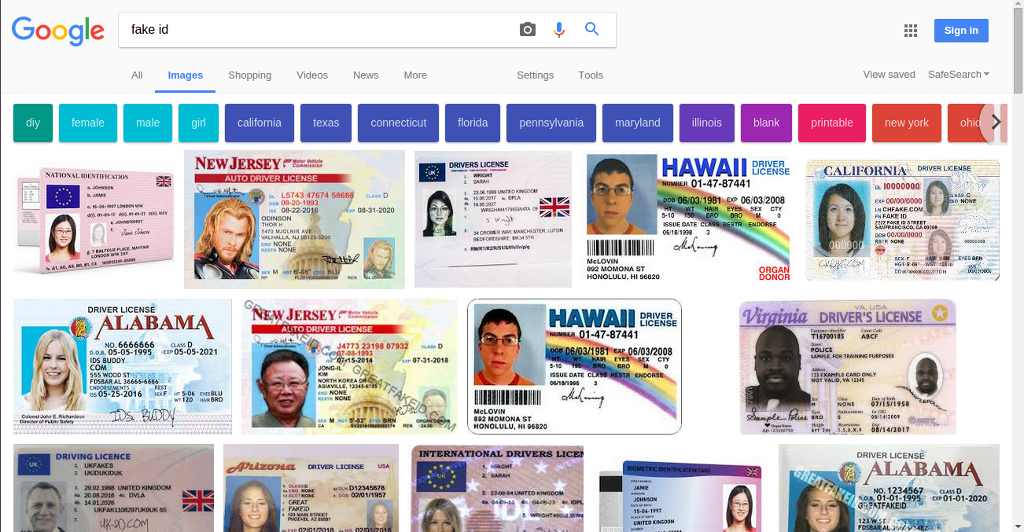
On the one hand – so I have said – myriad technical apparatuses have aimed to ever more reliably capture and verify identity. On the other hand, myriad critical texts have questioned identity’s essentialist underpinnings. But today, these lines have become blurred. The anti-identitarian mood permeates technical landscapes, too – not just theoretical ones. Fake IDs, identity theft, and other obfuscations have grown ever more complex alongside apparatuses for identification; indeed, such fakeries have both emerged in response to, and driven yet further developments in technologies for identity verification as is the case in a Fully-Verified system. The frontiers of identification are ever-changing; each attempt to improve technologies for verifying identity, it seems, eventually provokes the invention of new techniques for evading those verifications.
At the inherently uncertain point of contact between person and online platform, new forms of anti-identifications are practiced – invented or adapted from previous stories. In one bizarre example from 2008, a Craigslist advert posted in Monroe, Washington requested 15-20 men for a bit of well-paid maintenance work. The men were to turn up at 11:15 am in front of the Bank of America, wearing dark blue shirts, a yellow vest, safety goggles and surgical masks. As it turned out, there was no work to be had; instead, the men had been summoned to acts as decoys for a robbery – a squid-ink trail of similarity to help the thief escape. The idea, though inventive, wasn’t entirely original; it was described by police as a possible copycat of the plot in the film The Thomas Crown Affair (1999) [7.
Today, the anti-identitarian mood has spread far beyond small-scale manoeuvers like this. Multiple large-scale data breaches – such as the recent Equifax breach, which compromised the data of over 145 million customers [8] – have put a cloud over the veracity of millions of people’s online identities. The anti-identitarian mood becomes broad, pervasive, and generalized in data-rich, security-compromised environments. It becomes a kind of weather – a storm of mistrust that gathers and subsides on the level of infrastructures and populations.
Such are some of the complexities that the DAOWO speakers had to contend with. At the Goethe Institute, we thought through some of the ways in which identities are being newly constituted within representation – ways that might, indeed, answer to the technical and philosophical problems associated with identification. Backend developer Thor Karlsson led us through his company Authenteq’s quest to provide more reliable online identity verification. Citing the ease with which online credit card transactions can be hacked, and with which fake accounts proliferate, Karlsson described Authenteq’s improved ID verification process – a digital biometric passport, using blockchain as its technical basis. Users upload a selfie, which is then analysed to ensure that it is a live image – not a photograph of a photograph, for instance. They also upload their passport. Authenteq record their verification, and return proof of identity to users, on the BigChainDB blockchain.
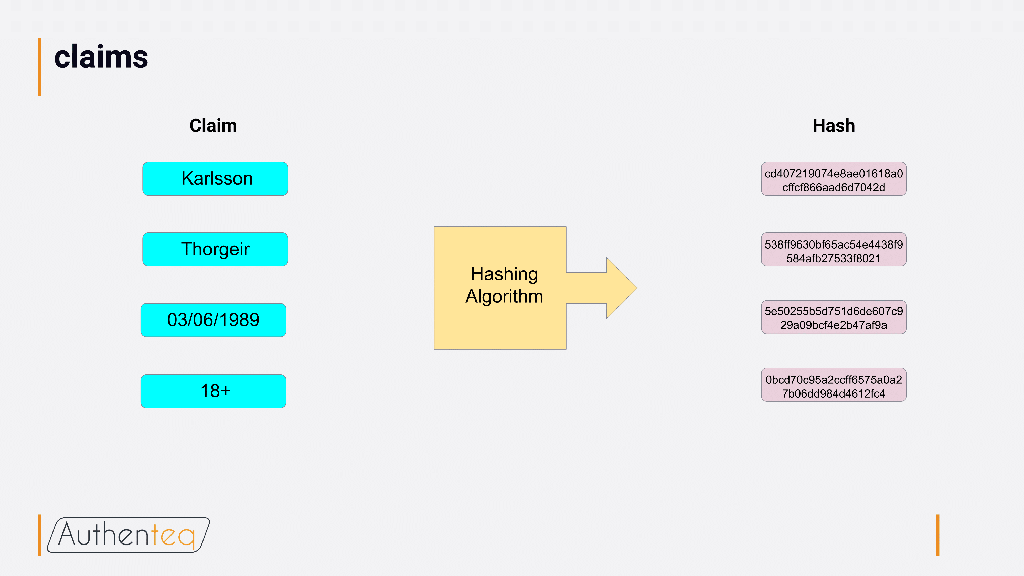
A hashing algorithm ensures that users can be reliably identified, without a company having to store any personal information about them. Authenteq aims to support both identity claim verifications and KYC (Know Your Customer) implementations, allowing sites to get the information they need about their users (for instance, that they are over 18 for adults-only sites) without collecting or storing any other information about them. Given how much the spate of recent large-scale data breaches has brought the storage of personal data into question, Authenteq’s use of blockchain to circumvent the need to store personal data promises a more secure route to verification without revealing too much of personal identity.
Nonetheless, while Karlsson and Authenteq were optimistic that they can make meaningful improvements in online identification processes, other provocations focused on the potential problems associated with such attempts at identification – on the protological level, on the level of valuation, and on the level of behaviour-as-protocol. Ramon Amaro delivered an insightful critique of blockchain and the problem of protological control. There is no such thing as raw data – inputs are always inflected by social processes. Further, the blockchain protocol relies heavily on consensus (with more focus on consensus than on what, exactly, is being agreed upon) – which reflects a need to protect assets (including identity) and oust enemies that is, ultimately, a capitalist one. Given this, how can identity manoeuver within the blockchain protocol, without always already being part of a system that is based on producing inclusions and exclusions – drawing lines between those who can and cannot participate?
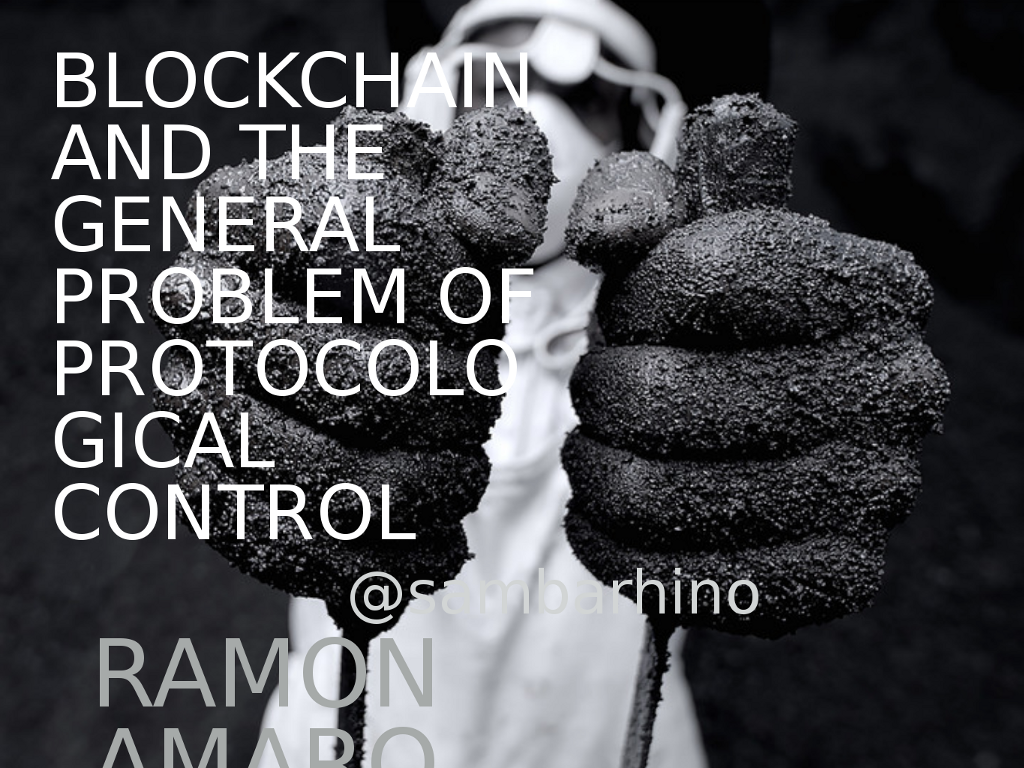
My own contribution focused on systemic uncertainty in the spheres of personal valuation, looking at online reputation. In a world in which online rankings and ratings pervade, it seems that there is a positivist drive to quantify online users’ reputations. Yet such apparent certainty can have unexpected effects, producing overall systemic volatility. At the forefront of what I call “reputation warfare,” strategists such as Steve Bannon invent new ways to see systemic reputational volatility as a source of value itself, producing options for the politicians they represent to capitalize on the reputational violence produced on sites like 4chan and 8chan.
While these contributions reflected on some of the critical problems associated with pinning down identity’s value, some of the artists’ contributions for the day focused on the ludic aspects of identity play. Ed Fornieles’ contribution focused on the importance of role play as a practice of assuming alternate identities. In his work, this involves thinking of identity as systemic, not individual – and considering how it might be hacked. In many of Fornieles’ works, this involves focusing attention on the relation between identity and the platforms on which they are played out. Behaviour becomes a kind of protocol; role play becomes a reflection on strands of behaviour as protocol.

We ended the day with a screening and discussion of My Name is Janez Janša (2012), a film by three artists who, in 2007, collectively changed their names to Janez Janša, to match that of the current president of Slovenia. The film, an extended meditation on the erosion of the proper name as an identifier, catalogued many instances of ambiguity in proper names – from the unintended (an area of Venice in which huge numbers of families share the same last name) to the intentional (Vaginal Davis on the power of changing names). It also charted reactions to the three artists’ act of changing their name to Janez Janša. What seemed to confound people was not so much that their names had been changed, but rather that the intention of the act remained unclear. In the midst of today’s moods of identification, there are high stakes – and many clear motives – for either obscuring or attempting to pinpoint identity. Given this, the lack of clear motive for identity play seems significant; by not signifying, it holds open a space to rethink the limits of today’s moods of identification.
The DAOWO programme is devised by Ruth Catlow and Ben Vickers in collaboration with the Goethe-Institut London, and the State Machines programme. Its title is inspired by a paper written by artist, hacker and writer Rhea Myers called DAOWO – Decentralised Autonomous Organisation With Others
This interview was originally printed in Artists Re:Thinking the Blockchain published in partnership with Torque Editions in 2017.
Marc Garrett: One of many interesting and experimental things about the album Platform, released with Holly Herndon in 2015, is the decision to break away from the perspective of singular genius, and involve a variety of collaborators. This included artist Spencer Longo, Claire Tolan (of Tactical Tech), and Dutch design studio Metahaven. On the 4AD press release page it says that it ‘underscores the need for new fantasies and strategic collective action.’ Under the name of Holly Herndon, along with Holly, you all became a kind of cooperative, collective construction. What inspired you and Holly to explore what could be seen as a decentralized body, or assemblage of individuals as a collective? Or how would you describe your working identity and the importance of this move?
MD: To put it in pretty boring terms, it has become a core part of our mission to be pretty candid about what we do. Holly had been making albums and touring by herself, and then during the early experiments that later became Platform (Chorus and Home) we had begun working together, as we were occupying this tiny apartment in San Francisco, and I was working on this weird net concrete stuff in one room, and Holly was writing for voice in the other, and I think both of us picked up from the ambient sound that the two worked really well together! For the Chorus video we had seen the work of the Japanese artist Akihiko Taniguchi, and really enjoyed the collaborative process of putting that video together, and so then sought out Metahaven, who we’d been in touch with for some time out of aligned interests. Basically most art production at a certain high level is collaborative, and I think it’s just part of our idealistic view on the world that this be transparent and celebrated. Beyond that, when we were coming up with the vision for Platform it also felt very necessary as a political gesture to make a point of the project being aligned with certain political interests, and a politicized way of working and acknowledging others. Working this way has changed my life, and made everything more fun and exciting without diminishing the importance of any individual contributions. It makes for better results, I feel, better general feeling, and also creates these very tangible collaborative connections between fields. It’s also just an interesting experiment to run in music when it feels like so many sonic experiments have been done to death – I’m personally interested in how decentralized practices, collaboration and connectivity, can change the construction and dissemination of music, and ultimately it’s power to be a force in the world.
HH: It sometimes feels like our society is ‘every person for themselves’. We promote hyper individualism at the cost of the planet and social health, and the music industry largely parrots this mentality. We realized how problematic this is, and if we are going to be true to ourselves, then the practice should reflect that concern. It’s been a learning curve for me; learning to not control every single aspect (I tend to micromanage), to hear other opinions, to let go, and not feel threatened if someone else’s idea is better than my own. Releasing my debut album solo was an important step in building my confidence, however ultimately the work itself is the most important, and not the ego. Not to mention that we spend a lot of time on computers, which can be lonely, so working with other people helps us to unplug and see the world around us a little more.
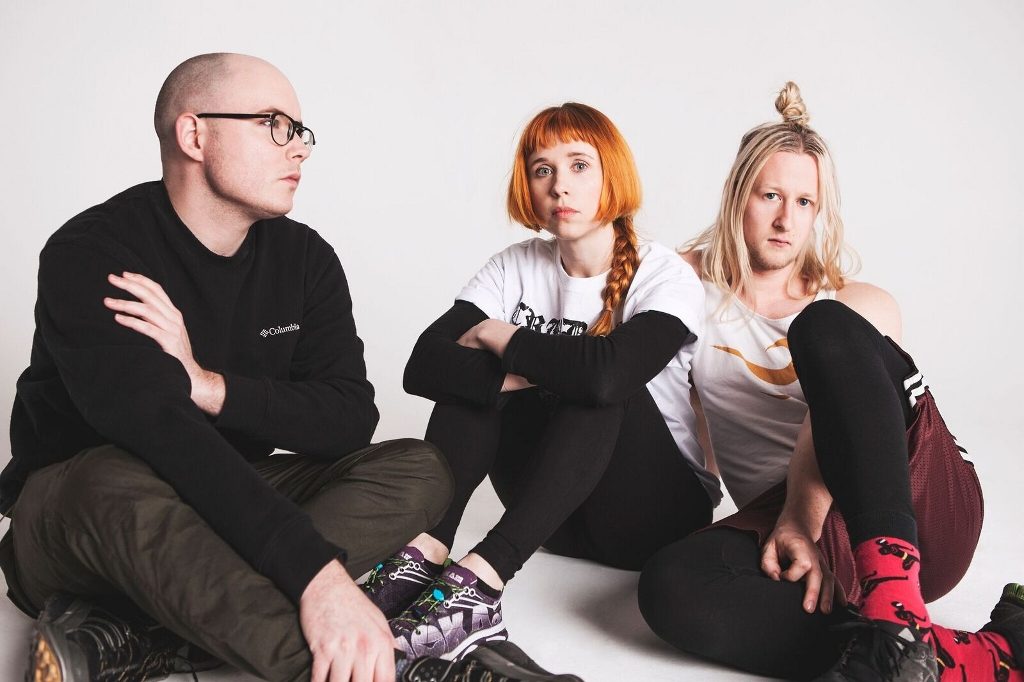
MG: In a world that traditionally, economically and politically, supports the values of individuality above community, or peer to peer collaboration. How did the audience, the music industry, and others in the world (presuming they have) come to terms with this adventurous, creative intention?
HH: It was varied, but overwhelmingly positive. When we were doing press around the record, it was difficult to get some journalists to write about the other artists and thinkers that I was collaborating with, or even just referencing. Those that understood the gesture really embraced the idea, and that successfully provided a platform to highlight everyone’s work.
There are a few industry complications; for example, the project is released under my birth name, so in some ways I am still at the centre of the orbit, which is a problematic professional necessity, but also helps somehow. We used the idea of the Trojan Horse a lot, as in a way my easily understood singular presence served as a gateway into this whole other universe of people. It’s a balancing act, as in various different scenarios you feel different expectations as to what the industry wants; on a pop level they want a simple narrative of my face, and tend to focus on often mundane characteristics such as my gender and education. On other levels you see that the experiment has opened up a different narrative potential, where people’s interest in the record and it’s cast forks off into the direction of their choosing.
It’s really noticeable live, where the audiences have been really supportive. After the shows you experience all kinds of people who come along, hanging out with different people who were on stage – Mat has his own audience somehow, and the same with Colin Self, who often tours with us. As a result of opening up the process and allowing the full breadth of interests and approaches to shine through a little more than is standard, at different shows we have people come up to talk to us about the music, or nerd out about cryptocurrencies and ICO’s, or Chelsea Manning. It feels meaningful, and gratifying for that. We always address the location of the show, whether through the visual or sound, and try to always be alert and responsive. It’s a special privilege to share that time with people, and I think that the concept comes across quite effectively in a live situation as each individual serves a very different purpose in constructing the collective experience.
MD: I think that Platform was received really well. Holly opening up her practice didn’t diminish her signature on the artworks, and I think that it has really won a lot of people over. I think you can feel at our shows that we have a greater principle to what we do, and I think it has maybe made a lot of space for people to conceive of their own experiments and maybe not be concerned at how being ambitious on a conceptual level will affect the ability for the art to travel in the world. Naturally there is also a throttling effect within aspects of the creative industry, where maybe they didn’t want to deal with the bigger ideas around the record, however I feel that the music is strong enough to kind of live in those circles without knowing the story behind it. Overall I think people were refreshed and encouraged by the idea, and transparency of the whole thing. For us now it is a way of being. In my mind, there is more room for individuality to shine when you can guarantee that someone’s work and ideas will be respected and celebrated. The canon of artistic history has omitted so many people’s ideas and contributions for the purpose of having a simpler market narrative, and yet we live in a time when people can and want to dig deeper, and perhaps have a greater capacity for complexity of information – so we want to try and harness that for something positive. Particularly given our interests in subcultural music history, software, crypto etc. there is really no other option but to put the community first. Without community literally none of this exists. Zero. All of our talents and ideas have been incubated in community environments, so channelling that legacy is important.
MG: On Platform you released the track called DAO. I am always interested in shifts between the use of technologies as metaphor and as tools that change practice. So, what was interesting to you about Decentralized Autonomous Organizations (DAOs)?
MD: I’ll let Holly talk more about where DAO came from, with the telematic performance work she was doing at Stanford. Regarding the blockchain, I’ve been developing my own decentralized publishing framework for the past few years, that shares a lot of the same principles as the Ethereum logic, and I’m looking to have it interact with the blockchain in its next iteration. A lot of the spirit behind the crypto community is so synonymous with the models of collectivity we have already been exploring in our work that it’s the logical next step. I’m particularly interested in what this architectural/infrastructural new capacity can mean for the medium of music itself. With Saga you have this whole other performative dimension added to media with the ability to version work, fork it, and have it perform in real time to it’s surroundings online, which I think is a whole other proposition for the medium very much worth exploring. It’s also fascinating regarding the question of attribution and collaboration, as we have grown to understand that the web as it stands currently is very much designed to privilege those who appropriate and curate others creative work and ideas for free – mirroring greater society, it is a winner takes all environment. I want systems of virtuous attribution that do not consolidate the DRM era of copyright takedowns, but instead build markets and new interactions around collaboration, augmentation and live interaction. There is so much more that could be done, and a lot of the blockchain tech emerging offers clues as to how we can get there quickly. There are also a lot of old ideas masquerading as something shiny and new, so you kind of have to read the small print to distinguish what is a genuinely new proposition, but it is our job as members of marginal communities to educate ourselves and anticipate the best options.
HH: DAO came out of a piece that I wrote called Crossing the Interface, with a libretto by Reza Negarestani. The piece was my first venture into telematic performance, where a soprano (Amanda DeBoer) was in another geographic location, but the audience could hear her physical body moving throughout the space using ambisonics. I wanted her to be hyper present, and physically super human, moving in ways impossible to a human body, to be able to be in multiple places in the room at once, as eventually her voice and her body separate, stalking the room. I was trying to find a way to make something so clearly highly mediated, feel extremely personal and embodied at the same time, which seems appropriate for the DAO concept as it exists in the world – this simultaneously complex and distributed network that is also hyper intimate and moves with collective intent.
The vocal work that Amanda delivered while workshopping that performance was really great, so I used some of those outtakes for the vocal work in DAO. With the instrumental I was simply just trying to capture an atmosphere, a heavy energy with lots of wide stereo movement. It’s also really fun to play live with Colin, because he sings the soprano line with live processing, which creates a nice contrast of heavy electronics with extremely expressive alien vocals, taking the entire gender spectrum and contorting it into a circle.
MG: Do you have any plans to formalize any part of your creative collaboration to work on the blockchain?
MD: Holly and I are starting a studio after we finish this next album to more formally develop work and devices that exist in this new frontier, as it has been so instrumental in our discussions for the past few years. I describe it as a frontier deliberately, as if we are to task ourselves with actually experimenting with our work then it feels almost like a duty to get our hands dirty in these areas. We have already started work on two new projects in this domain, but it’s hard to tell when they will be ready to show to people, and what shape they will eventually take.
MG: OK. Last question, in light of the current suppression of the spirit of humanity by despots, and the rich buying up democracy for their own ends, what part do you see artists playing in the world of blockchain, to disrupt the regurgitation of an already bankrupt system?
MD: IMHO, there are two dimensions to this. First, I encourage artists to become familiar with the language and potential of blockchain technology, as there are a lot of opportunities to attempt to re-engineer how we experience, transact and grow community in the arts outside of centralized traditional channels. Real money is being made, and there is a lot of good will amongst the crypto community who invest faith that better systems can and will be constructed using these logics.
I also encourage artists to develop some fluency around the blockchain ecosystem, for exactly the reason that there needs to be wary and critical voices guarding the community from the business-as-usual corporate crowd, who are increasingly flexing their muscles and influencing the course of its development and maturity. By getting involved early, and being vocal, there is an opportunity to intercept plans for how this next internet runs, and who ultimately it will benefit.
The best case scenario is that we can develop our own systems along the blockchain to change music and the arts for the better. Alternately, we need critical voices active within these conversations to avert the worst case scenario of power consolidating itself even further outside of the greater public awareness.
I should say that the third wild card possibility is that blockchain technology is inherently flawed and infeasible once it has been properly stress tested at scale. Irrespective, if your mandate is to be experimenting, and abreast of where things may be going, there are fewer areas of interest more dynamic and potentially transformative. It’s a lot of fun to think about.
Most households have an unsolved Rubix Cube but you can easily solve it learning a few algorithms.
Disobedient Electronics: Protest is a limited edition publishing project that highlights confrontational work from industrial designers, electronic artists, hackers and makers from 10 countries that disobey conventions. Topics include the wage gap between women and men, the objectification of women’s bodies, gender stereotypes, wearable electronics as a form of protest, robotic forms of protest, counter-government-surveillance and privacy tools, and devices designed to improve an understanding of climate change.
I was one of the lucky few to receive a hard copy of this fine little zine, a handmade limited edition of 300, put together by Canadian artist & researcher Garnet Hertz. It features 24 contributions of critical art & design, many of which taking a strong stand on feminism and surveillance /privacy issues, indispensable in current debate. Hertz initiated this publication in response to post-truth politics, in itself a notion shrugged off by populist drivel – “Politicians have always lied.” – Ptp- strategies involve the removal of scientific context from popular claims in order to comfort the masses in turbulent times of change. Such trends are noticeable in culture and thus in the DIY- movement too. After a disappointing visit at a maker’s fair, which essentially promoted the aesthetic design of blinking LEDs and the 3D-printing of decorative junk in an overall atmosphere of relentless marketing, the manifesto of Disobedient Electronics caught my attention, reflecting my impressions accordingly.
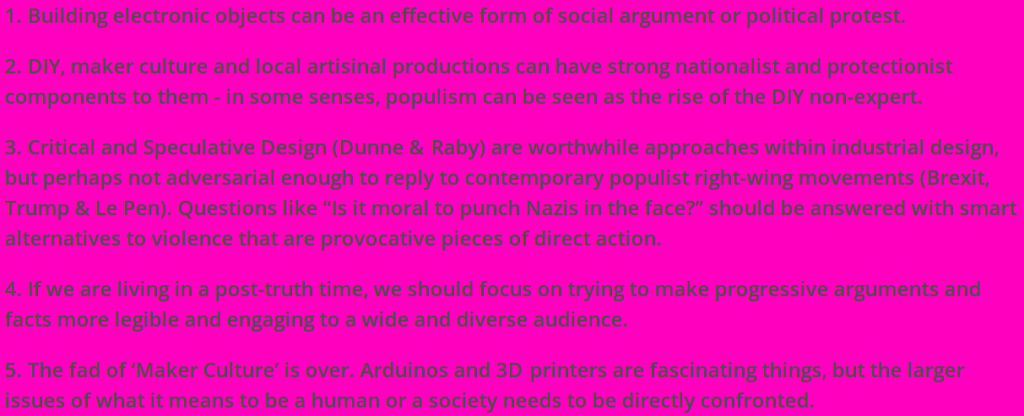
Decline of culture becomes visible as ‘popular’ themes such as sustainability or integration policies are readily adopted but actually serve as mere buzzwords to increase the marketability of events and products. Since it became profitable to sell electronic boards and a variety of accessory components, the prosumer (Ratto, 2012) is bound to available materials and building instructions and not encouraged to experiment or imagine alternatives to already available commercial design. Therefore many important layers of technology get ignored or regarded as not worth exploring due to the fetishisation of the final result. Although focus should be on action oriented making, tactile objects /installations are important when linguistics fail. We have already incorporated digital structures in every social aspect of our lives and it is difficult to observe let alone express them.
The book treasures the craft of DIY technology development, notably in the surveillance /privacy sector, and highlights the pressing need for knowledge in light of the technological advantage of those in power. Backlash provides us with an educational protest kit, including devices for off grid communication and bugging defence. These are functional but not necessarily designed for situations of conflict, rather for inciting a relevant debate among the general public. Phantom Kitty (work in progress) defies spying by authorities without a warrant and the enforced quantification of humans based on evaluations of online activity. It produces arbitrary noise when the user goes offline to obfuscate browsing habits and it is possible to integrate machine learning algorithms at a later stage, which could mimic or create identity patterns. Phantom Kitty features a stunning mechanical rack for keyboard and mouse operation, fed by a program executing search queries and the access of webpages. The project draws on the eeriness of neither knowing to what extent gathered data is exploited, nor against which parameters and targets it is set.
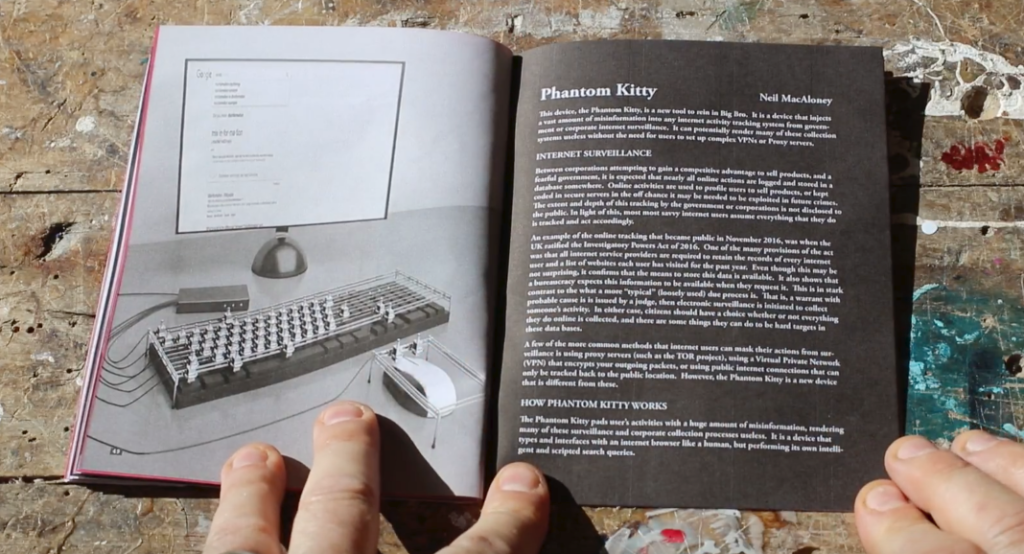
Completely left in the dark about the full scope of exercised control and entailing consequences The transparency grenade by Julian Oliver reminds us that citizens have a right to openness too. The promise of “making the process of leaking information from closed meetings as easy as pulling a pin” is tempting, and in contrast to the opaqueness of corporate and governmental policies, the artwork, other than claiming transparency, is representing it, in its aesthetics, open source software and in the thorough documentation of its engineering process.
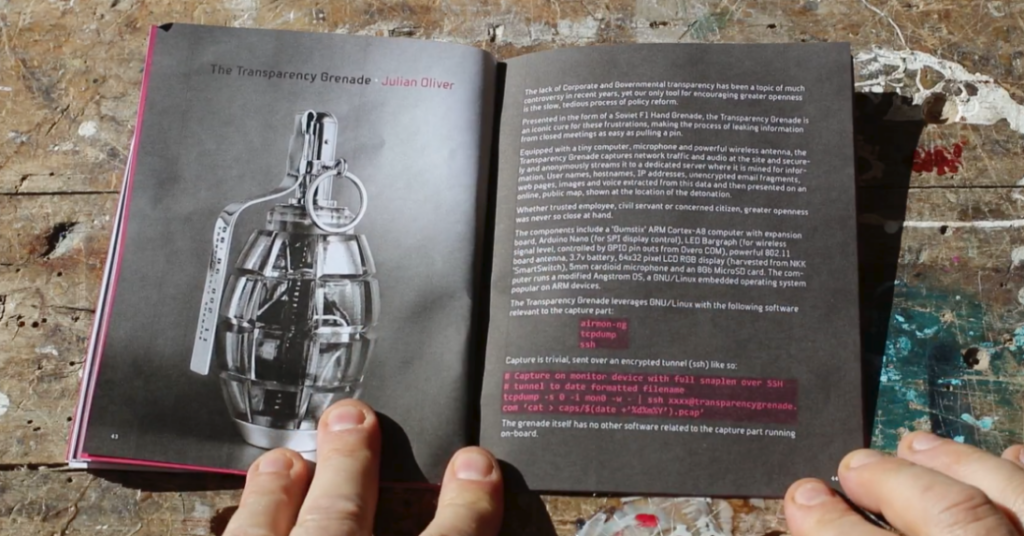
The well written accompanying text of one of my favourite projects PROBOTS describes effective works as “technologies of dissent that work at both the practical level but also the symbolic”, by all means valid for those involved making this book, albeit associating with a manifold of disciplines. The tele-operated protest robot certainly meet those demands and can be sent out by the precarious worker as an answer to the efficiency of contemporary policing, simultaneously a metaphor for the limited potential in the act of present-day corporeal protest. The silencing of political resistance happens far beyond the streets and PROBOTS makes an extraordinary research tool for investigating the organisational power of technology, which prevents social progress already from the outset.
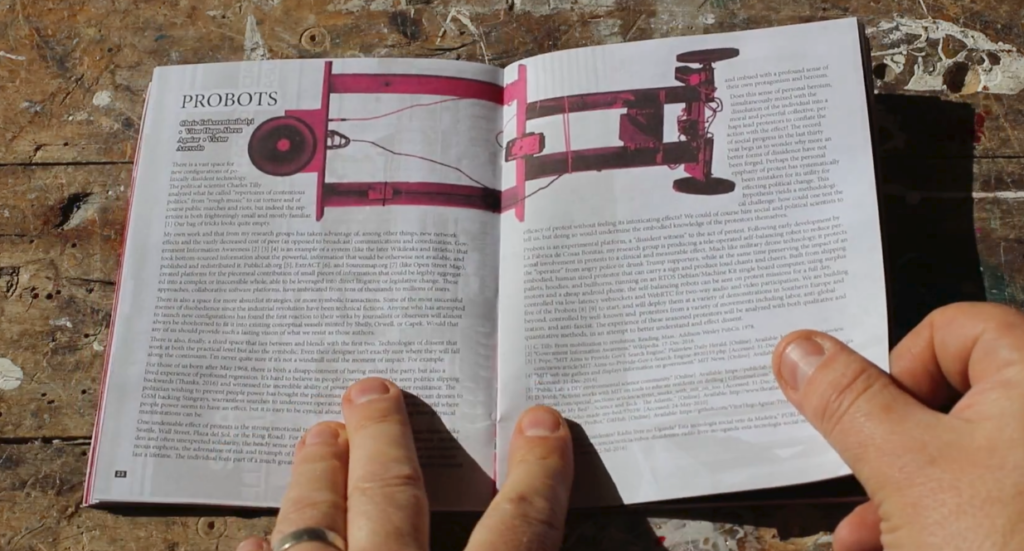
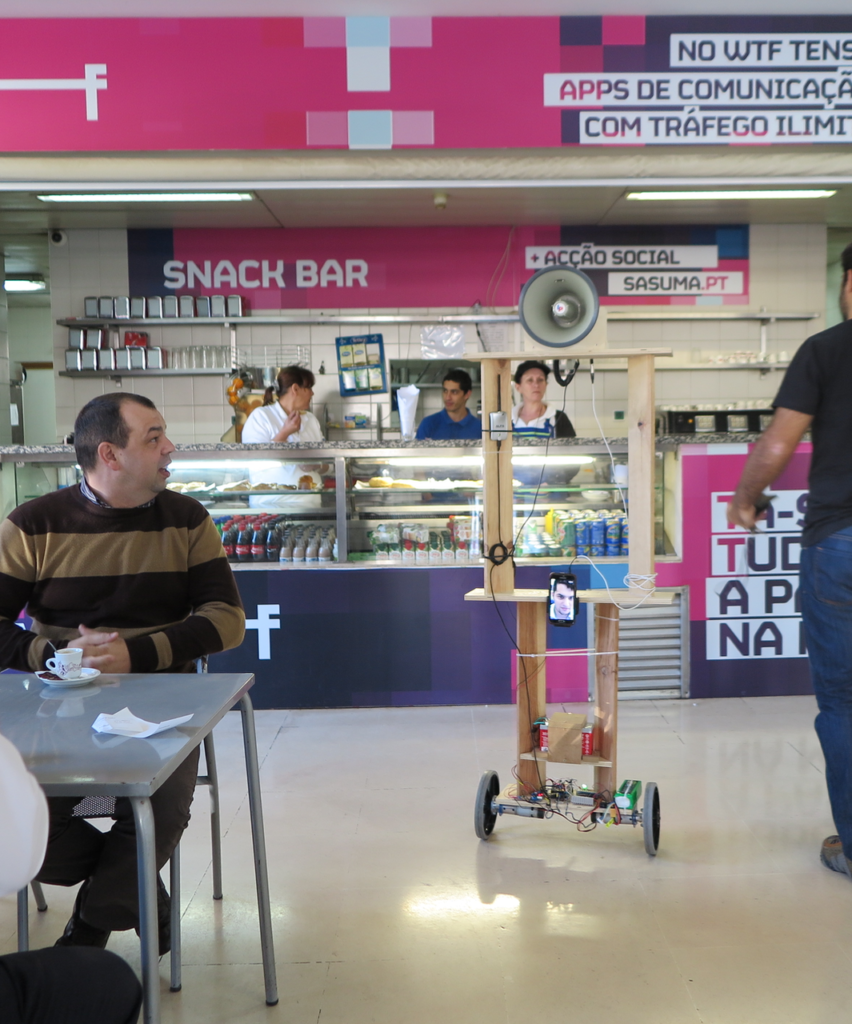
I’ve only recently discovered that e-textiles is not the same as smart clothing. It is a discipline, focusing on the act of making rather than the actual result, albeit in this case impressive too. The makers of The Knitted Radio approached the craft of knitting and electronics without economic reasoning, a factor which primarily informs the engineering process in industrial design. The liberation from conventional standards brought about alternative forms and methods, that is a sweater that also functions as a FM radio transmitter and the skill to knit electronic components /devices such as resistors, capacitors and coil with conductive yarn, an off-the-shelf material. The knitting instructions for the sweater are available online, it can provide a free of cost, independent communications infrastructure. The concept was inspired by the protests on Taksim Square, Istanbul, Turkey, and associated violations of freedom of speech. A Piece of the Pie Chart: Feminist Robotics by Annina Rüst illuminates gender inequity in form of a production line, which decorates edible pies with pie charts, depicting gender ratios in tech affiliated corporate or public organisations.
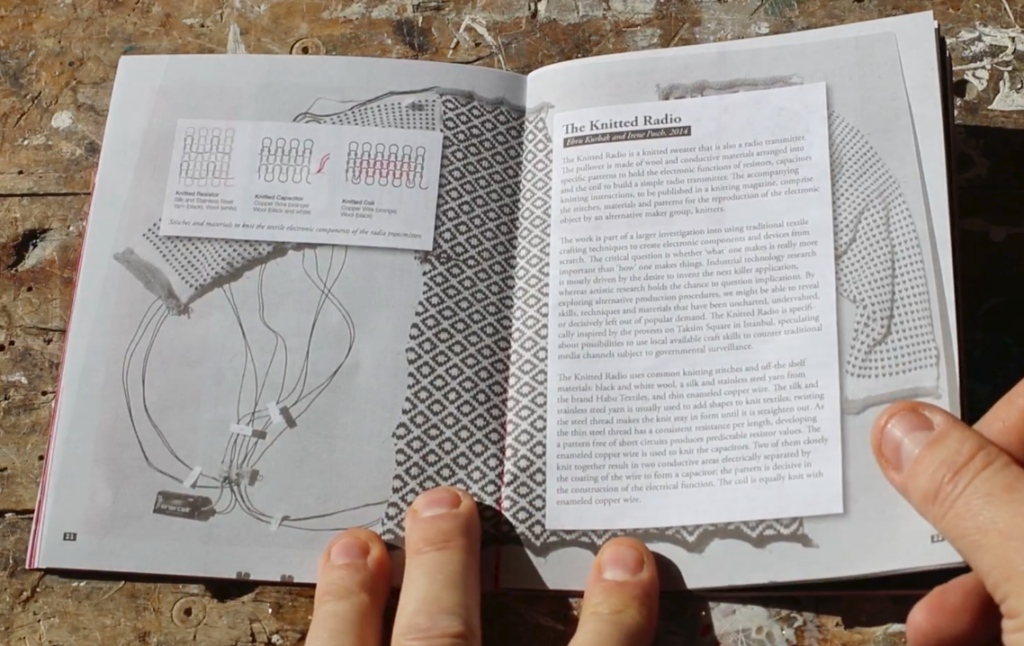
Women are generally underrepresented in tech related workplaces and users of the gallery installation can browse and choose between various data sets on gender in technology, e.g. computer science graduation rates, before an ensemble of household applications and semi-pro robotics sorts the cake. The mere visualisation of data was not radical enough, so the finished pie can be shipped to the institution of which data (and gender inequity) originates, and where it can be consumed accordingly. Women have to be content with the smaller piece of the cake, also symbolic for economic inequality and the missed out experience of working in tech. Rüst was not satisfied with the claim that women are just not interested in tech, and further qualitative research in feminist technology showed that women are rather put off by its hostile macho culture and that technological pedagogy simply failed to inspire girls.
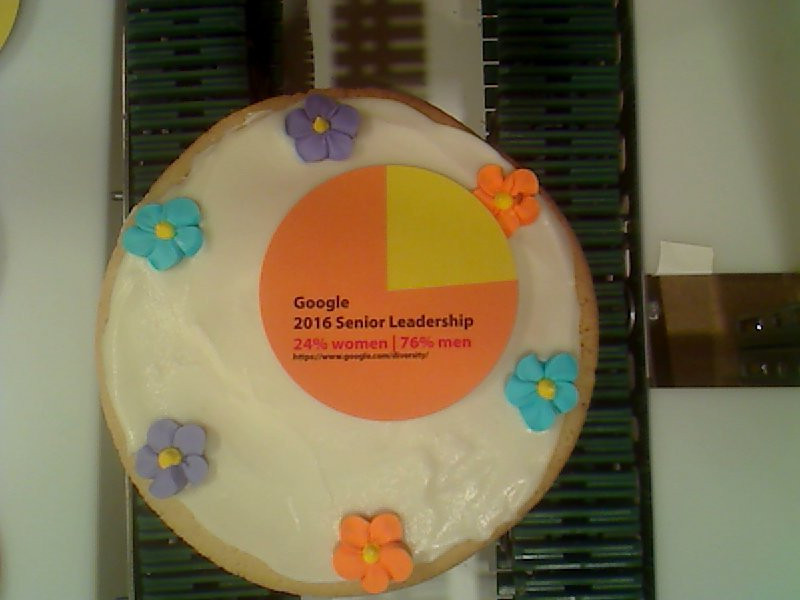
Tweeted image of a finished pie. Source: https://twitter.com/PieChartRobot
The PROTEST issue lives up to its title and emphasizes on projects, which propose hands-on political action and intervention with society, not in terms of providing solutions but to spark much needed discussion and inspire disruptive technology. Disobedient Electronics follows the publishing project Critical Making, which comprised 11 issues, so there is hopefully some more to come.
Exhibition tour as part of the European collaboration project State Machines
Furtherfield Gallery, London
20 May – 25 June 2017
Aksioma, Ljubljana
11 January – 9 February 2018
Gallery Filodrammatica, Drugo More, Rijeka
15 February – 9 March 2018
DOWNLOAD PRESS RELEASE
DOWNLOAD EXHIBITION CATALOGUE
Featuring Jaya Klara Brekke, Pete Gomes, HandFastr, Rhea Myers, Primavera De Filippi of O’Khaos, Terra0, Lina Theodorou and xfx (aka Ami Clarke).
A mysterious and controversial technology is among us. The Blockchain underpins digital currencies and makes possible dramatic new conceptions of global governance and economy, that could permanently enrich or demote the role of humans – depending on who you talk to.
A self-owning forest with ideas of expansion, a self-replicating android flower, a tale of lost innocence, a DIY money making rig, a Hippocratic Oath for software developers, a five minute marriage contract; this exhibition presented by Furtherfield shows us life with blockchain technologies – through artworks by Jaya Klara Brekke, Pete Gomes, Rhea Myers, Primavera De Filippi of O’Khaos, Terra0, Lina Theodorou and xfx (aka Ami Clarke).
Imagine a world in which responsibility for many aspects of life (reproduction, decision-making, organisation, nurture, stewardship) are mechanised and automated. Transferred, once and for all, from natural and social systems into a secure, networked, digital ledger of transactions and computer-executed contracts.
The artworks in this exhibition envision future world-making by machines, markets and natural processes, free from interference by states and other human institutions.

The exhibition is part of a large scale programme of publications, workshops and talks that brings together leading international artists and writers from across the globe. Launching at Furtherfield Gallery in London’s Finsbury Park 19 May – 25 June 2017, the exhibition will then tour to Aksioma (Ljubljana, Slovenia) in October 2017, as part of State Machines: Art, Work, and Identity in an Age of Planetary-Scale Computation, a collaboration between Furtherfield, Aksioma, Drugo more (HR), Institute of Network Cultures (NL) and NeMe (CY).
‘Artists Re:thinking the Blockchain’ produced in collaboration with the experimental publishing group Torque and Liverpool University Press will be launched on 23 June 2017. Contributors include Helen Kaplinsky, Rhea Myers, Hito Steyerl, Ben Vickers and Cecilia Wee. Chris Speed and the team from the Design Informatics Department at Edinburgh University will be embedding a new proto-blockchain experiment throughout print and digital versions, enabling readers to ‘like’ different parts of the book, sub-linked to a financial trading algorithm.
Manpowertop – free workshop by Network Diagnostics
Saturday 10 June, 2-5pm, Furtherfield Commons
Join Network Diagnostics (Dave Young and Niall Docherty) to discover how the promotional media of Silicon Valley companies envision the role of technology in society. In partnership with Antiuniversity
Booking is essential for this FREE event
GeoCoin – Bodystorming Blockchain in the City
Friday 23 June 10am – 5pm, Furtherfield Commons
A day of design-based research using the GeoCoin platform to explore novel ways of reconsidering and reinventing currency through location-specific value transactions. How can money be reprogrammed to interact with or react to everyday practices of value exchange in and around the city? Explore these and more questions with the Design Informatics team from the University of Edinburgh.
Booking is essential for this FREE event
This workshop is part of the ESRC funded research project After Money lead by Design Informatics at the University of Edinburgh.
Book launch – Artists Re:thinking the Blockchain
Friday 23 June, 6-8pm, Furtherfield Gallery
‘Artists Re:thinking the Blockchain’ produced in collaboration with the experimental publishing group Torque and Liverpool University Press
Wedding Event Day – Blockchain special
Saturday 24 June 11am – 5pm, Furtherfield Gallery
Ever wanted to join your partner in bitcoin matrimony? Or wanted to join another partnership for a short time only? You’ve come to the right place. For this day only, you can record your short-term bitcoin union via Handfastr on the blockchain in an immutable and ever growing ledger of bitcoin marriages at Furtherfield Gallery. A project developed by the Design Informatics team at Edinburgh University in collaboration with James Stewart, Max Dovey & Corina Angheloiu.
This project is part of the ESRC funded research project After Money lead by Design Informatics at the University of Edinburgh.
Book Here
Furtherfield Gallery
McKenzie Pavilion
Finsbury Park, London, N4 2NQ
Visiting Information
Furtherfield Gallery is supported by Haringey Council and Arts Council England
This project has been funded with the support from the European Commission. This communication reflects the views only of the author, and the Commission cannot be held responsible for any use which may be made of the information contained therein.